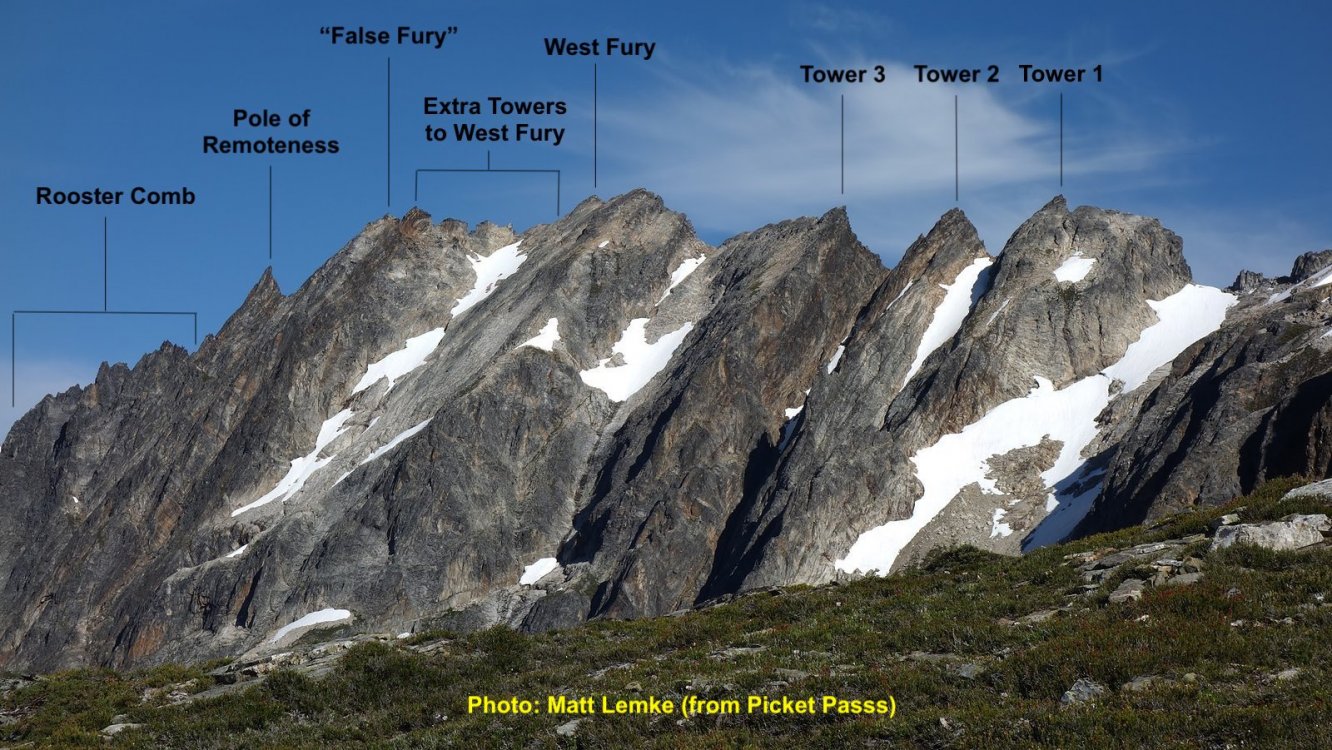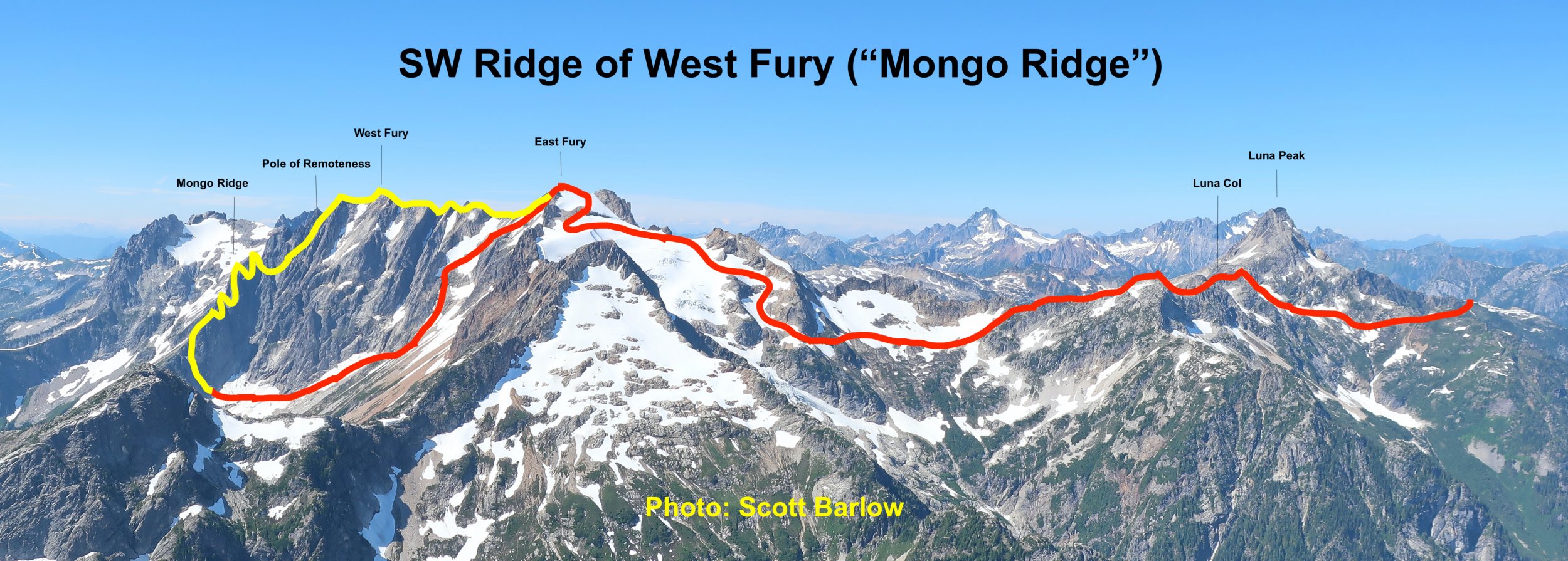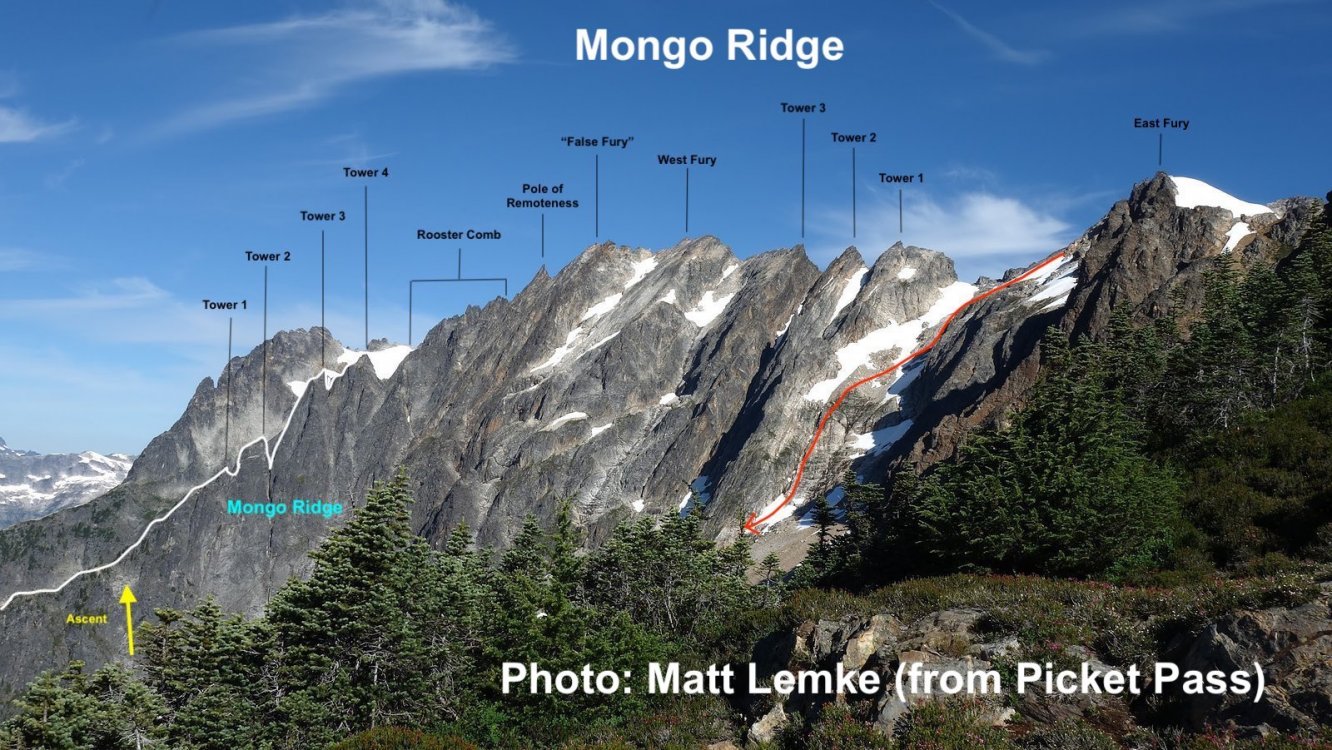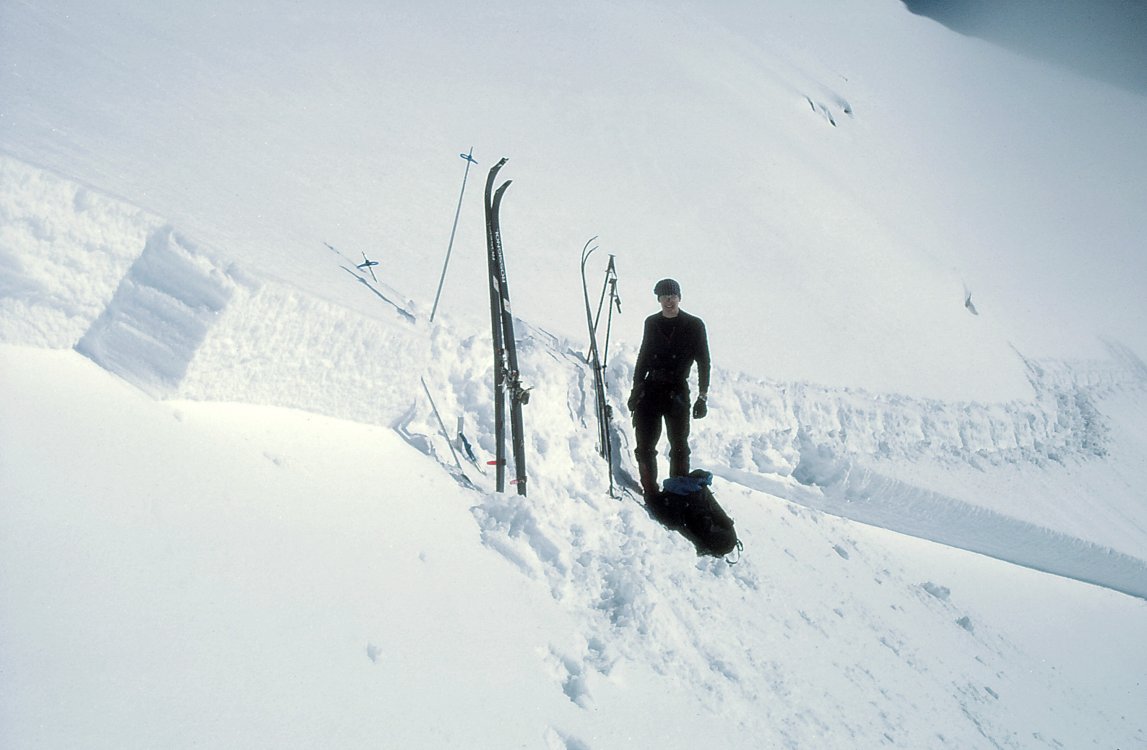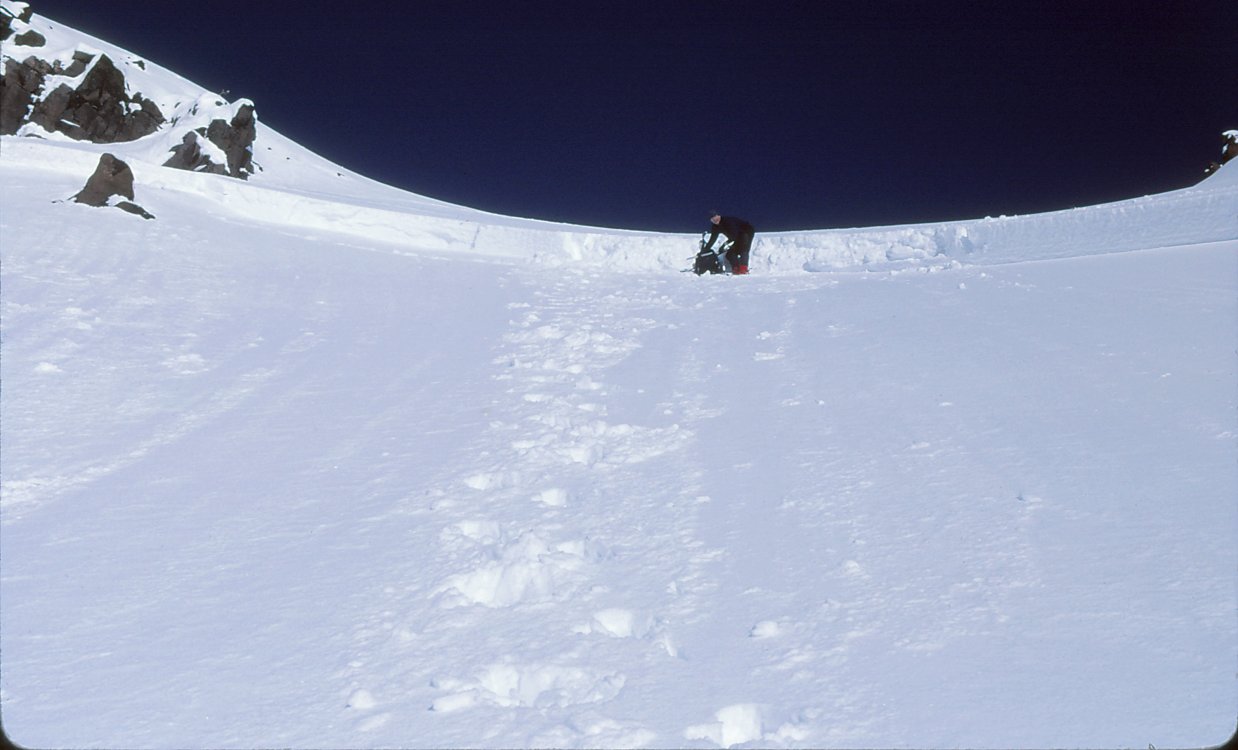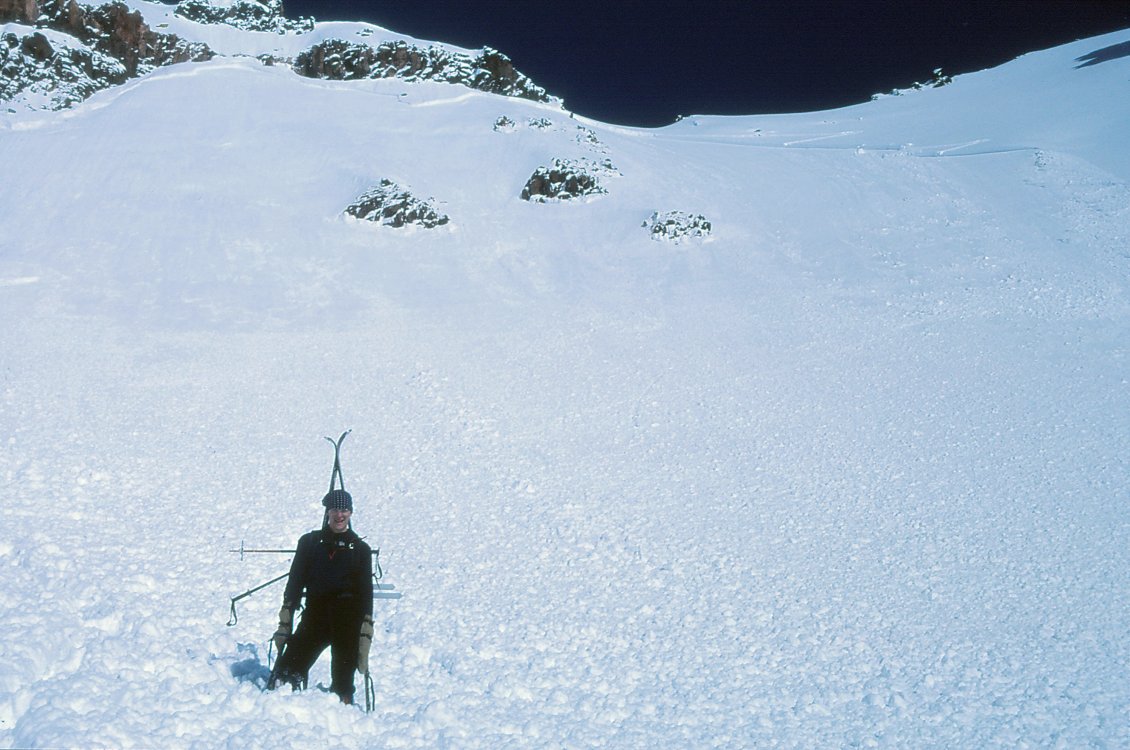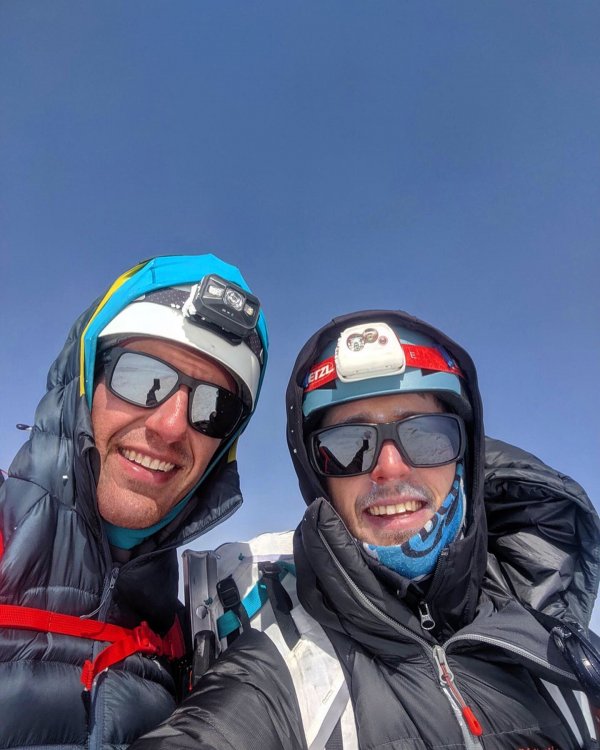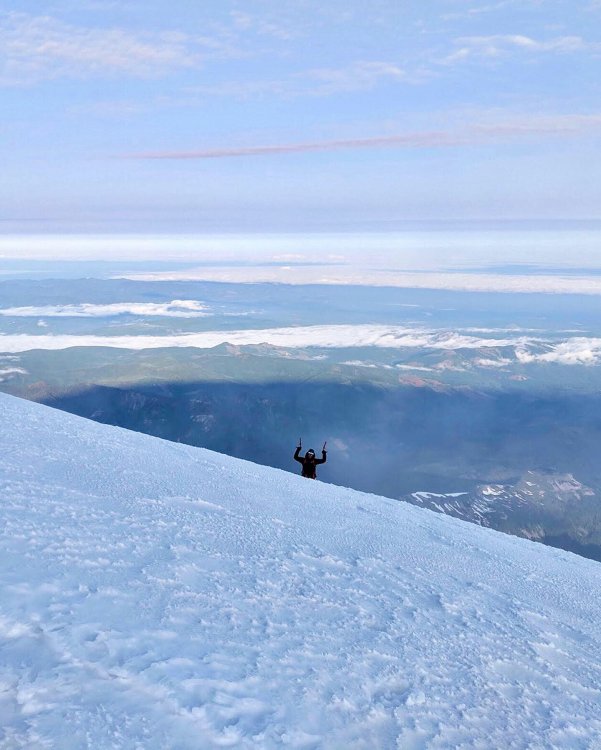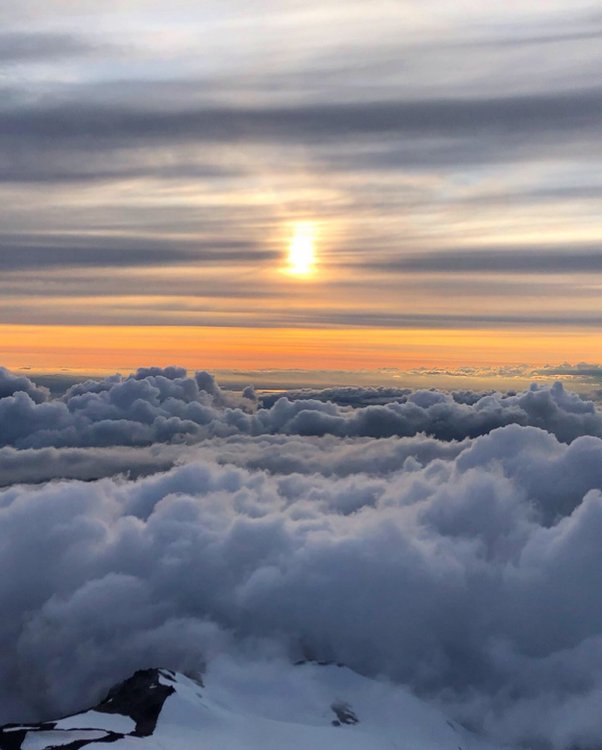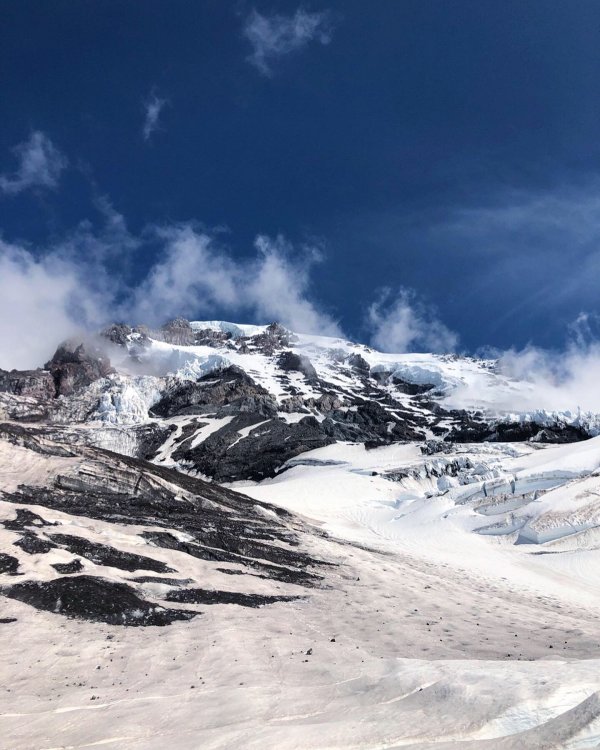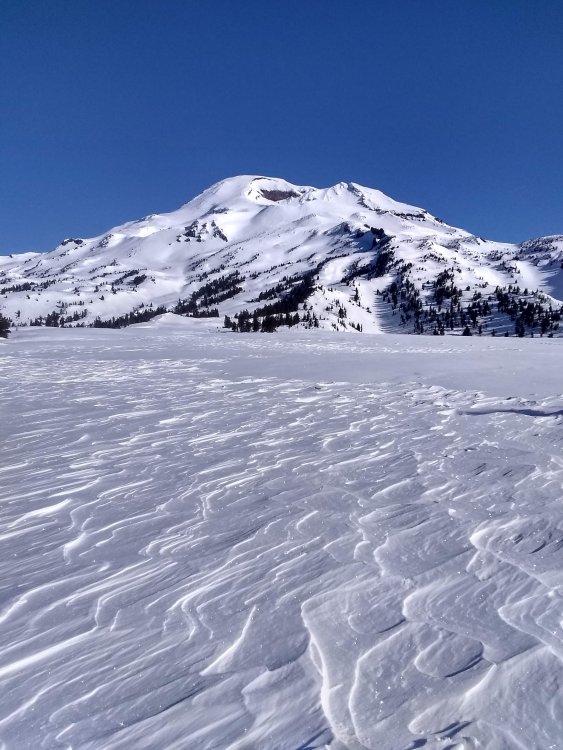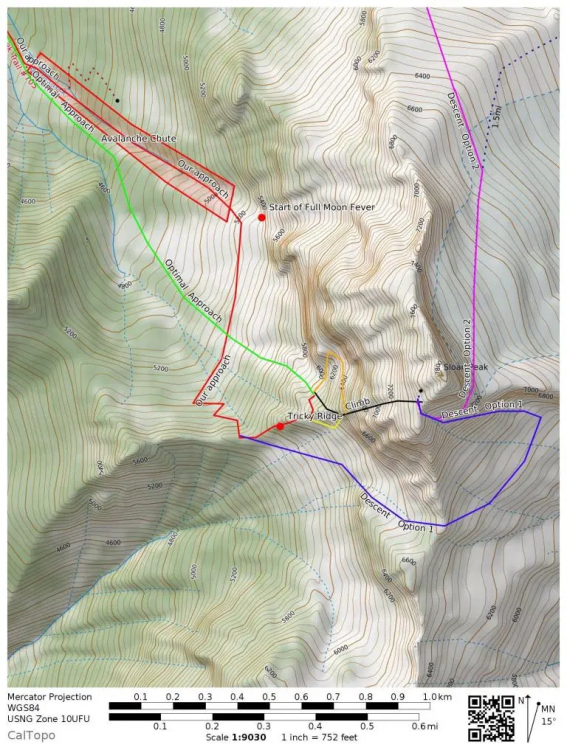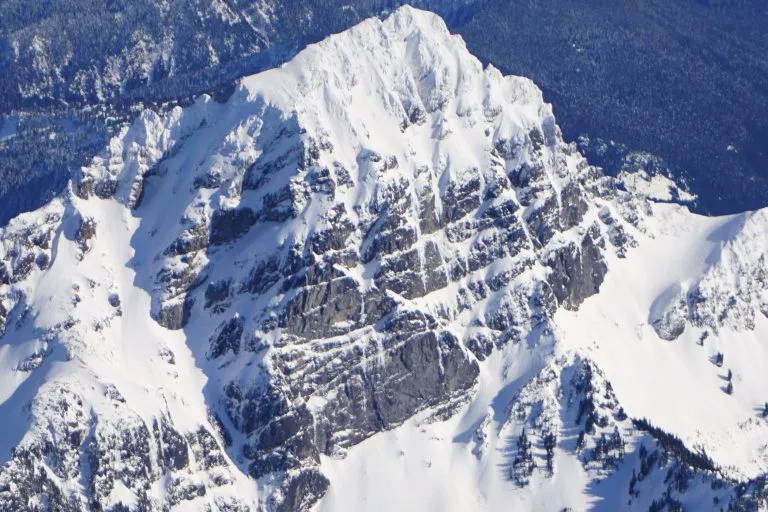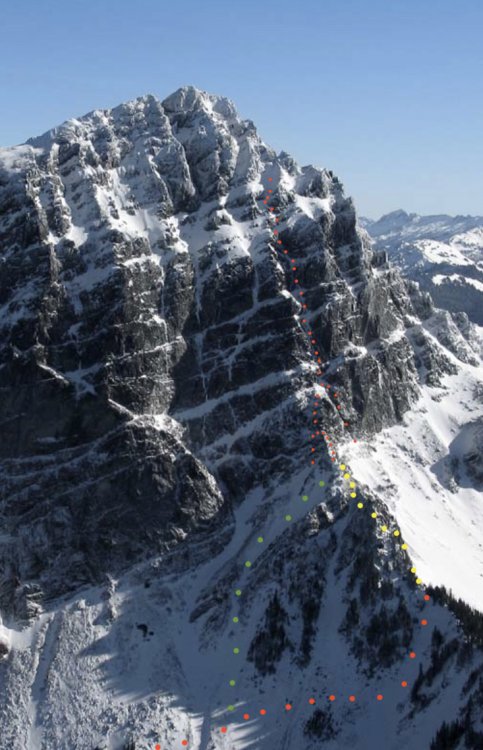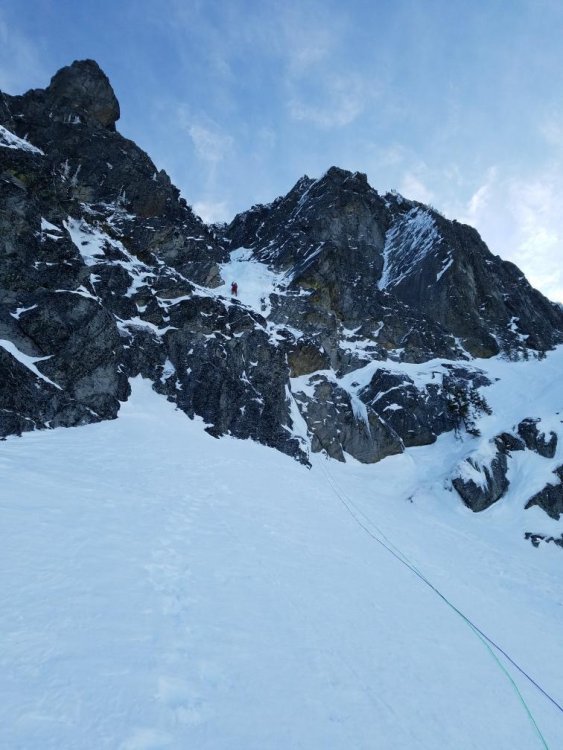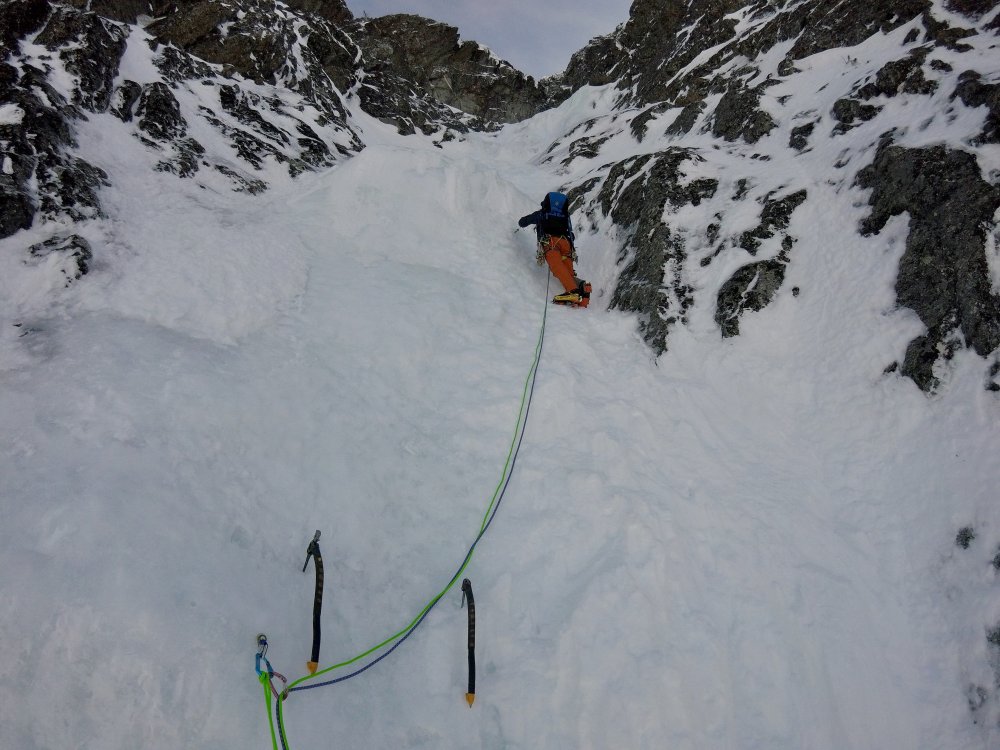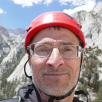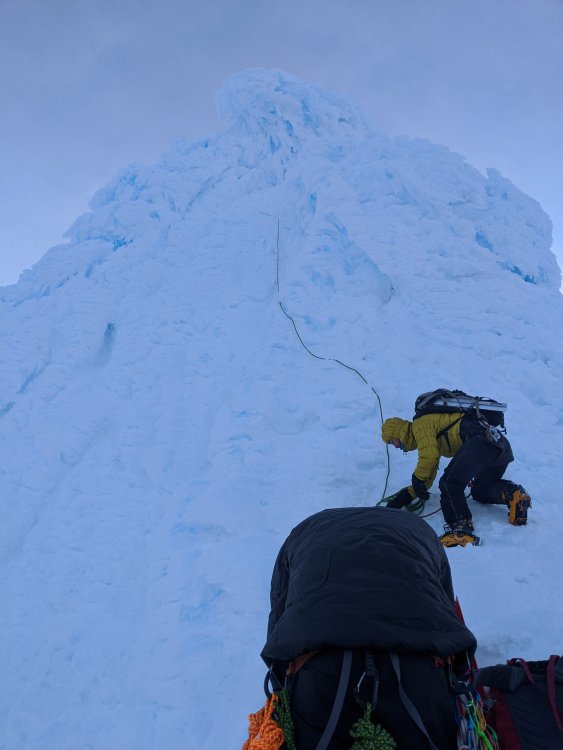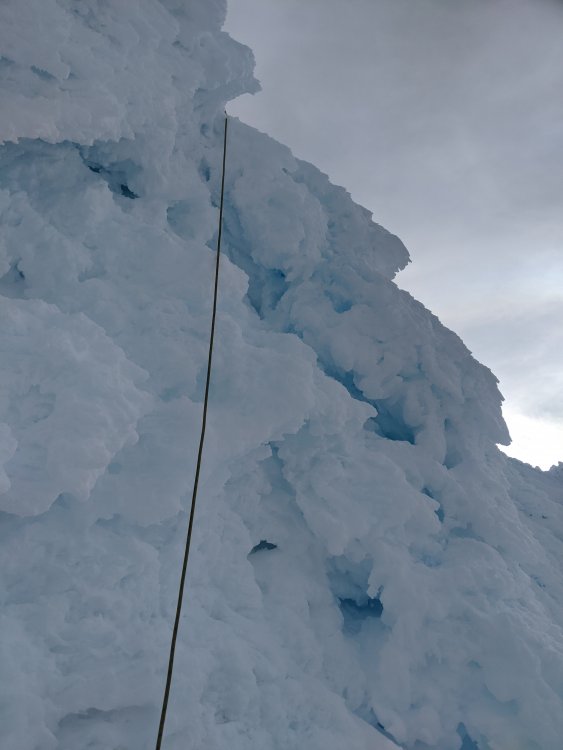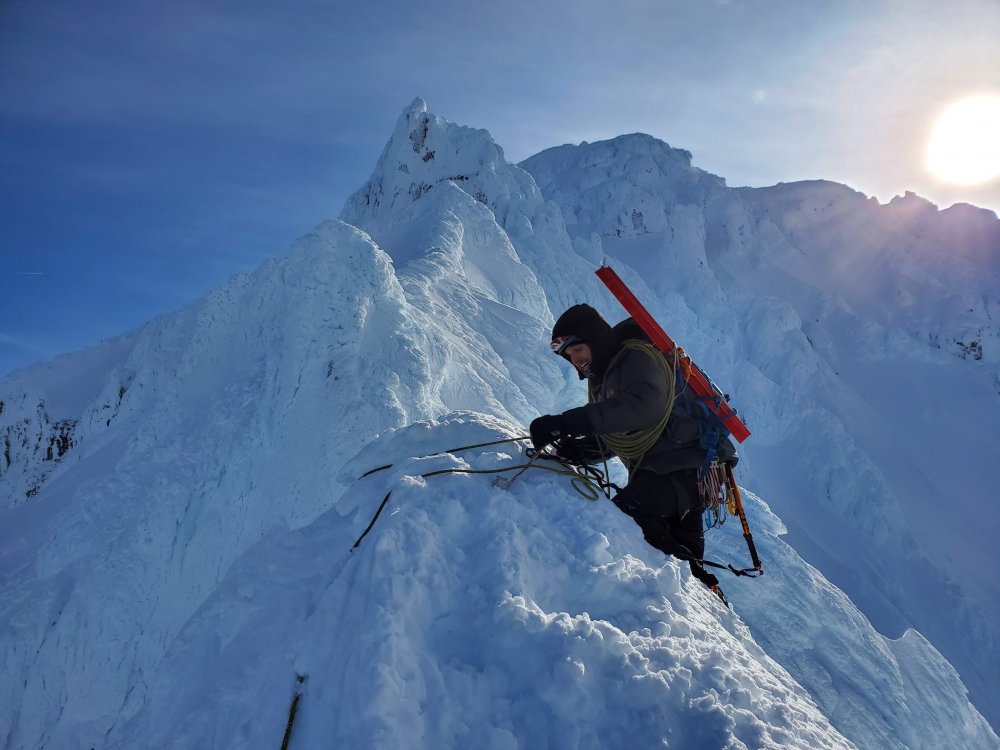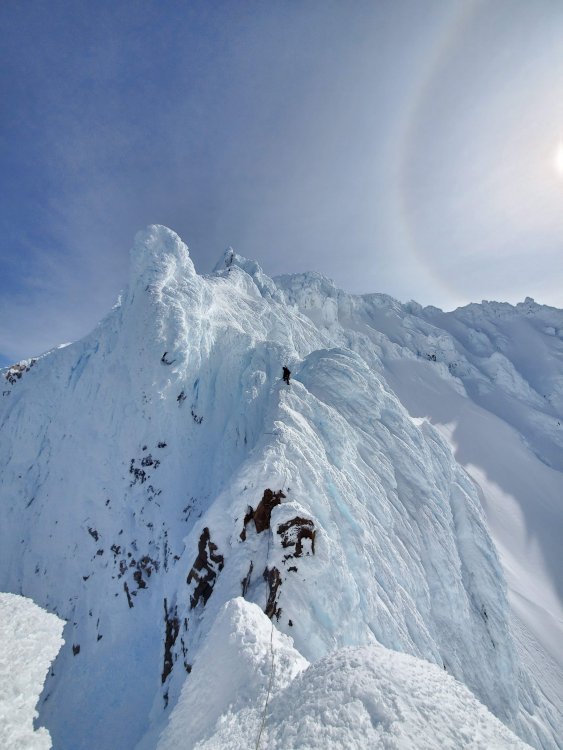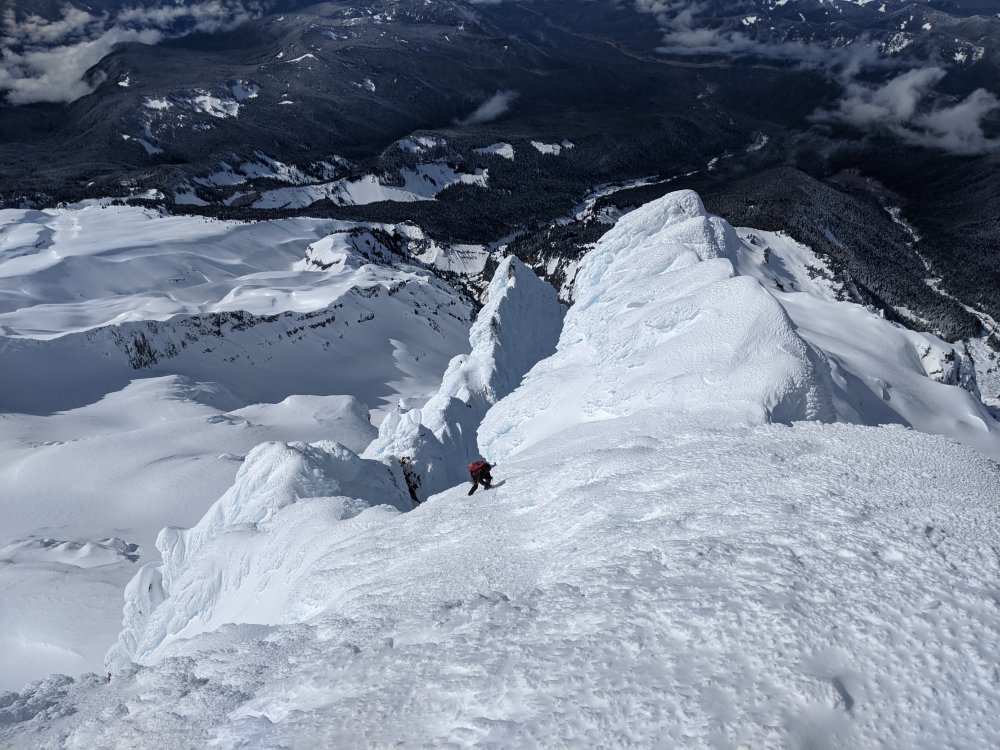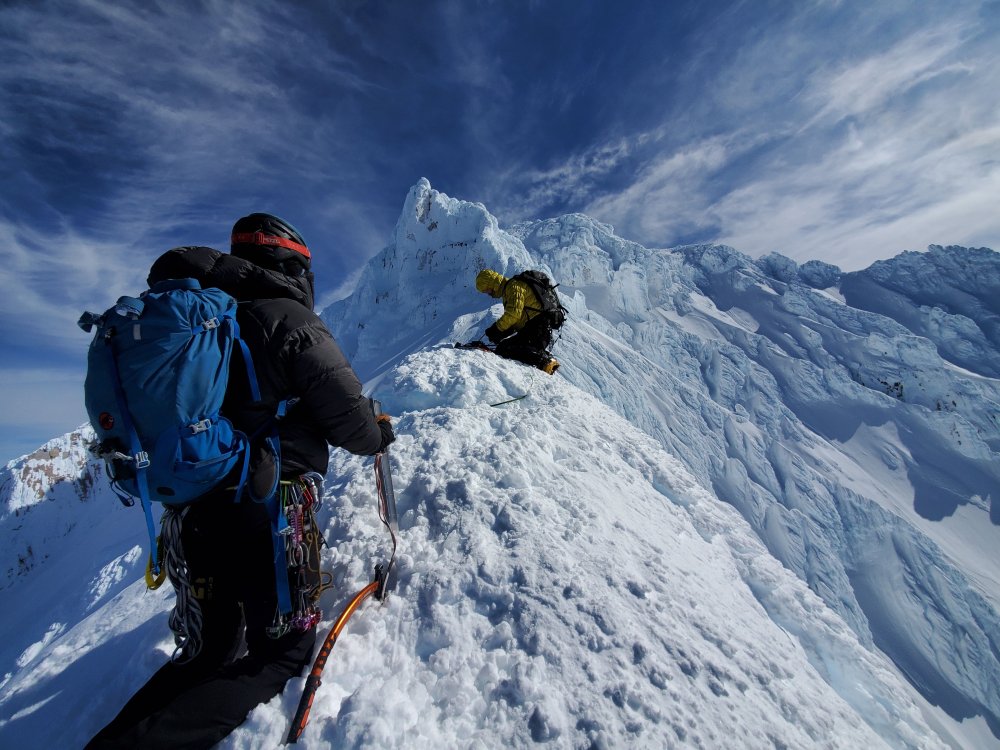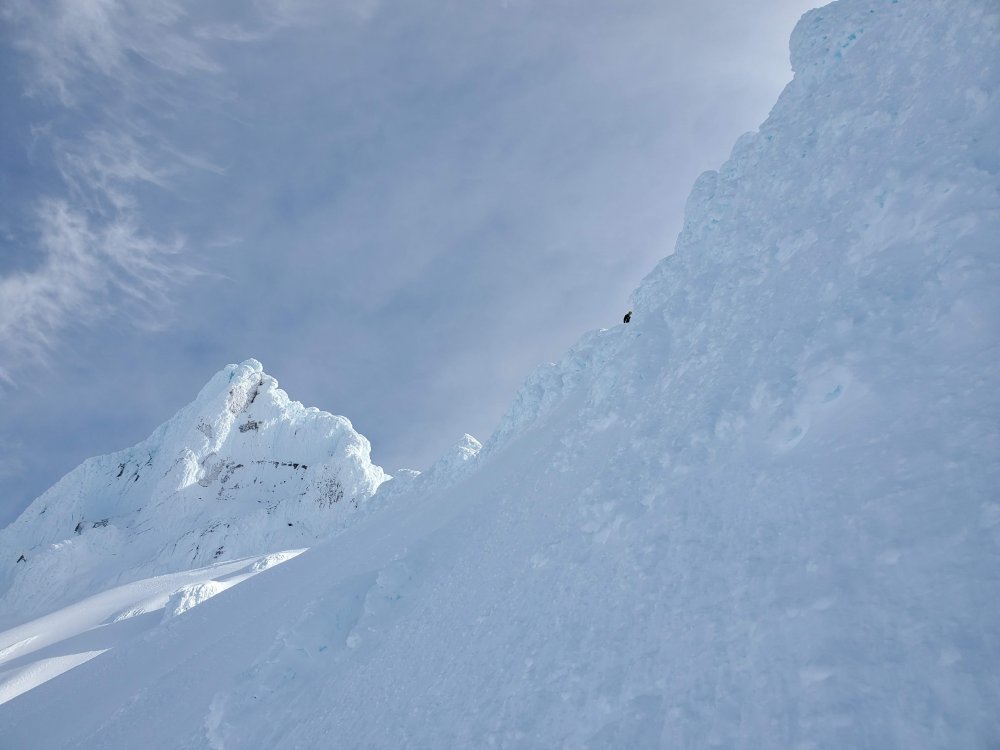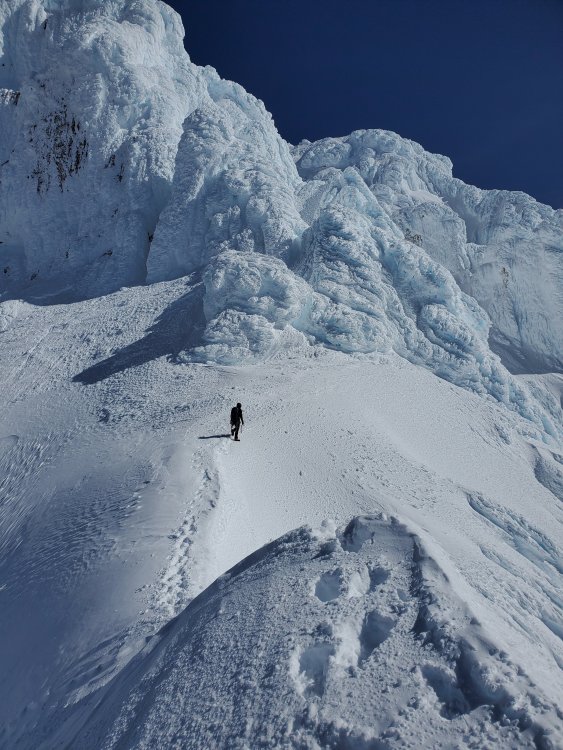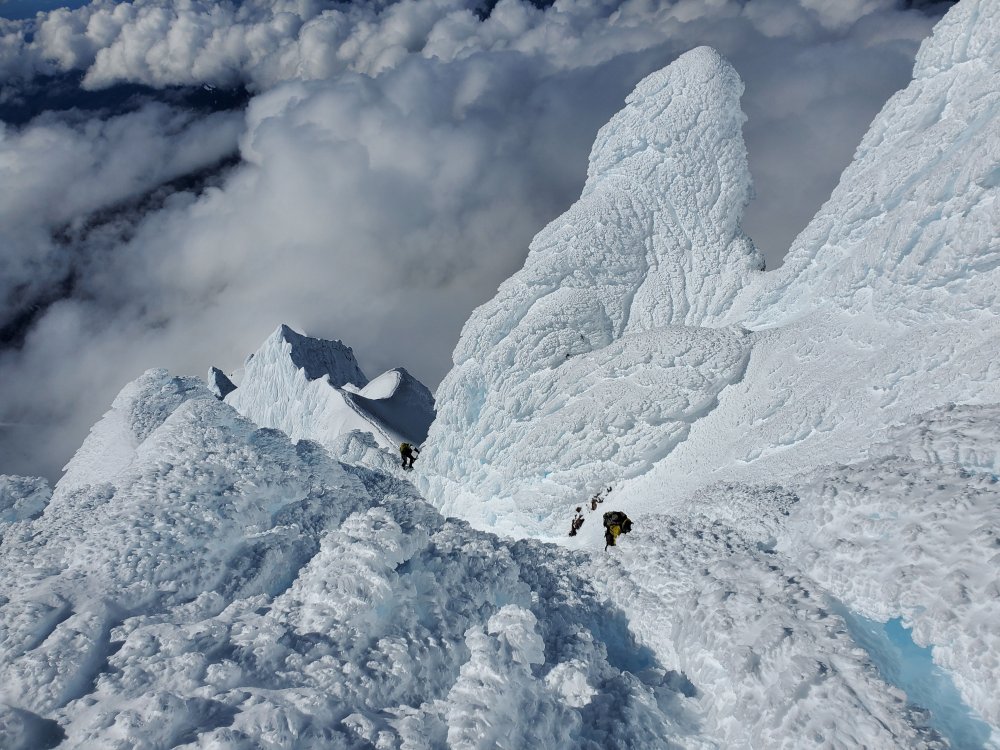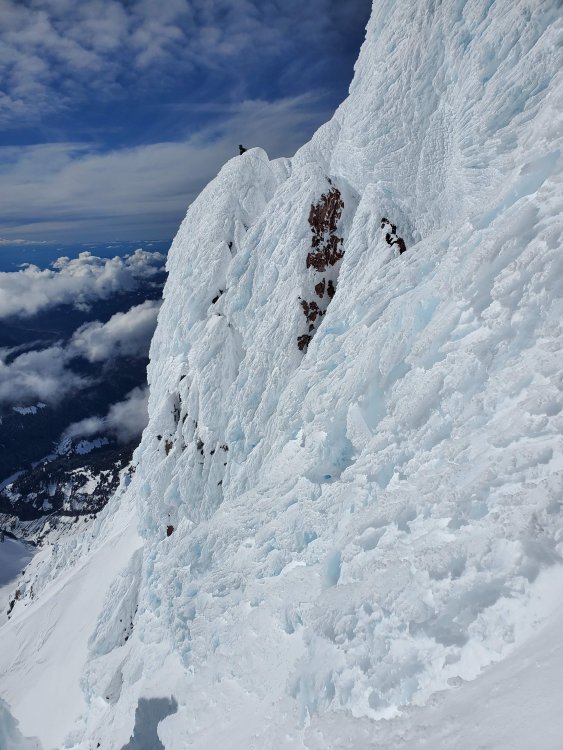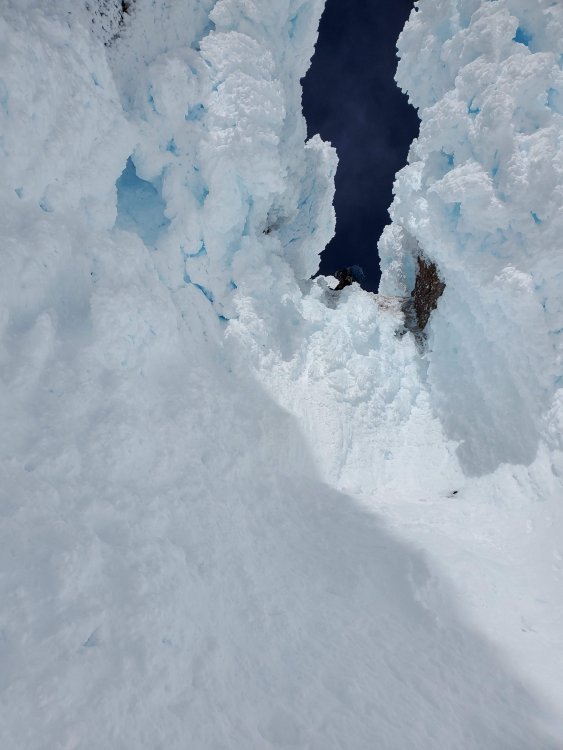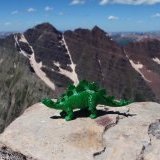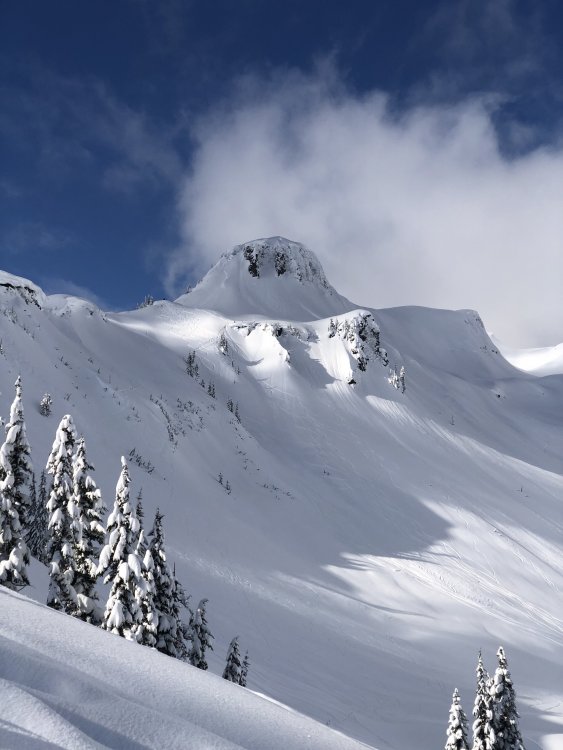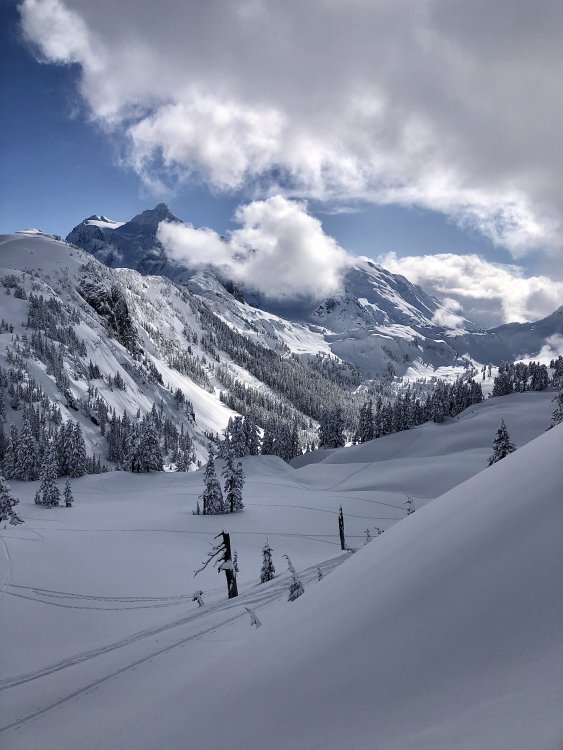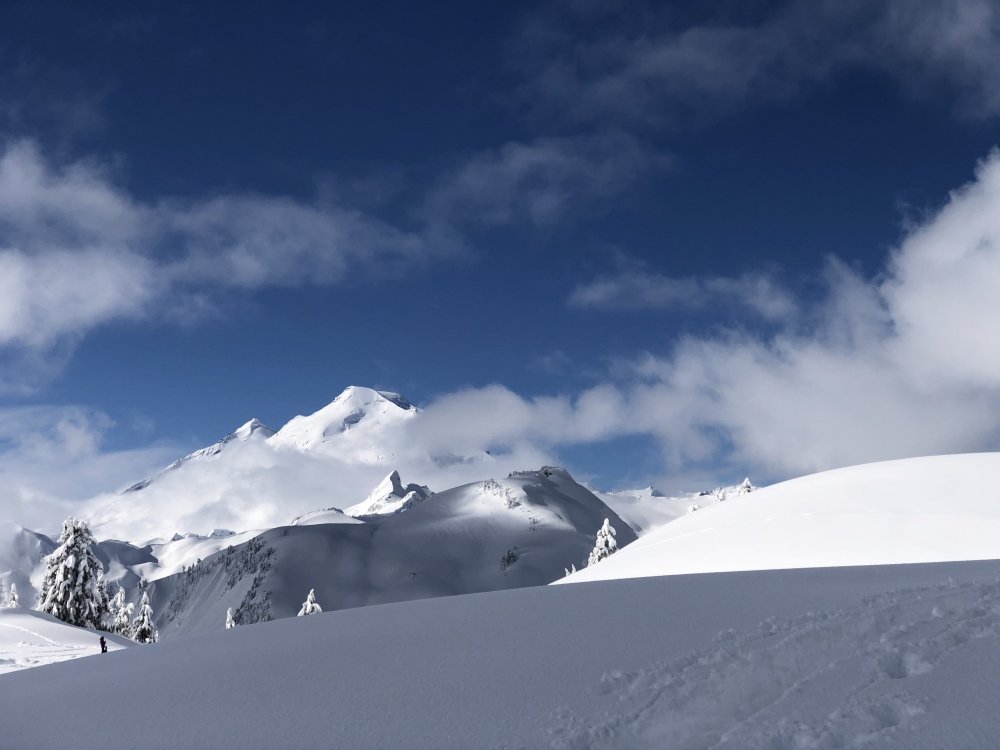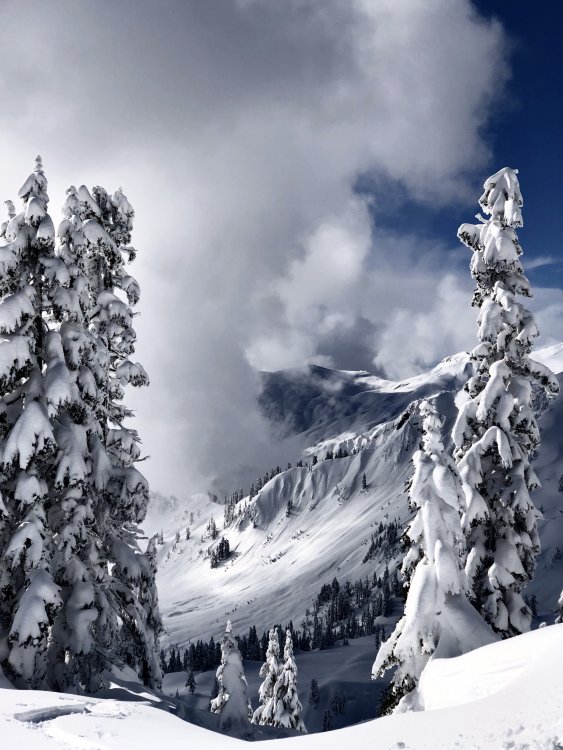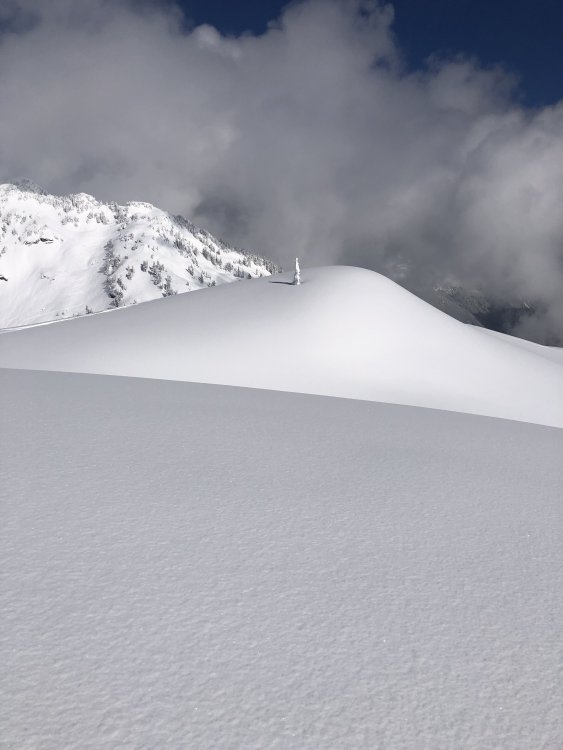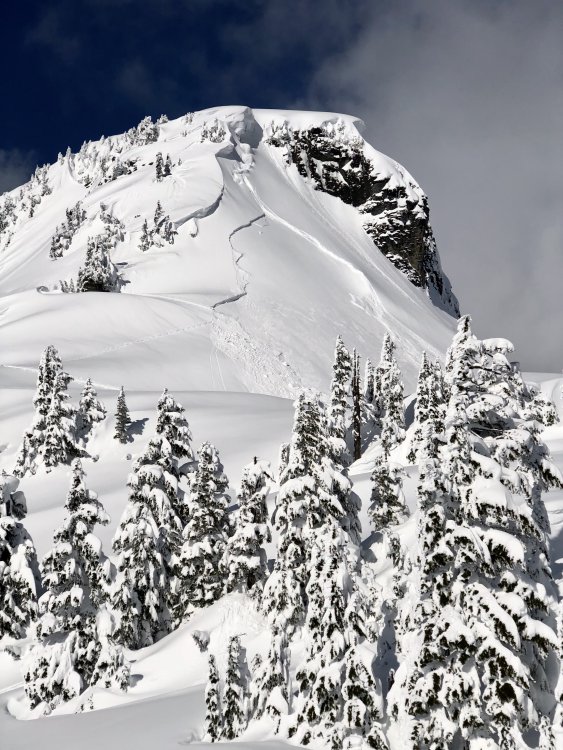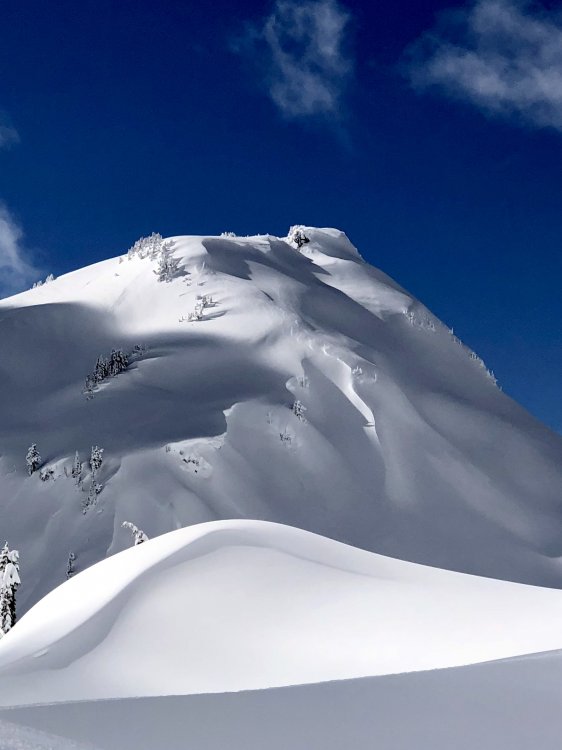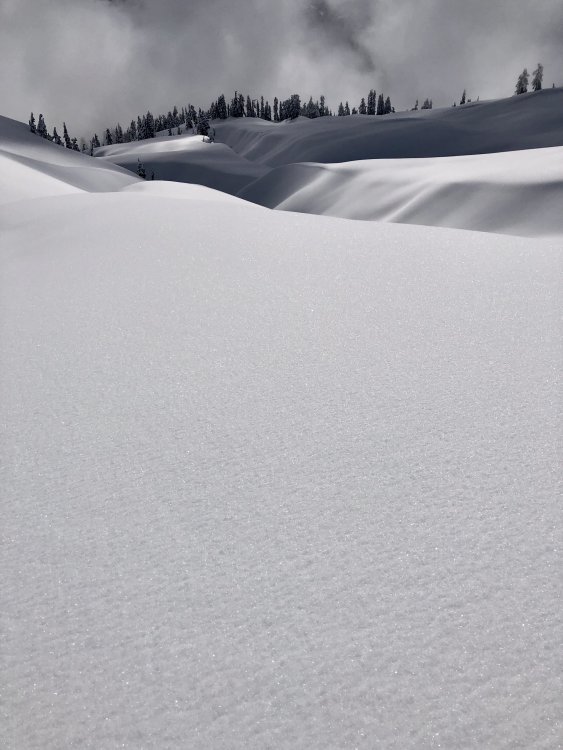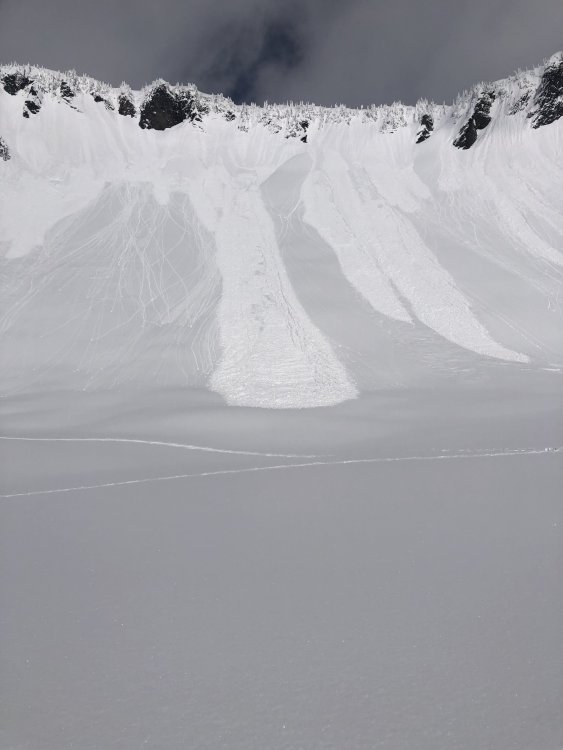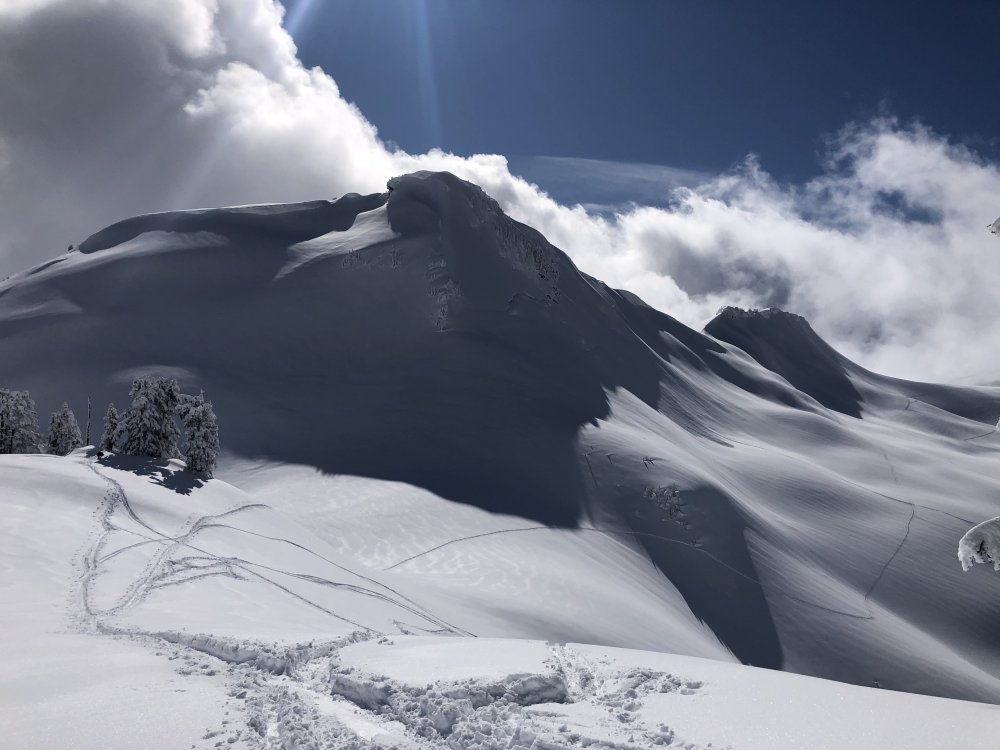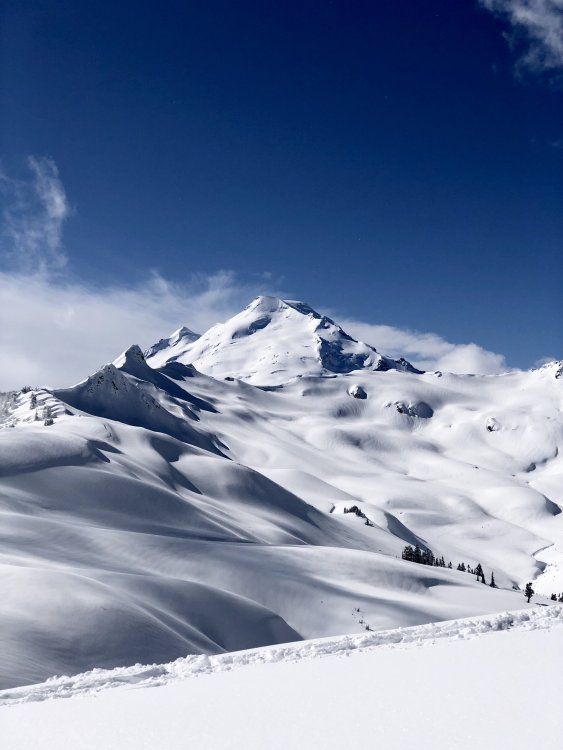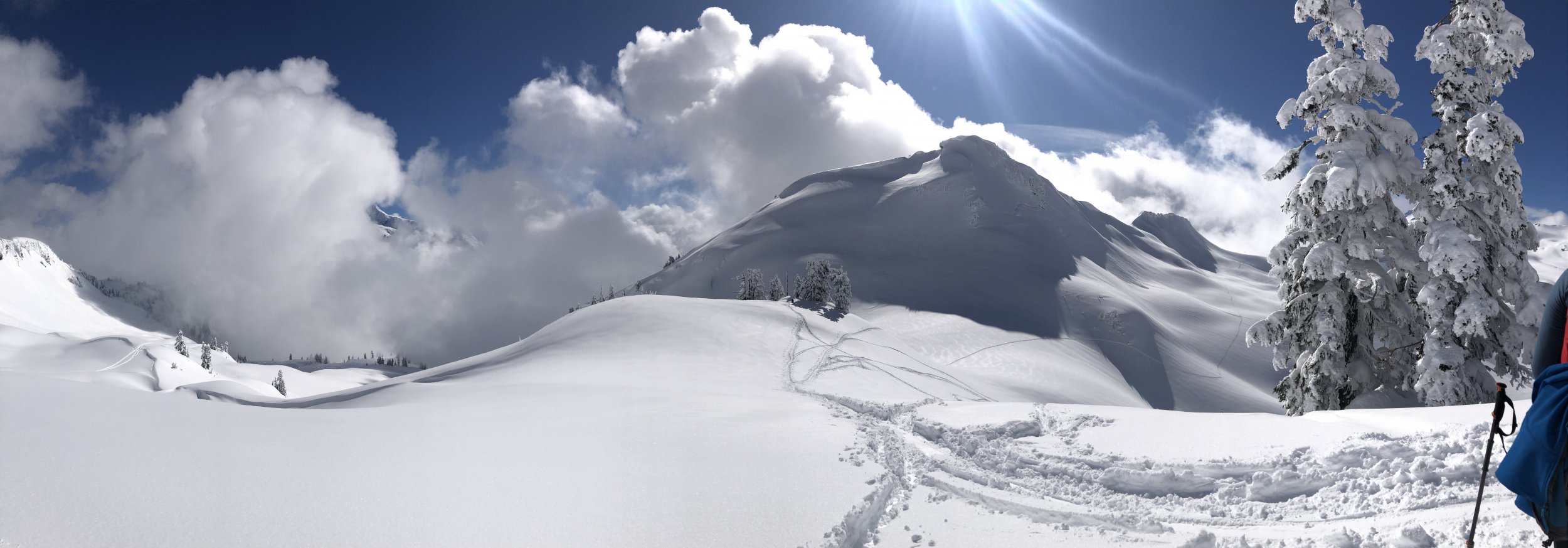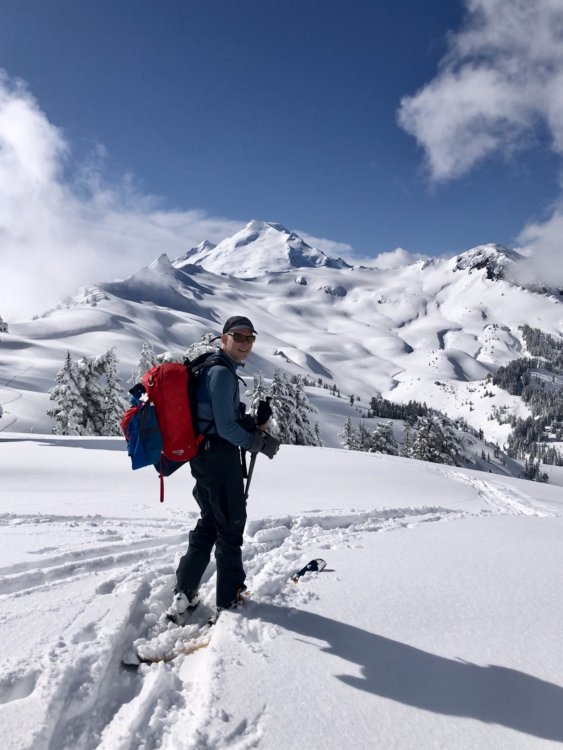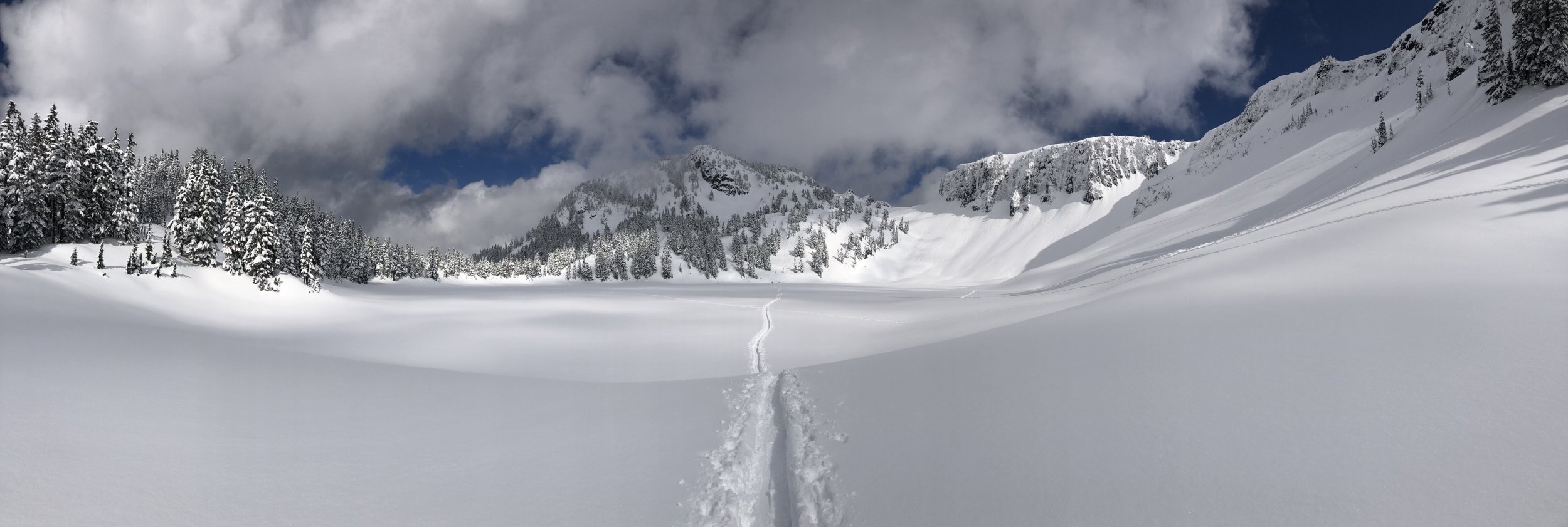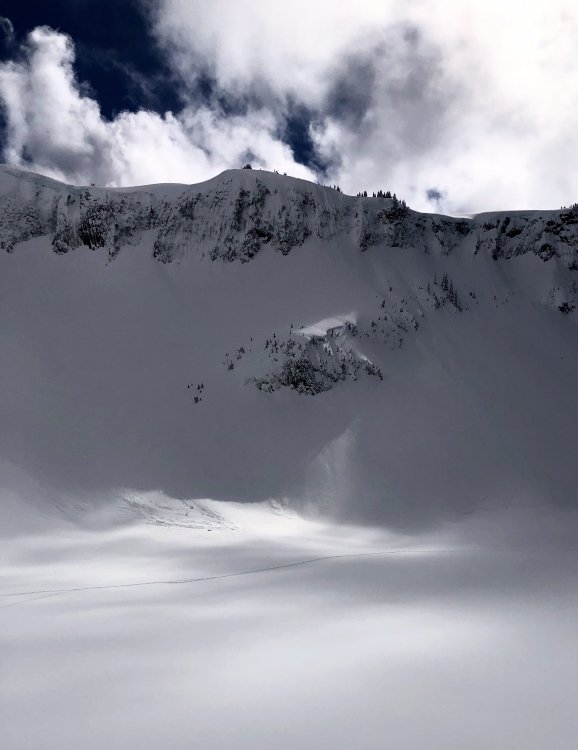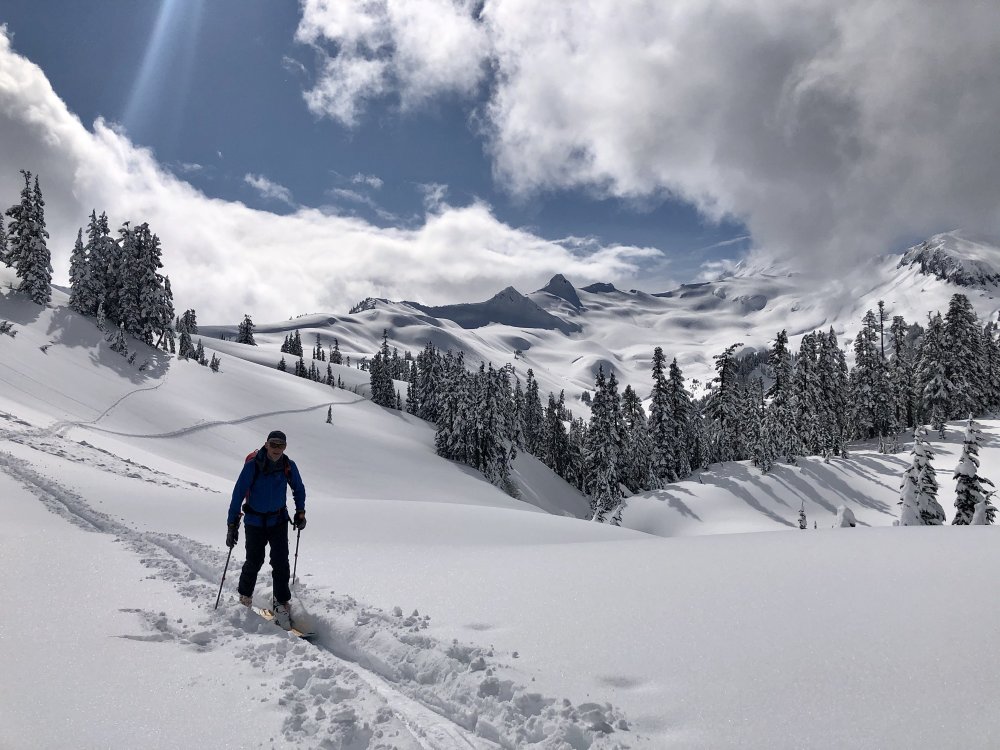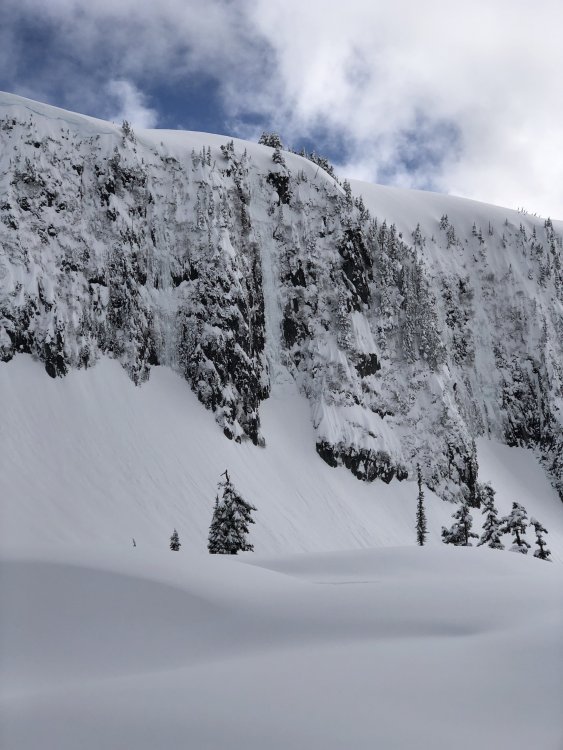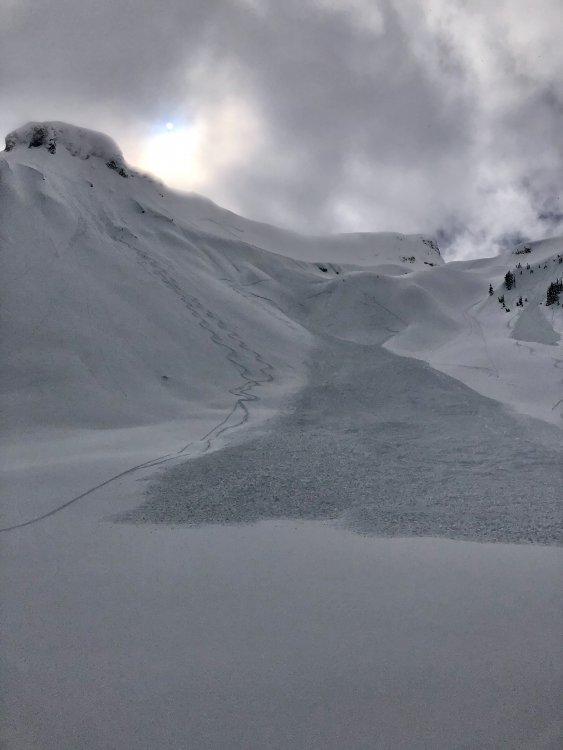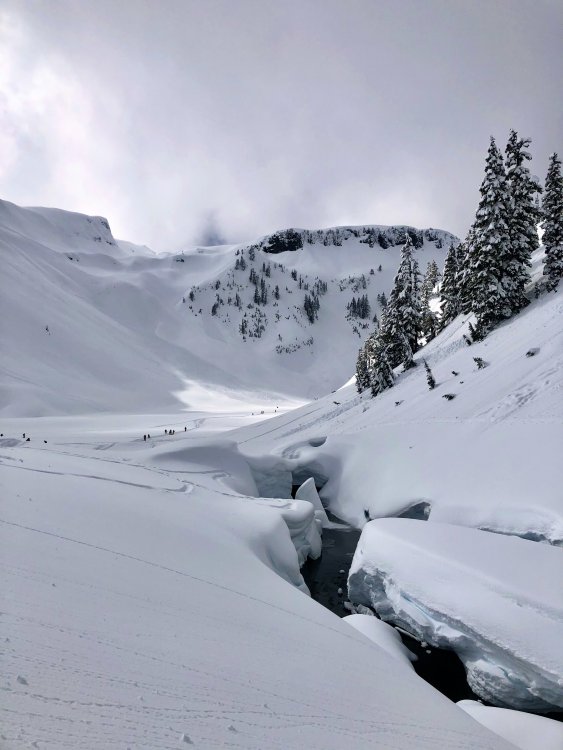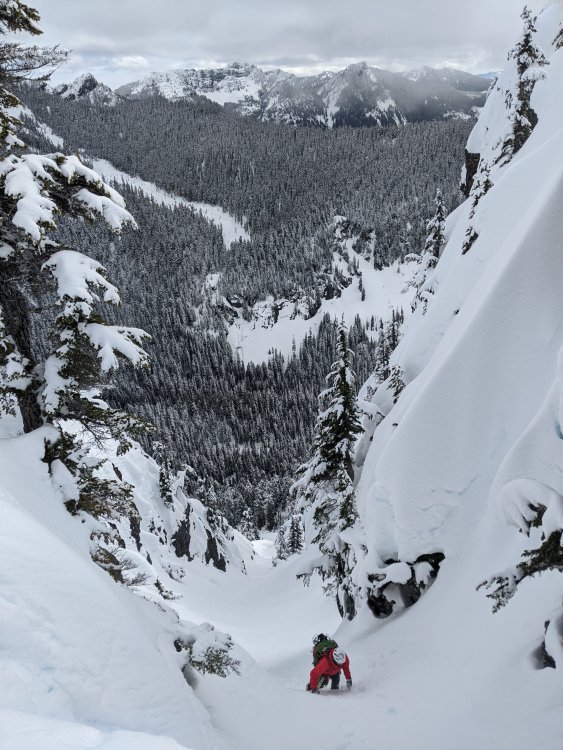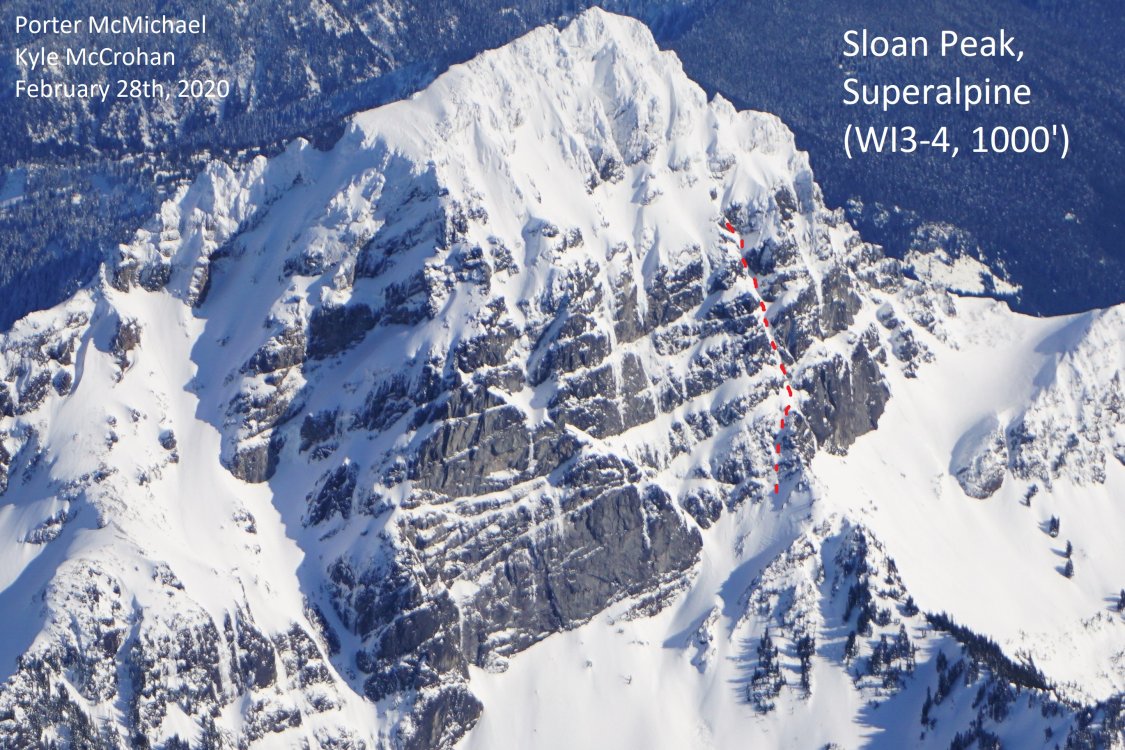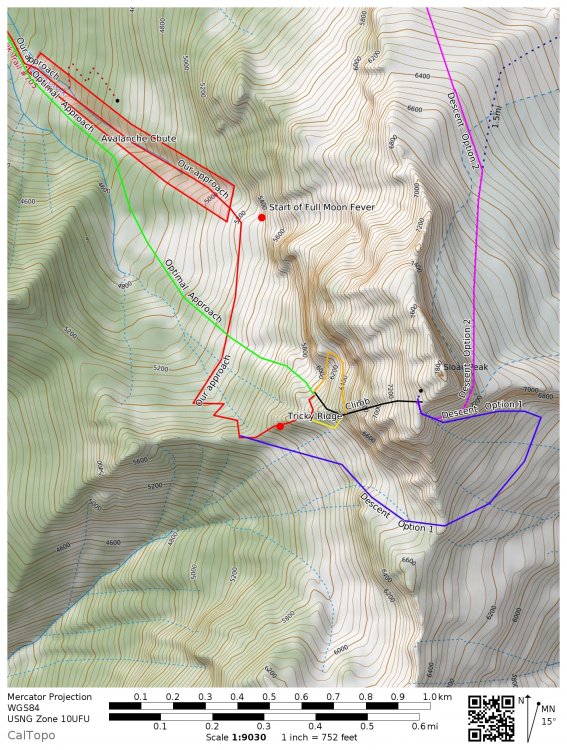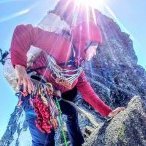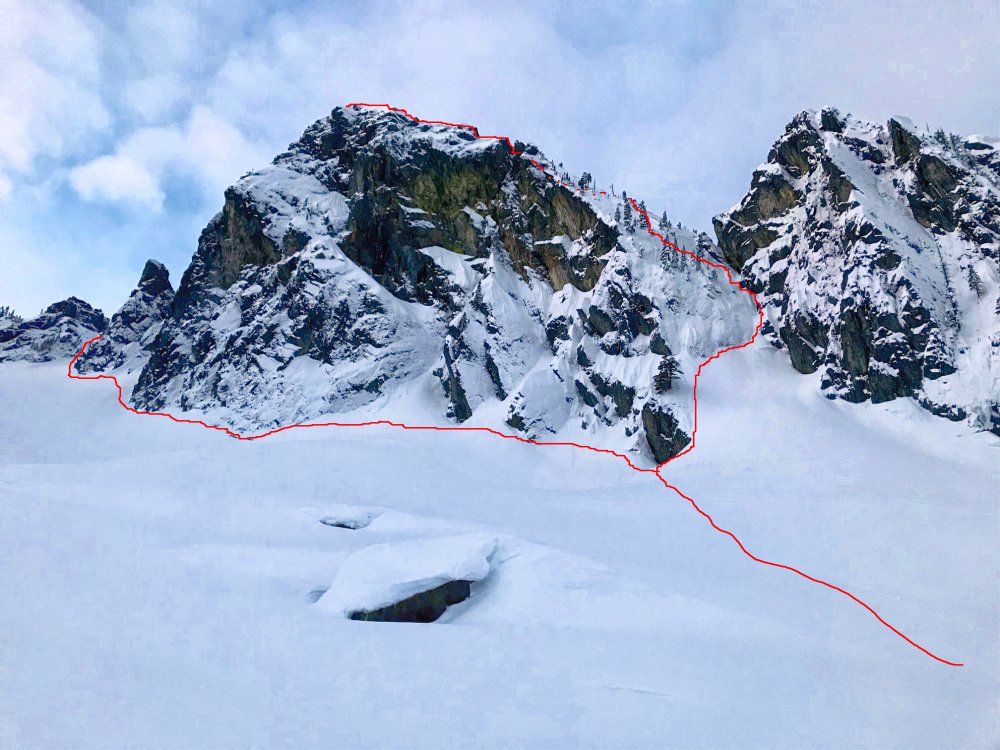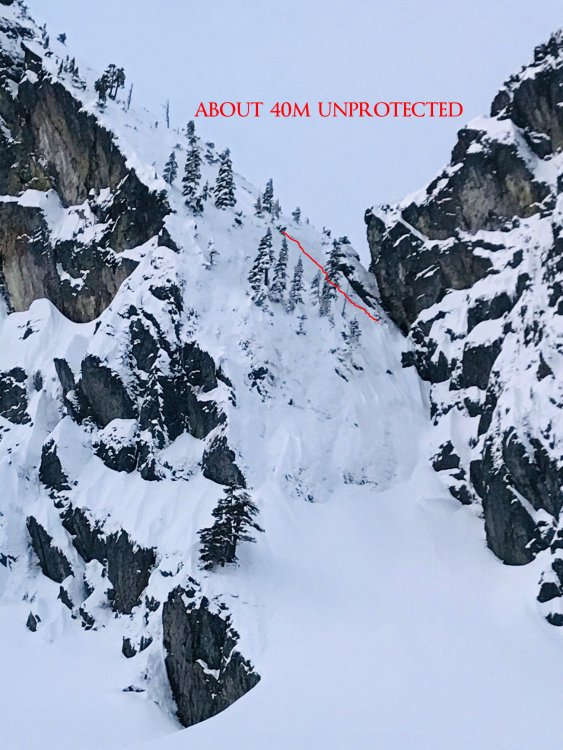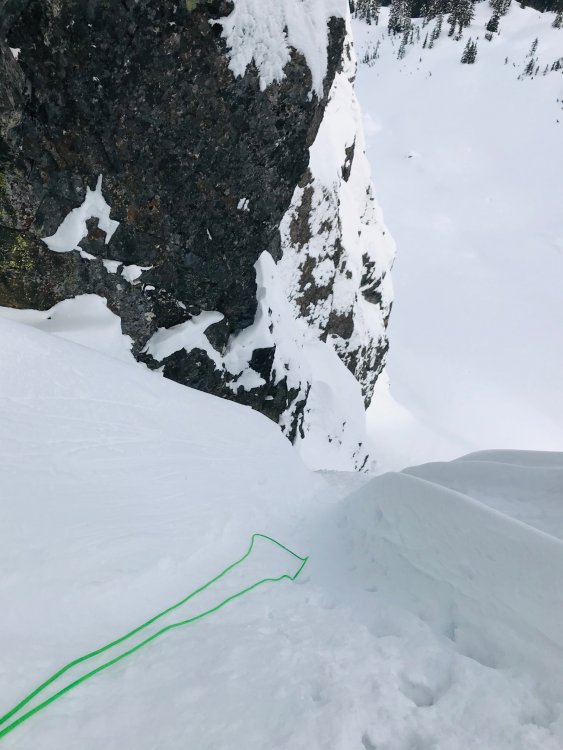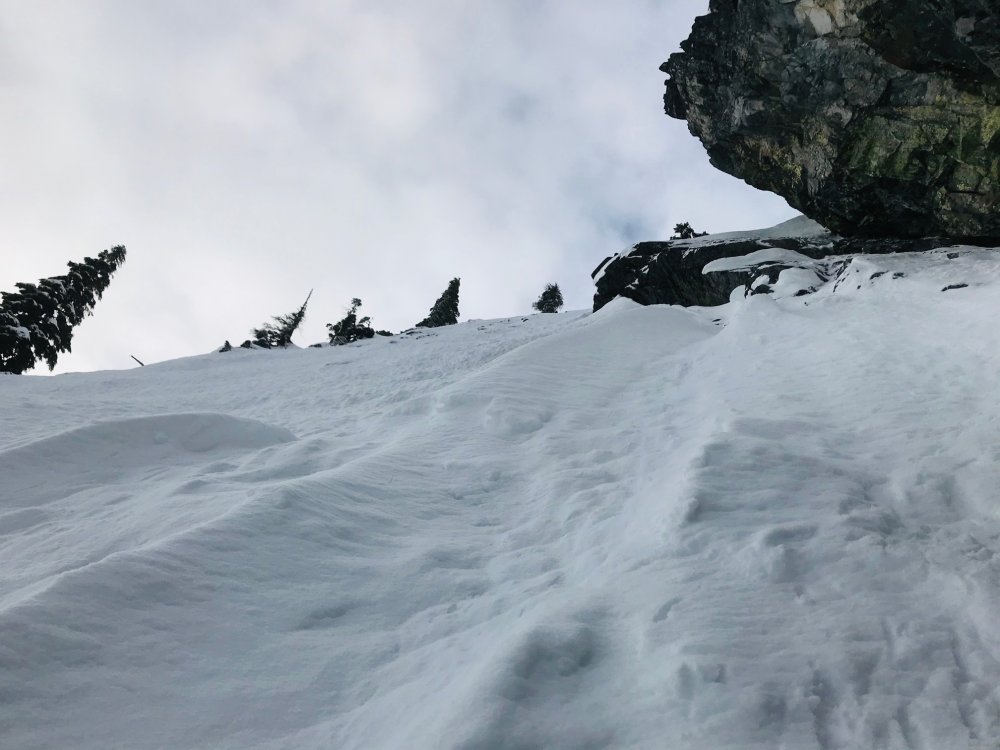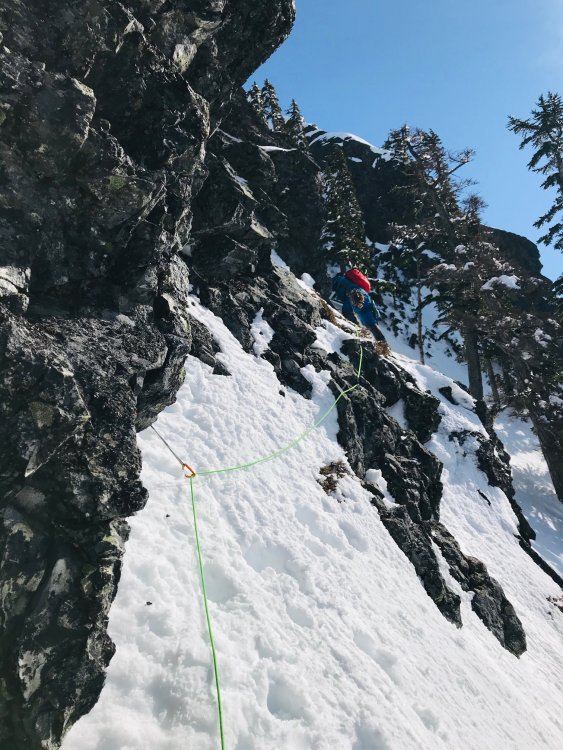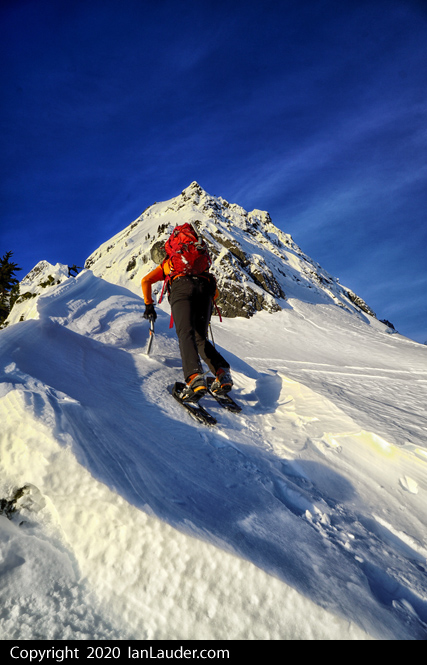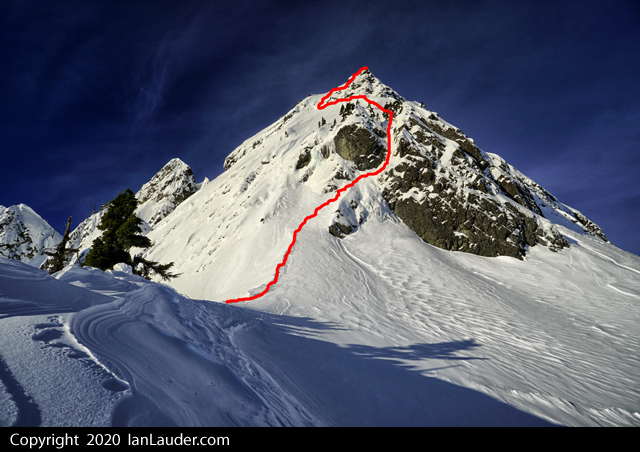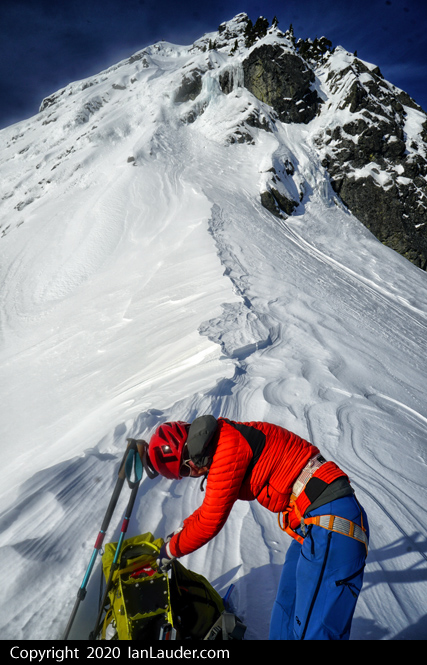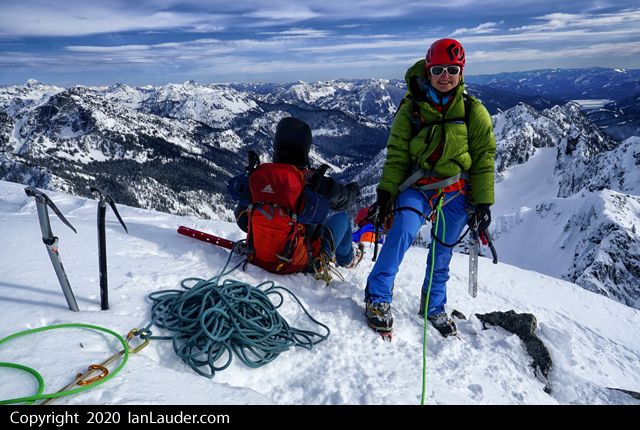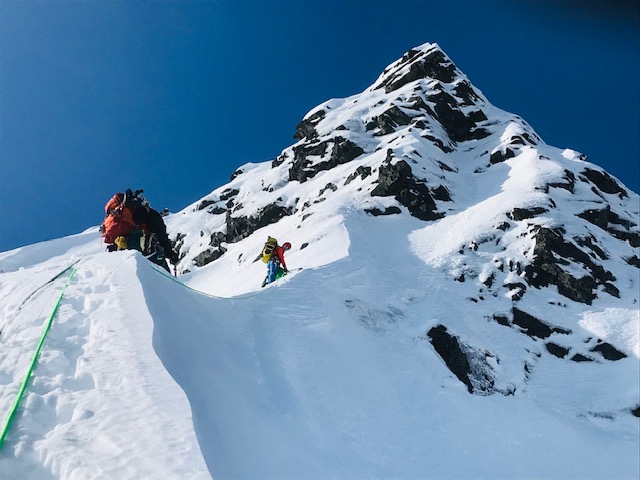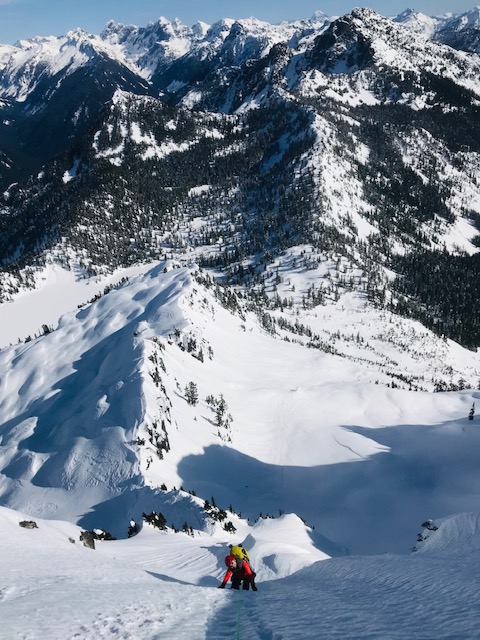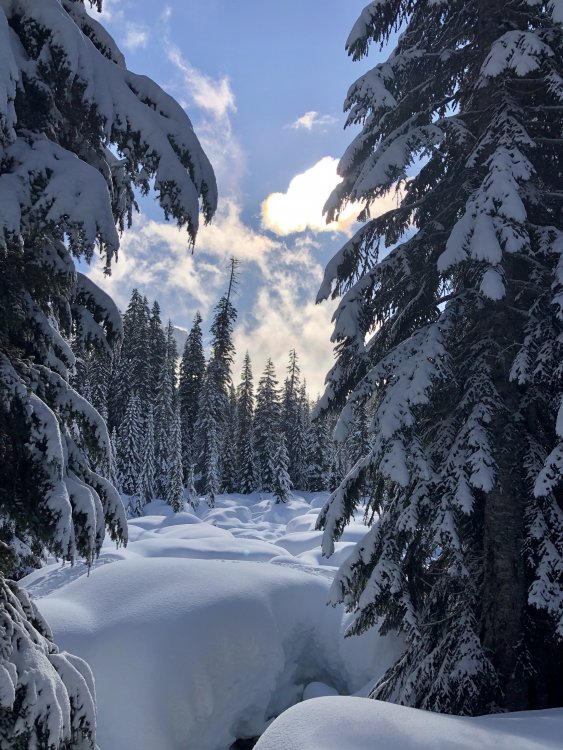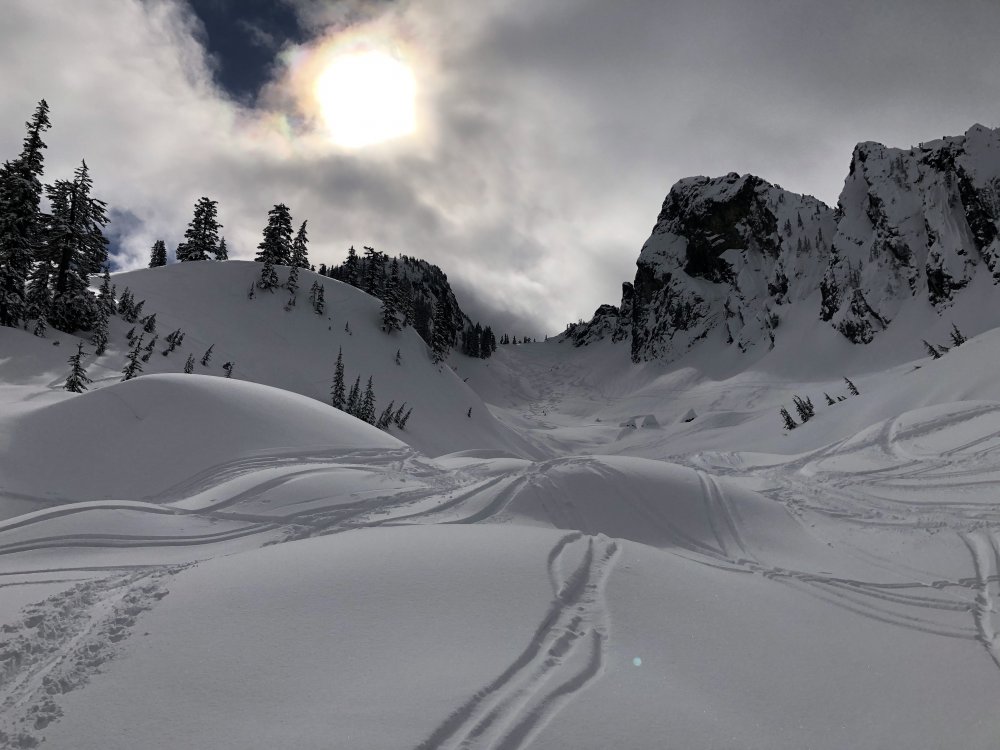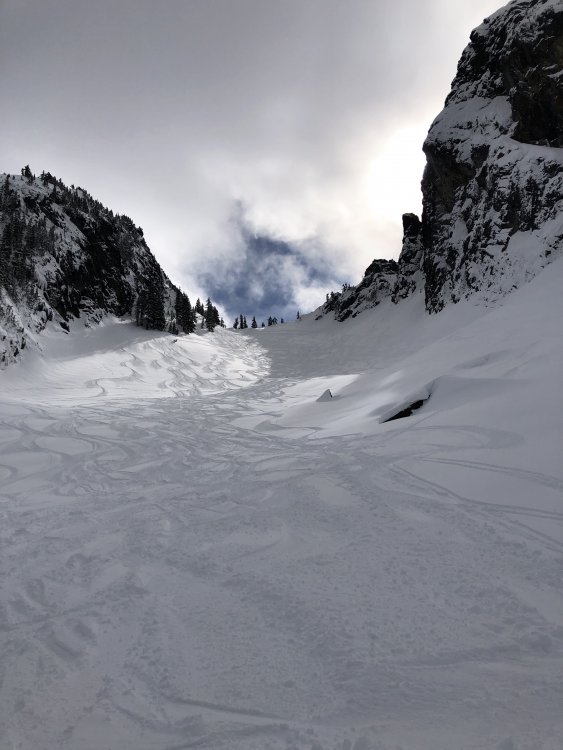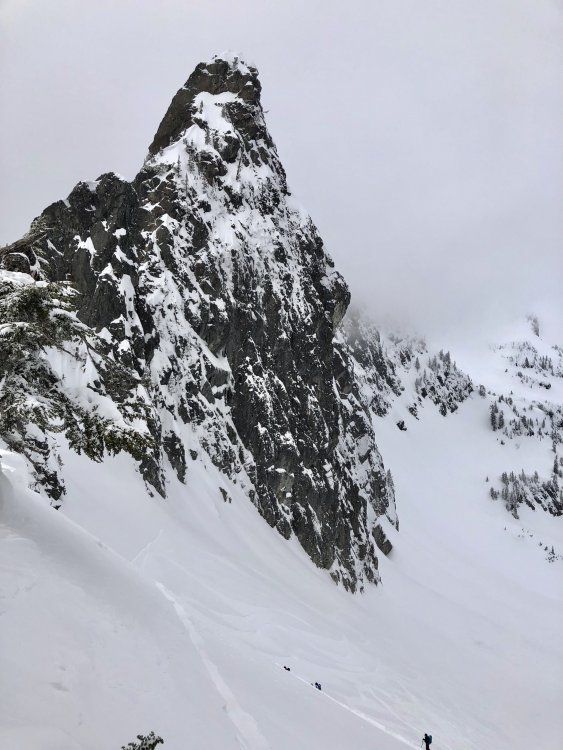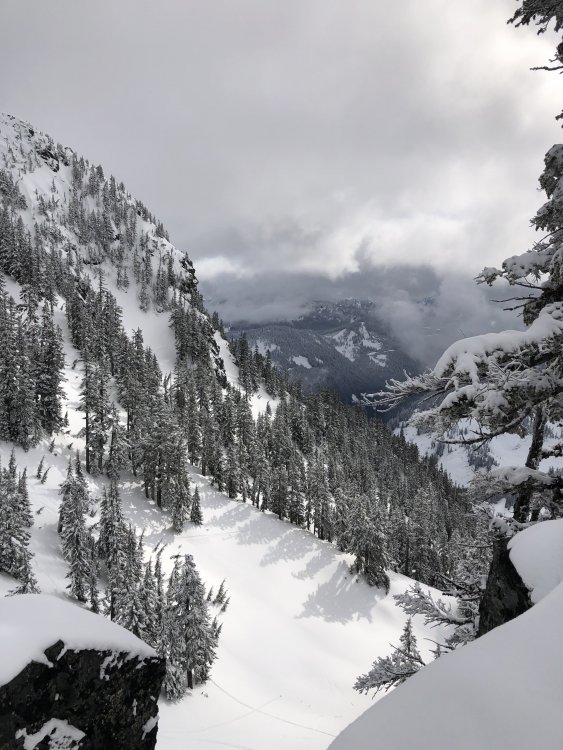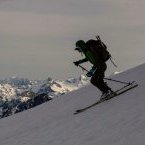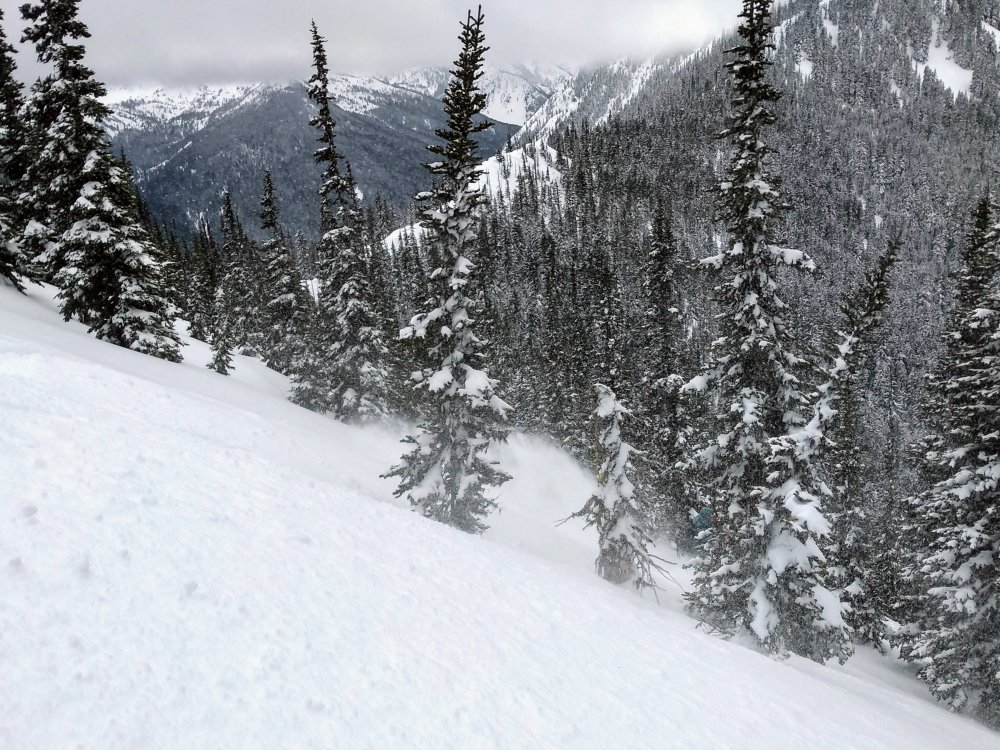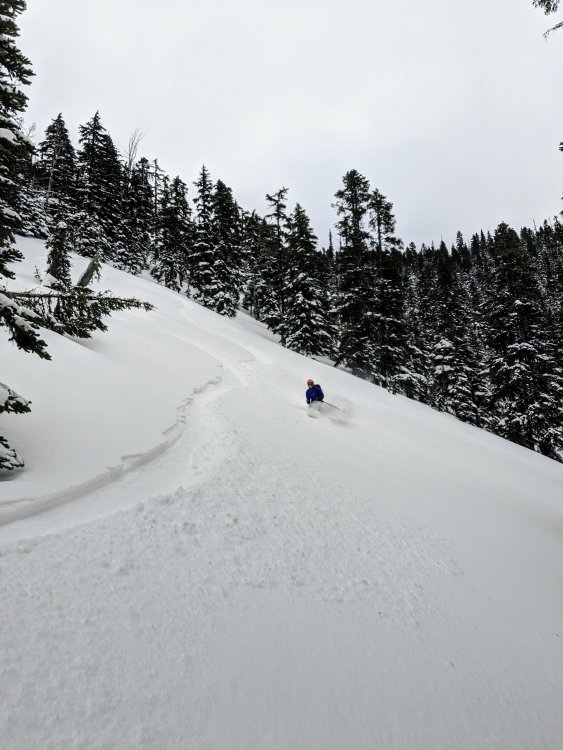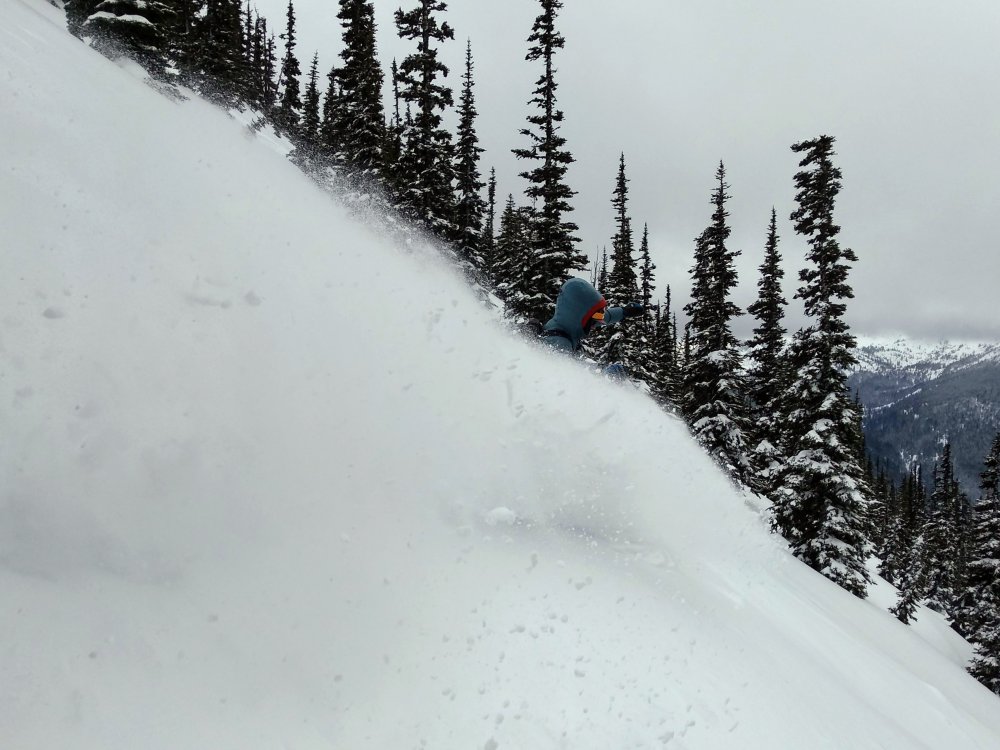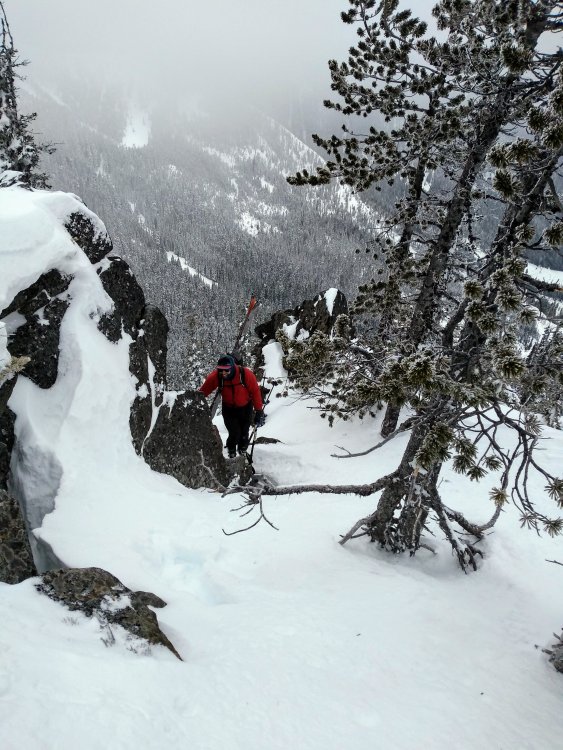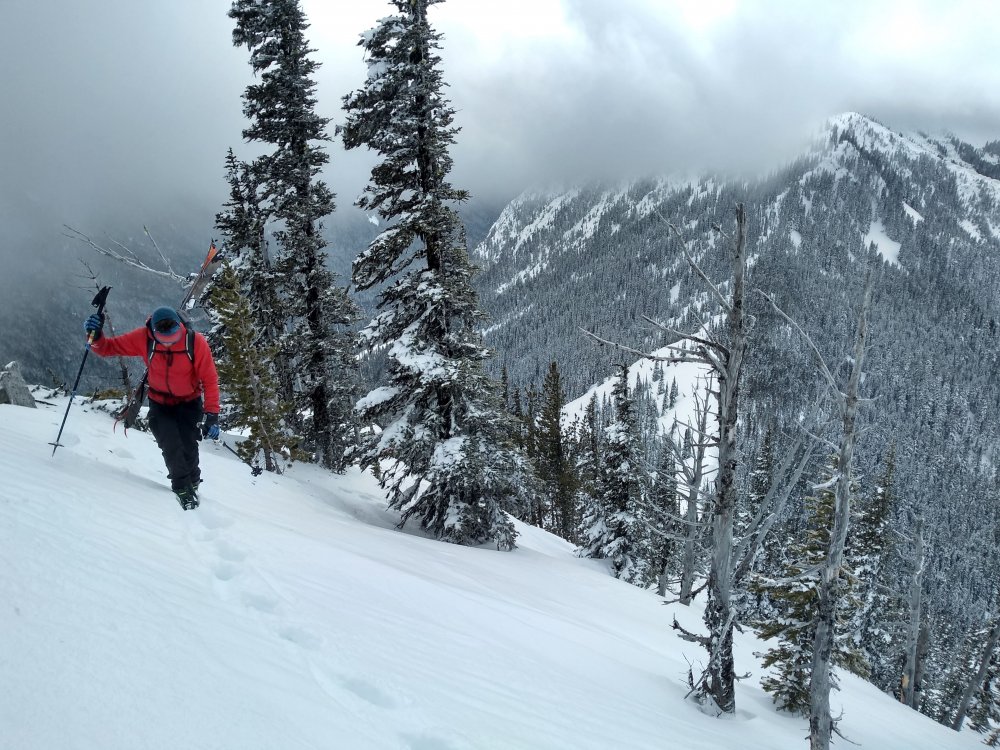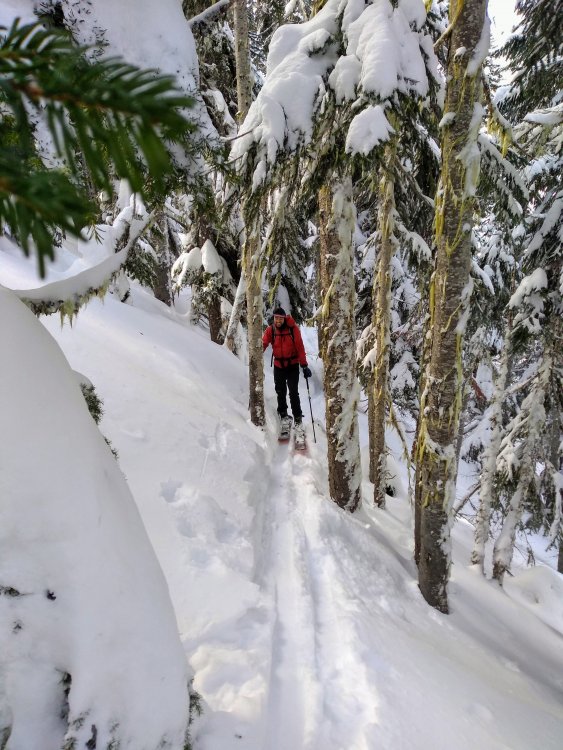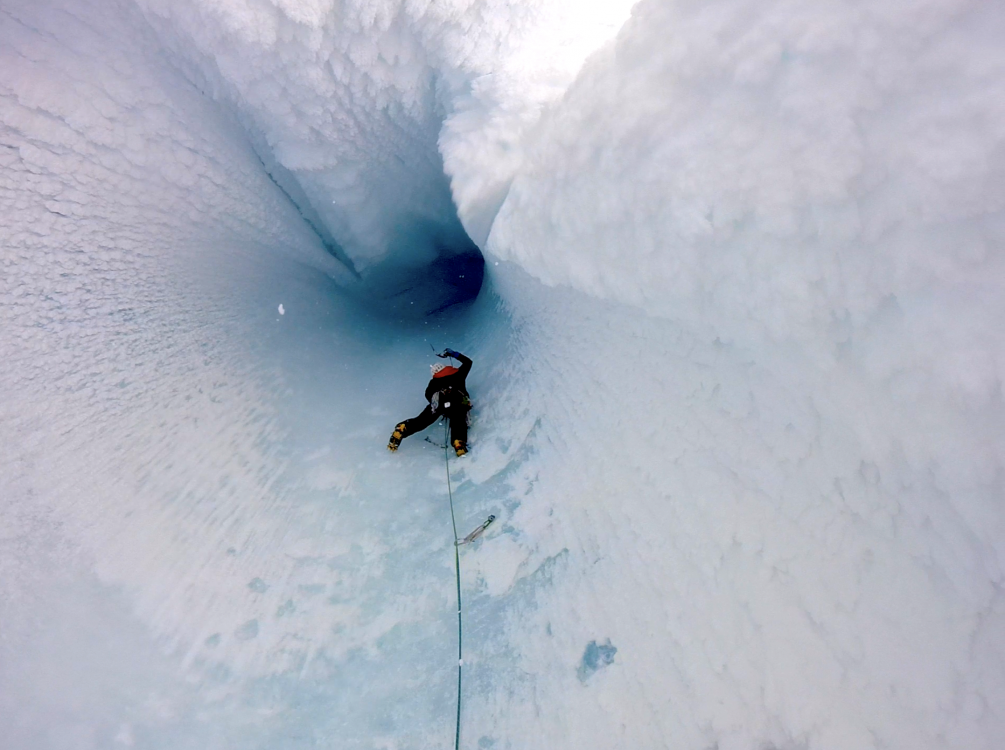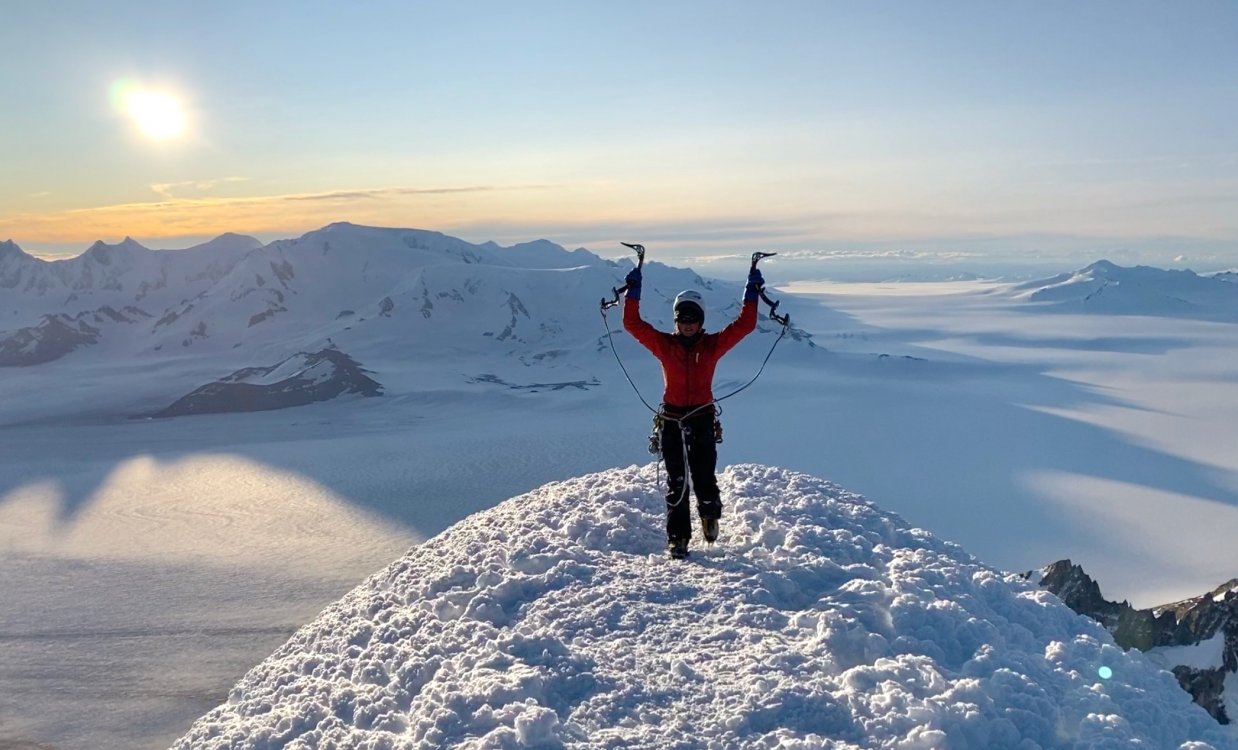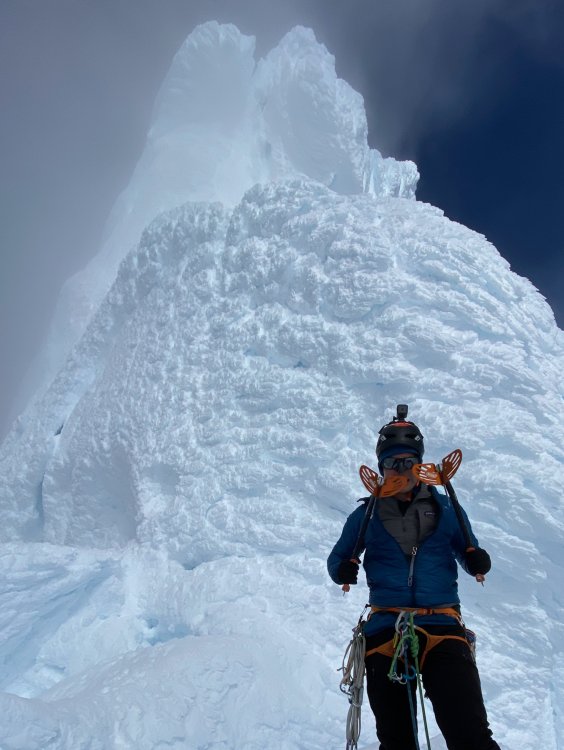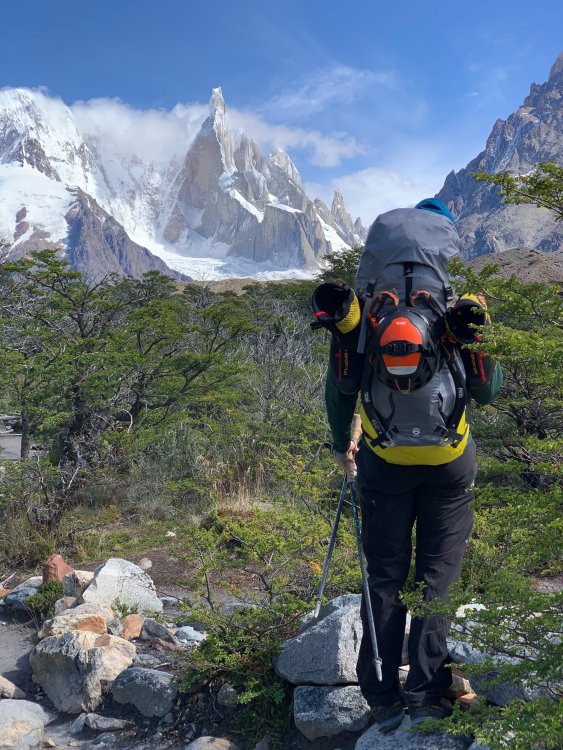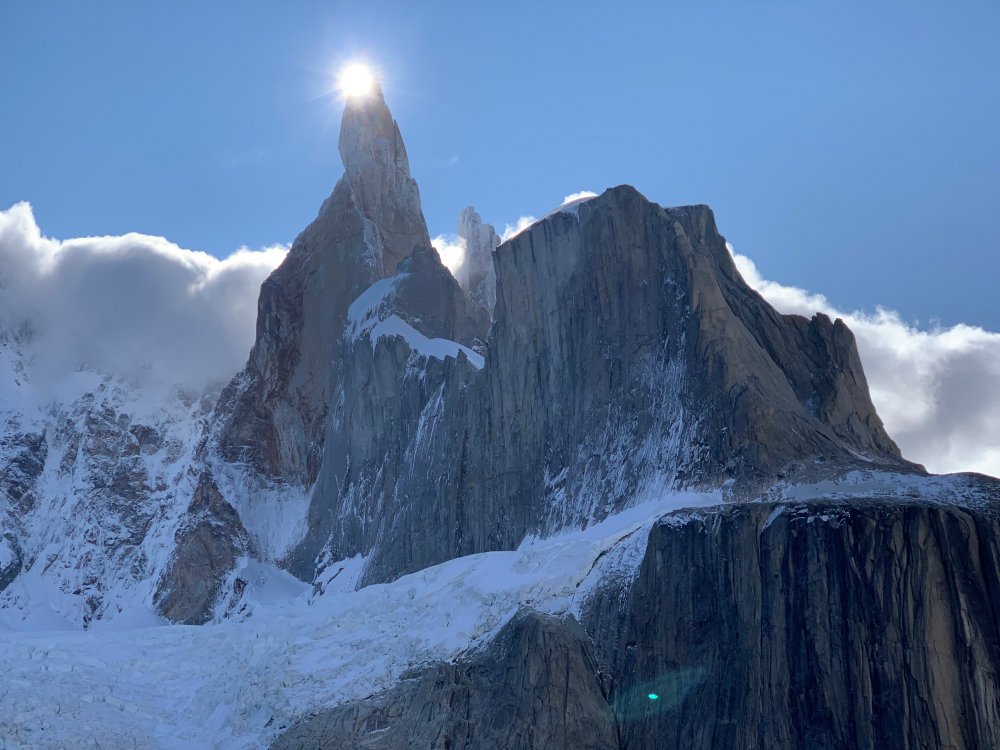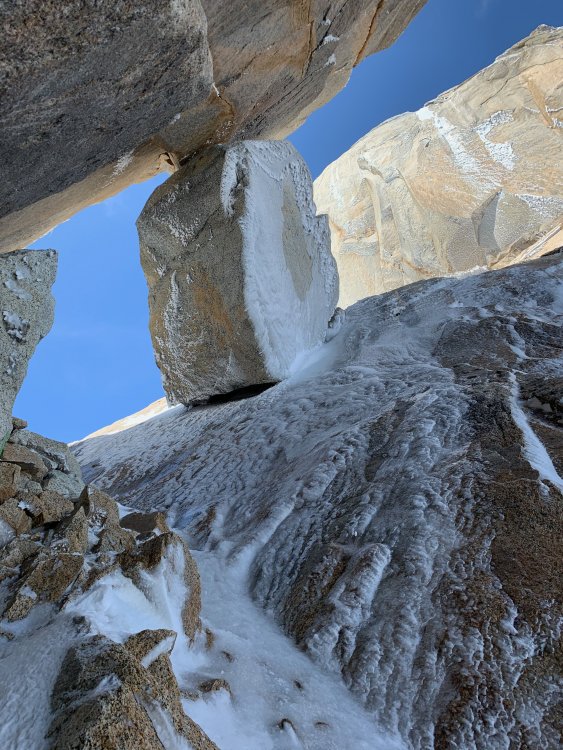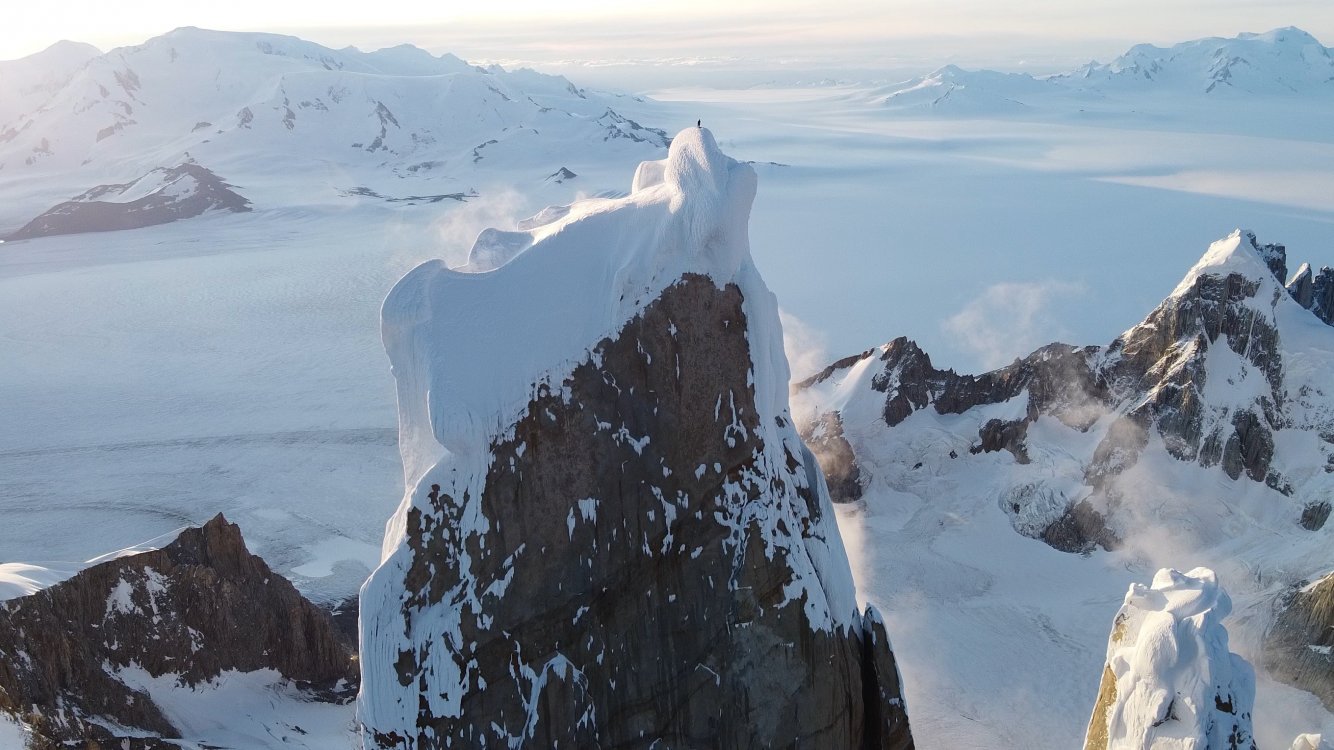Search the Community
Showing results for tags 'CCTripReport'.
-
Trip: West Fury - Mongo Ridge Trip Date: 07/05/2021 Trip Report: In our relentless pursuit to ride the coattails of THE Wayne Wallace, Priti and I made the second ascent of Mongo Ridge (the SW Ridge of West Fury in the Northern Pickets of the North Cascades). It is a Stegasaurus ridge which rises 4,000ft over a mile from Goodell Creek punctuated by thick clusters of gendarmes that look like they’re straight out of the Karakoram. We first heard about Mongo when Wayne came to speak for a BOEALPS - Boeing Employees Alpine Society Banquet in 2015 and regaled a captive audience with his bold adventures. We warmed up Wayne's feature presentation with a talk on our trip to Patagonia climbing Aguja de l'S. Then Wayne came on stage talking about Mongo, making de l'S look like a mole-hill. Wayne climbed this route in 2006 SOLO, like a boss, questing into unknown terrain that easily could have landed him into mandatory hard free climbing. With vertiginous cliffs on both sides, he knew that bailing from the route was not an option and that he had to climb whatever the mountain presented. The difficulties on the route were up to 5.9, with an additional 5.10b pitch (a routefinding error), but the towers presented possibilities up to 5.11 if we weren’t lucky enough to have Wayne’s beta. The first ascent is one of the legendary, mythical ascents of the Cascades and even of the climbing world. After 15 years, only a handful of folks to my knowledge have even considered attempting it again. The bottom half of the ridge has four narrow towers which require you to summit and rappel in order to make vertical progress on the ridge. Long, double-rope rappels and hard technical climbing discouragingly makes it take hours just to ascent 100ft at times. Above these four towers are the “Rooster Comb” and the “Pole of Remoteness” (named by John Roper who figured it was the hardest place to get to in the lower 48). After Tower 4 and before the Rooster Comb, we scramble traversed low around each of these features and did not summit the Pole of Remoteness since it was getting dark and we did not bring bivy gear. At Wayne’s suggestion, we planned to climb camp-to-camp which was situated at the summit of East Fury. This means that while we did ascend the topographic feature of Mongo Ridge to the summit of West Fury, we did not truly climb “Wayne Wallace’s Mongo Ridge” in the manner that he climbed, including many more pitches of technical terrain. When we talked to Wayne in 2019, I told him that “Somebody needs to repeat this route, just so the world can understand what you accomplished.” It’s impossible to understand the scale of this route without being on it, competing as “one of the largest features on any mountain anywhere.” “You have to climb a major mountain [East Fury] just to start a most major climb.” Even with Wayne’s pictures and descriptions, we were still filled with dread as we attempted to route-find up each tower. While I am proud of what we did accomplish, I am still shaken at the boldness and audacity of the first ascent. Our tale should be considered a celebration of that event. Wayne called it Alpine Grade VI, but Beckey downgraded it to V deeming it (incorrectly imho) similar in commitment to Slesse NE Buttress (ref. Cascade Alpine Guide Book 3, pg. 118). We concur with Wayne's Grade VI rating, although I won't be even slightly offended if anyone wants to challenge the grade while ensconced in sofa cushions. Our itinerary: -7/3/21: 2PM boat ride from Ross Lake Resort to Big Beaver TH. Bivy in Access Creek basin. -7/4/21: Access Creek Basin to East Fury Summit. Left summit bivy in situ. -7/5/21: 23hr day camp-to-camp including Mongo Ridge and the traverse from West Fury to East Fury. -7/6/21: East Fury to Access Creek Basin -7/7/21: Access Creek Basin to Big Beaver TH. 2:30PM boat back to RLR. Here are collected links regarding Wayne's FA, for reference: https://waynewallace.wordpress.com/2014/05/ http://www.alpinist.com/doc/ALP19/climbing-note-fury https://www.nytimes.com/2006/10/21/sports/othersports/21outdoors.html http://www.alpenglow.org/nwmj/07/071_Mongo.html http://publications.americanalpineclub.org/articles/12200713002?fbclid=IwAR0iS9vNBvJ1XUQPOTPIXy8eymiTsuWFHI5TJtuAvLJUNb5LknfgeYgTriI Scurlock Picture: https://www.pbase.com/nolock/image/65948954 I won't go through too much detail on our approach to Luna Col and East Fury, since it is detailed well in many other places: https://onehikeaweek.com/2020/08/02/mount-fury/ http://www.nwhikers.net/forums/viewtopic.php?t=8021967 (specifically useful here is the traverse from East Fury to West Fury) Since we planned to do the route camp-to-camp (situated on the summit of East Fury), we studied the traverse from West Fury to East Fury in detail since we figured we'd be onsighting it in the dark to get back to camp. I will point out the "Red Ledge" (pictured above) just past Luna Col is reached by staying directly on the ridgeline from the col to begin the traverse over to East Fury. Past the Red Ledge, the next tower (called "Crux Tower" in some reports) is ascended directly via 4th class ledges and short 5.4 steps. A rope and gear would not be useful here. There is significant foreshortening here, as the route looks much more accessible as you get closer. Unless you're climbing in Winter or Spring, you will not be able to get across the bergshrund (as shown in the Beckey overlay), but instead will traverse left then right to reach the summit arête. Furthermore, the approach to the base of Mongo Ridge from East Fury's summit as discovered by Wayne is the easiest approach. While it is possible to reach Mongo's base via Picket Pass (either by navigating over Outrigger Peak "Southeast Peak" or Otto-Himmel Col), these approaches would be significantly more effort...or bushwhack for days up Goodell Creek. As you approach, notice the grey washboard streak with an overhanging gully. The route will start to the right of this feature. The 4,000ft descent from East Fury's summit may involve a lot of slab if the snow levels are low. We regret not bringing bivy gear on route. An alternative itinerary could be: -Day 1: Big Beaver TH to Luna Col -Day 2: Luna Col to Mongo Ridge Tower 1. Option to leave stove and tent on East Fury Summit as you pass by. There are no good bivouac sites on route. Just bring a sit pad and a sleeping bag and open bivy if splitter forecast. -Day 3: Tower 1 to either East Fury or Luna Col. A note on weather: The Pickets have notoriously unpredictable weather. Even with a splitter forecast, you can still have rain or even storms. Consider a tarp as backup shelter. Crossing the moat is the first crux. The moat is huge! Only found one place where it touched the rock slightly. On the approach, don't come down anything you can't go back up! Here I had to cross a giant moat (unprotectable compact snow), using both Gully tools (then passed the tools down to Priti). A picket here would have been very useful...but that's a big cost. Might have to bury a tool and rap/swing across the moat. Tower 1 was a TIME KILLER! Wayne reported a 5.8 overhang crux which we did not find. Instead we got suckered into a runout 5.10b overhang in the grey washboard gully. Recommend future parties to avoid this gully completely, and instead stay on the face to its right. Our second mistake was getting suckered into a difficult 5.8 grassy gully. Wayne later clarified that he immediately captured the ridge first, then went straight up the ridge (recommended). We started in an obvious chimney (5.6), gaining the face on the left then going right (many variations). After the chimney, we went left to the 5.10b overhanging grey gully instead of going up. It looked harder to gain the face above, but it is 5.8 if you can find Wayne's Way. The slopes to gain the ridge are all STEEP. We breathed a sigh of relief once we were on situated on the upper slopes of Tower 1, but route finding continued to be a challenge. A 30m rappel took us down to the notch between Tower 1 and 2. It seems possible to bail here back down the glacier and back up to East Fury. Perhaps the last legitimate bail option, so we considered the time and knew we would be climbing through the night. Tower 2 is only 2 pitches of 5.7 with no real route finding difficulty and went pretty quickly. The rock is REALLY loose however, so I was careful not to knock anything down on my belayer. Route lines are all approximate by the way! The first double rope rappel from Tower 2 led to the notch between Tower 2 and Tower 3. Tower 3 is the technical crux of the route and another TIME KILLER! It takes hours just to gain 100ft elevation. Once atop, it's demoralizing to look down and see the top of Tower 2 so close. Wayne reported a 5.10a bulge which I think we avoided by staying on and just right of the ridgeline. From the notch between Towers 2 and 3, a 5.4 traverse gains a grassy belay with 5 more pitches above ( 5.9 30m, 5.9 30m, 5.9 30m, 5.9 50m, 5.6 65m). Priti stopped whenever she found a good belay spot. We also hauled packs on 4 pitches expecting 5.10a climbing at any moment. It was real 5.9 climbing, consistently on decent rock for four pitches. Next time, instead of hauling just load everything into the follower pack and leave the leader with a mostly empty backpack instead. We took two backpacks on this climb to evenly distribute weight and bulk while simul-climbing. This was a good method. We consistently trended right above the belay. Higher Hiiiiiigher Hiiiiiiiiiigher Another 60m rappel deposited us to the notch between Towers 3 and 4. Finally, we got through the technical crux and we were losing sun fast! We knew we were in for an open bivy or a heartbreaking omission of the Pole of Remoteness. Tower 4 is another quick one. Two pitches, 5.9 then 5.7. It looks like really hard climbing going straight up! Instead we followed Wayne's advice and traversed out right for ~20m on 5.9 terrain with decent protection, then up following flakes and grass to a good belay. As you start climbing up, the climbing doesn't ease up, but instead is engaging, fun 5.9. Then 65m simul-climb to the summit. A final 50m rappel down to the base of the Rooster Comb. We were a bit confused here since the terrain opened up into a minefield of gendarmes. The Pole of Remoteness was indistinguishable among all of the towers. We knew we had to boogie so we took all the shortcuts that we could find. We noticed that the Rooster Comb could be bypassed on the right on low-5th terrain by taking another 30m rappel, then down climbing and traversing its Eastern flanks to a grassy gully. Wayne went up and over the Rooster Comb, not realizing there was a bypass. The Rooster Comb is very complex with several small flagpoles that required rappels. Wayne describes the final rappel off the rooster comb as a "diagonal rappel" that you can redirect off of horns, after which he flicked the rope to retrieve. There are at least two more intermediate gendarmes between the Rooster Comb and the Pole of Remoteness that we skirted around. Wayne found himself on their left side while we were on their right side. Wayne captured the upper 4th class slopes via a grassy gully (shown above). From here it's all 4th class to the "False Fury" summit. I coin the label "False Fury" because we stared at this point almost along the entire route thinking it was the West Fury Summit, but instead is fairly far from the true West Fury summit. Above is pictured our Rooster Comb bypass route which required an additional 30m rappel (or easy down climb). This was the first time we encountered snow on route, but don't count on it being there! Bring 4L water each. Southern Pickets in all their glory. Wayne traversed around the right side of the Pole of Remoteness to reach the col and summit it from the backside. To climb it directly would probably be 5 pitches of hard, loose climbing. From the notch between "False Fury" and the Pole of Remoteness, Wayne reported 1 pitch of 5.7 to reach the summit of the PoR. There is no anchor on top, so he threw a rope around a loose block and solo downclimbed, using the rope as a backup. If you are a team, consider downclimb-belaying. We sadly felt the need to skip the pole since it was total darkness by the time we got to the notch with a lot of traversing left to go. Once atop "False Fury", we couldn't find the summit register and realized that the real West Fury was maybe .25miles away separated by 4 more gendarmes, first downclimbing (or rappelling) down and right and traversing around the first gendarme, then weaving up, over, and around the others to finally reach the real West Fury summit. Glad to have put in the time to memorize the traverse beta between West and East Fury, it went off slowly but smoothly. One piece of key beta was at the end of Tower 1 (the last tower between the Fury's), you can find a secret 4th class ramp around to the North (climber's left) to find the rappel station that leads to the final push up the slopes back to East Fury. This is a 30m rope stretcher rappel, by the way! Thanks to Wayne for all of your support and encouragement! I think this route is more of a classic in the way that Hummingbird Ridge is a classic. We should really just sit back and marvel at the first ascent. It's a true Picketeering adventure, but loose rock, lack of bail options, and lack of bivy sites is pretty discouraging. The Pole of Remoteness still needs a second ascent, however! But it would a pretty doable day to get to PoR in-a-day from your East Fury bivouac by traversing high along the ridge and scrambling down from "False Fury", then reversing the route. Gear Notes: Single Rack .1 to 2, doubles .3-.75, small cams (TCU 00, TCU0). We like small cams in the Pickets! Small rack of nuts. 1 screw and 1 V-threader for glacier (didn't use). 60m single rope, 60m pull cord (three long rappels + optional pack hauling), 1 Petzl Gully (technical light ice axe) each, 10 single alpine draws, 3 double alpine draws, 1 quad, 50ft 5mm cord for rap anchors (used it all), left three caribeeners on rappel stations, steel horizontal front-point crampons. Approach Notes: Boat from Ross Lake Resort to Big Beaver Creek - Access Creek - Luna Col - East Fury - 4000ft descent on South side - Mongo Ridge - West Fury - Easy Fury
- 16 replies
-
- 11
-

-

-

-
- tripreport
- cctripreport
-
(and 1 more)
Tagged with:
-
Trip: Broken Top - Oh to be young and dumb - Crater Trip Date: 02/16/1985 Trip Report: For fun I thought I would post a trip report that happened 35 years ago. A friend recently sent me scanned versions of his slides so I thought I would post them up with the story. We were both in college at OSU, me finishing my undergrad, and Andy finishing his masters. My girlfriend had an invite to spend the weekend skiing at Mt. Bachelor so we decided to go along and climb Broken Top as neither of us had been on it before. So that Friday night we left Corn Valley for Bend, she dumped us off at the end of the road that evening and we skied in a ways and camped. The next morning we skied in into the Broken Top crater. Andy and I discussed various ways to gain the rim. We finally decided on a route up but not one that I was to my liking as I wanted to take a less direct but I felt safer route. But I deferred to Andy as he was more experienced than me. At this point I will let the pictures tell the rest of the story. Mt Bachelor in the background. Hmm, 30" crown and well we are still on top. I think walking down is the preferred option. Hmm, nice debris field and damn near wall to wall. WTF were we thinking??? The dot in the middle of the debris field is me putting my skis back on. Epilogue: As our ski tracks are visible, we had nearly gained the ridge when we set off the avalanche. We were both on the same cut when the ground went out from under us and we dropped a couple of feet to the bed surface. Both of us just stood there and watched as the avalanche ripped down the crater. Had either of us been caught we would have been dead. Not withstanding the fact that back then few people had transceivers or could we afford them as students. I saw Andy a few years ago when he gave me these images. He admitted that his decision making that day was not the best. Oh to be young and dumb. Gear Notes: A functioning brain Approach Notes: Go long from Mt. Bachelor
-
Trip: Mt Rainier - Central Mowich Face (IV, AI2, 60 degrees) Trip Date: 07/13/2019 Trip Report: @nkimmes and I climbed the Central Mowich Face on Rainier July 13 - 14, 2019. We left the skis at home for once and sent it in a two day push from Mowich Lake to White River. Approach from the Mowich Lake campground was straight forward for the early miles. The trails winds up through wooded hills toward spray creek and eventually gains a large, open alpine landscape. The trees gave way to alpine brush and small talus that undulated with the movement of glaciers long gone. After a fairly long cross country section we reached the benign Flett Glacier. This permanent snowfield is situated low on the flanks of the mountain under Echo and Observation Rocks. Our path took us between them, close to the east side of Observation. Visibility was not good. Low hanging clouds roiled over the rocks and the landscape around us. The glacier seceded to loose volcanic rock. Our footsteps sank with each stride to gain Ptarmigan Ridge. This point marked the end of the easy terrain. From this point we knew that previous parties had found a fairly heinous down climb/scramble over steep, loose rock to the glacier below. Some beta also indicated that there might be a permanent snowfield. Ultimately we decided to drop off the side of the ridge at just over 8200 ft. It was loose as promised, but overall the slope was not treacherous. Eventually we did run into a snowfield that made downhill travel a bit easier until we reached the outer edge of the North Mowich Glacier at 7200 ft. We roped up for the first time and travelled through a beautiful jigsaw of monster crevasses. We took a direct line toward the base of the route, instead of circumventing the core of the glacier out toward the Edmund Headwall as described in the guidebook. One crevasse was crossed by down climbing the wall on one side to access a depressed, knife edge bridge about ten feet below the lip of the crevasse. We tiptoed across and climbed back up the other side. After 12 hours on the move we reached a rock band at 10,200' above the double bergshrund guarding the route. We pitched the tent, melted snow and attempted to drink sand filled water and made funny videos condemning Jet Boil for being shit in the wind. Sleep did not come easy. The wind had picked up substantially and after a brief 30 minutes in my sleeping bag, heard a large crash from up high on the mountain. Seconds later, from the darkness of the tent, my heart sunk as a massive boulder plummeted past our perch to the glacier below. Sleep didn't come at all. The alarm went off at 1am and we started up at 3am. Conditions were perfect. We rolled out of the tent to clear skies, no wind and cruiser neve except for a small vein of AI2 near the top, at the start of the grade IV variation that leads out onto a ramp above the EH instead of traversing left through the rock band at the top of the CMF. We felt secure and free solo'd the entire 3000' face to 13,200'. From there it was slow going as we slogged through high wind up Liberty Cap and over the plateau to summit on Columbia Crest. After an involuntary nap looking out over the top of the DC, we traversed the mountain with a descent dow the Emmons Glacier. It had been a big trip. We were wrecked and stoked that it had gone so smooth, especially since i was supposed to catch a flight to Boston the next day. Cheers! The route as seen from the road to Mowich Lake. The early part of the North Mowich Glacier after the descent from Ptarmigan Ridge. Monster crevasses that could eat a semi-truck. 10,200' bivy sunset was something else. @nkimmes on the main face as the horizon started to get light. Perfect other than my crampon kept falling off. Near the top of the face at the AI2 vein. No words necessary. Stoked! Summit! Gear Notes: Pickets, couple screws Approach Notes: Mowich Lake TH
-
Trip: Cabinet Mountains - Multiple Trip Date: 03/21/2020 Trip Report: I just wanted to share some photos and descriptions from the last couple ice seasons in the Cabinet Mountains. Anyone who got the 2019 AAJ or Alpinist 64 might have already seen pictures of the area. There have been a handful of Spokane area climbers putting up routes over the last couple seasons. All the climbing has been done out of Granite Lake which is near Libby, MT in the Cabinet Mountains. The climbing is quite varied, from single pitch WI3 to 1000ft hard ice and mixed routes. The area has been divided up into 3 big areas….A Peak, The Thunderdome, and Three Tiers. A picture is worth a thousand words so I will just resort to numerous pictures instead of more text……let the stoke begin for next season!! Looking across Granite Lake with A Peak towering 4000 feet above. The Thunderdome is the large sub dome in the center of the picture. The Thunderdome!! Some of the best ice routes anywhere around. Scott Coldiron and Matt Cornell on the first ascent of Mad Max, WI5+ (8 pitches). Nate Kenney climbing a steep skinny pillar called War Boys, WI5+. Scott Coldiron climbing a crazy pitch called Underworld, WI3. This route is 20m long and entirely inside an ice cave 500 feet up the Thunderdome! Another view of the spectacular A Peak and the upper wall of the Thunderdome. The big ice in the center of the wall is Road Warrior, WI5, M5 (8 pitches). Looking up the huge gash on A Peak. Scott Coldiron and Jess Roskelley put up the route Canmore Wedding Party AI5, M7, 750m, which ascends this central gash. The climb got nominated for a Piolet d'Or in 2019. Note: the large sheet of ice on the bottom rock band is still unclimbed as of 2020. Looking up the wide start to the "Blaster Routes". Blaster, WI4 is five pitches of ice while Master Blaster WI4, M5, (10 pitches) continues to the top of the Thunderdome. Looking up from the lake at the "Three Tiers". These cliffs have about 20-25 ice and mixed routes that have been done. A closer view of the the ice (during a fat season) on the center of the 2nd Tier with the 3rd Tier above. Scott Coldiron on the first ascent of Toast, WI5 on the 2nd Tier. Zach Turner leading The Dag, WI3 on the 2nd Tier......a super fun mellow corner. A shot of some of the 3rd Tier routes. Gyro Captain, WI4, goes up the ice on the right while Pig Killer, WI3, takes a line up some of the ice on the left. Multiple possibilities exist for mixed routes connecting the lower ice flows in the center up through the rock to the hanging ice above. Zach Tuner rappelling off Max's Bloodline, WI4, with the impressive routes on Thunderdome in the background. Jonathan Klaucke climbing funky ice on Cheedo, WI3-4, on the 2nd Tier. Looking across at the right hand end of the Three Tiers from the Thunderdome. The wide flow in the center is the start of Tomorrow Land, WI3+, 3 pitches, while the ice up on the right is Devil's Brownies, WI4, 2 pitches, and then farther right is Scales of Justice, WI4/5. Zach Tuner on the skinny pillar start to Splendid Angharad, WI5. The flow farther left is called Capable, WI4. Looking up the 2nd pitch of Tomorrow Land, WI3+ on the first ascent. This fat climb called Nightrider, WI4, 3 pitches, is on the far left of the Thunderdome. It is a bit longer of a hike from the lake but the route is a stellar moderate! Scott Coldiron climbing the crux 2nd pitch of Nightrider, WI4. Brian White starting up the classic Toast, WI5 on the 2nd Tier. The ice beyond him is the route Cheedo, WI3-4. Zack Turner on the sharp end during the first ascent of Grease Rat, WI4....a really fun route on the 3rd Tier. Matt Cornell working through the crux of Sarcophagus of Lies, M6. The route continues up and left until you can stem between the rock and the ice dagger above. This is a stellar line on the 3rd Tier with "quality climbing as good as Come and Get It" according to Matt. Brian White putting up a short route called Mystery Gas, WI3 on the 3rd Tier. Syd Atencio and Nate Kenney climbing up Devil's Brownies, WI4, on the Three Tiers. Granite Lake and the surrounding basin in the background. I think one of my favorite things about the climbing here is the views....it just never gets old!! Every time I walk across Granite Lake I have to pause and just look up. Hopefully this will get some people stoked about climbing up there because it is a beautiful spot with fantastic climbing. Happy to answer any beta questions or run them through Scott. Gear Notes: Ice screws......rock gear for mixed routes. Approach Notes: All climbs are best accessed from the Granite Lake trailhead. In winter it is a 9 mile hike/skin into the lake with about 2000 ft of elevation gain. Count on 4-9 hours depending on conditions. From downtown Libby, take Highway 2 east one mile to Shaugnessy road. Take a right and follow this for .7 miles before turning left onto Snowshoe road. After 1/2 mile take a right turn onto Granite Lake road. In .8 miles stay left on Granite Lake road and continue for 4 miles. This is the end of the pavement and where the snowplows stop in the winter. The Granite Lake trailhead is still another 3 miles but you will have to walk/skin/snowmobile that distance in the winter. There is usually plenty of room to park several cars just be mindful not to block the road or any of the neighbor’s driveways. From here follow the snow covered road for 3 miles to the actual Granite Lake trailhead. The road is mostly level with a few gradual climbs (400 feet of elevation gain in 3 miles). From the trailhead hike/skin the trail 6 miles up to the lake.
-
Trip: Sperry Peak - East Face Gully Attempt Trip Date: 11/29/2019 Trip Report: Sorry I didn't post this for a few months, but basically I was scared of others going up there, turning around and seeing the massive ice flows on Sloan, and poaching our prize. But what's done is done so now I want to share what I learned from an attempt of the East Face Gully of Sperry over Thanksgiving 2019. This trip report (http://www.nwhikers.net/forums/viewtopic.php?t=7980139) caught my attention and Sperry became the focus of my fall alpine efforts. The east face is a beautiful 3000 ft wall with just an hour approach! This gully looked absolutely sweet, like some moderate mixed/snow/ice route. This was the only report I could ever find, so it was hard to know what to expect. Fall 2019 was very dry for us. At elevations below 5000 ft, there was no snow come mid November. Then, right before Thanksgiving, it dumped about a foot down to 3000 ft and got extremely cold (highs in the 30s in the lowlands). Good for ice right? Sperry. Approach slabs on the left. Gully obvious in the middle. Daniel and I drove up to the trailhead and hiked into Wirtz Basin around sunrise. We could immediately tell we were in trouble. The 3rd to 4th class approach slabs looked like they were covered in thin verglass and fresh powder. We started up them, but decided we wouldn't be soloing them (Daniel was pretty new to ice climbing at this point) so we tried going through the dense trees to the right. This was impossible, running into steep cliffs and powder on no base. We bailed back to the slabs. Typical climbing in the approach slabs. We broke out the rope and I led up the right side of the slabs on WI1-2 R where sometimes your crampons would bust through to the rock. It was very insecure, albeit easy. Just not what Hyalite prepares you for. I belayed Daniel off a small bush and then we scrambled up higher. Then to the right there was a little WI3 near vertical step for 20-30 ft that might have taken 6 cm screws. I now realize this was the "little icy step" Jim referred to in his trip report. Damn, those guys were tough. Another veggie belay brought Daniel up. The next section involved climbing atop branches while getting soaked in powder. Then we traversed across more 3rd class slabs covered in fresh powder in crampons. My crampons were brand new and suffered dearly. Finally, we were staring up the gut at the gully, around 4000 ft. It was near noon and the strong sun was causing snow to constantly cascade down the gully. It looked absolutely icy and beautiful! Certainly one of the most beautiful gullies I've ever seen, but we were too late to continue. The powder would have been heinious. We stopped here. But the ice looked so good! Sloan, with the lines already forming. We rapped off trees back down to the valley floor. We took a walk further up Wirtz Basin and admired the incredible geometric features of Sperry. It is truly one of the underrated great mountains of the North Cascades. There were all of these cutting edge mixed ice routes that went 1000 ft up the SE face in the deep chimneys and cuts, but then they just petered out into nothing. There were even some chimneys like hundreds of feet deep and perfectly angular. I could just imagine Colin Haley deep in the darkness, climbing some great new route. I'd love to come back in the summer and climb one of the huge 2000 ft rock routes Beckey mentions that never get climbed anymore. I think the east face gully could be a great summer scramble, 3000 ft of scrambling with basically no approach. This is an incredible mountain. This looks like an incredible route. We'll be back! Inspiring SE side of Sperry. I've seen another mountain like it. Serious ice potential further up the valley. Cool easier ice potential up on Morning Star. Great north face of Sperry. Wonder if that route has seen a repeat? North face Big Four. Lessons learned: * this is a tricky route to nail in proper conditions. If that low snow hadn't fallen, the approach slabs would've been dry (like they were for Jim), but would the gully had been filled in? Probably not this year. We needed more snowfall above 4000 ft. Or if just a bunch of snow falls to 3000 ft and consolidates, but you can still drive to the trailhead, that'd work also. Or just climb this route in mid winter consolidated conditions with a sled access. * The approach slabs are really the only way to go. Don't try to go around. * those old timers are tough mothertruckers. Gear Notes: A few screws, some rock gear. Approach Notes: Short, probably one hour if you can drive to the trailhead. But the slabs can be cruxy...
-
Trip: Mt. Hood - Yocum Ridge Solo Trip Date: 03/21/2020 Trip Report: "It's not my imagination, I've got a gun at my back!" -Revenge, Black Flag Yocum Ridge is the first route I ever thought about climbing. I remember looking at the striking line from the bus stop in my elementary school. Even though I knew nothing about climbing at the time, the sheer beauty of the route captivated me. As I have accumulated some knowledge about climbing, I learned the route wouldn't go down so easy. Something about the jagged ridgeline dulled by rime gives Yocum a special sense of beauty. Today I set out to realize a childhood fantasy of mine. 3:00 and I'm starting the slog up the mountain. My morale is already low because I forgot my headphones. This damn climb is going to make me absorb the sounds of nature! Two hours or so of walking takes me up to Illumination Saddle. Here I lay eyes on the silhouette of Yocum ridge by headlamp. Nerves turn to excitement as the clock strikes 5:00. The glacier crossing was easier than I expected thanks to all the action the route has seen over the past few weeks. The footprints take me to a headwall a little to the right of where the guidebook says to go. The squeaking and ringing of my ice tools puts me into a trance. After about 150 feet of steep-ish climbing, I gain the ridge. Yocum starts off with a tease. An easy and welcoming rime stepped staircase obscures the rest of the ridge from view. I'll play your game. When the first gendarme comes into view, I have to fight thoughts of doubt coming into my head. At first sight, the rime covered sentinel looks steep and unforgiving at every point. The closer I get however, the clearer the line becomes. My cold helmet feels like a gun against the back of my head. I know it's time. I start to the right of a cave and quickly cut left. The ice feels solid and I flow through a steeper gully. 30 meters or so in, I arrive at the crux. Solid snow and ice turn to dead vertical swiss cheese. Through delicate movement and prayer, I fire through the crux. Each stick felt like a weak handshake. The section required commitment to tools placed in an unknown mixture of snow/ice with dubious feet. Finally, I reach the top of the first gendarme. My blood pressure drops slightly as I soak in the beauty of the bladed ridge that lies in front. Here I am extremely grateful for the groups before me who did the heavy rime clearing and bollard building. From the bollard at the end of the gendarme, I downclimb while on rappel to traverse across an exposed section to a big ledge. This beta worked well for me and seemed to alleviate problems some other groups were having. As I started the traverse pitch to the second gendarme, I felt something fall out of my pocket. I turn my head just in time to see my phone fly down the snow slopes and disappear into the glacier below. Perhaps my phone was the sacrifice the route required. Better phone than blood. Then, like clockwork, a raven swoops by me and perches itself on the tip of the first gendarme. We stare at each other for a minute and I thank him for allowing me to experience this route today. I know that I'm just a guest in the mountains. From here on I felt as if I had permission to continue my journey, hopefully my dues were already paid. The ridge widened the further I traversed down it. Passing the second gendarme was the most secure I felt since getting on route. More slogging took me to another bollard (this time with tat!) off of the third gendarme. I chose to rap north to avoid more thin ridge fuckery. Walking along the steep snow slopes took more energy than I thought. My calves burned and cursed me for bringing two single ropes to rap with. More training I guess. Even though some exposure was still present, I began to meditate with the route. Every swing, foot placement, and movement just felt right. As crawled back over to west side, the sun reared its ugly face, and I began to sweat my ass off. I followed more good tracks around to the right of the final buttress. The last buttress is like a fortress full of impassible walls and sneaky gullies. The first gully I started up took me about 150 feet and ended with impassible rime towers. I downclimbed and again, moved right. Here I could see tracks going to Leuthold from Yocum Ridge. Now I knew I was no longer under the gun. One of the rightmost gullies brought success. I tormented my calves up a few hundred more feet until I topped out the buttress at around 12:30. From the top of the buttress, one final ridge traverse took me to the Queen's Chair. 6 year old Landon would be proud. Looking down the ridge I could see all the minute details that made this route special. Negotiating the route was digging into the alpine bag of tricks and executing. I chose not to tag the summit because I wanted to search the base of the route for my phone (spoiler alert: the phone disappeared into a different dimension). Hiking down Leuthold gave me time to absorb the mountain more. Striking blue accents on rime towers, weird ice formations on the glacier, and the forest just miles away all presented themselves. Days like this make me question the future. I'm sure one day I'll find something that will bring me peace. I often think about Mark Twight saying that climbing can be "too much but never enough." Yocum Ridge was one of, if not the best alpine routes I have experienced. Although it wasn't technically difficult, the sheer volume of spectacular movement truly makes this one of a kind. On the way down I wept. For some reason this route had a different impact on me. Maybe it was the feeling of complete peace and isolation, maybe it was the sheer beauty of it all. Maybe I'm just emotional. I stumbled into the Timberline at around 4:00 and unlocked my car. With the clicking of the lock, my reality had become just a memory. Gear Notes: Basically a sport climb Approach Notes: Attack the ridge at about 8800ft
-
Trip: South Sister - Prouty Headwall Trip Date: 03/19/2020 Trip Report: Feeling grateful to have days like these right in my (new) backyard. I parked at Dutchman Flat, therefore having about 6 miles of pleasant road skinning to get to the usual Devil's Lake trailhead. The day started out cold and humid, but there were no winds and by the afternoon things felt like spring. I was able to skin to about 9000 feet (without ski crampons), traversing all manners of frozen mank along the way. Booting to the summit involved rime, a little blue ice, and icy hardpack that didn't even pretend like it would soften into corn. The summit was clear and beautiful, and a raven greeted me when I arrived. Wanting to avoid the ice I climbed up, I dropped into sheltered ENE facing slopes above the Prouty Headwall. Though it at times threatened to get icy, I was mostly skiing shallow, creamy, windbuffed pow. The standard lines through the headwall (that I had seen detailed elsewhere) were all out, with low tide and large rock bands. I couldn't see the exit, but a steep couloir directly below Hodge's Crest tempted me. I dropped in on the same soft snow as above, which soon became less and less edgeable. Below, I could see it transitioning to water ice and rock at the couloir's exit. Fortunately, a mellow ramp cut left at this time, dropping me perfectly onto the broad, powdery lower headwall. Hero turns ensued. I've been in Patagonia since December, so this was day 3 on skis for me this year and my legs were burning as I skied through the seasons from high alpine pow all the way down to a warm spring snowpack at Green Lake. I found the perfect spot to lay in the sun, doing my best not to think too much about the long, flat walk out. Back at the car a few hours later, I saw the first other humans I'd seen all day. Social isolation achieved. Gear Notes: someday I need to actually purchase ski crampons. Approach Notes: aerobic.
-
Trip: Mt Hood - Yocum Ridge Trip Date: 03/12/2020 Trip Report: Got on Yocum Ridge with one of my most solid partners on Thursday, March 12 2020. You can read my full trip report and blog post on my site, Spokalpine. Here's some additional notes for potential suitors: This is a wild climb! Sustained moderate technical difficulties from bottom to top with a few cruxy sections means that you need calves of steel. Nerves of steel certainly help too, because protection is very limited on the hard pitches. Being able to comfortably solo AI3/WI3 is a huge asset and probably necessary to get up this thing. I'm not talking about what gets passed for WI3 in the PNW, either... think legit WI3 with bulges and vertical sections. I've talked to a few people who think the route could earn an AI4 rating but I don't think there was anything sustained enough to earn that grade. Not that it matters, because it seems impossible to grade rime ice on the typical waterfall/alpine ice scale. It's so unstable and difficult to protect... this isn't the place to use your perfect A-frame technique that works so well on waterfall ice. Distributing weight between your tools and foot placements is required. If you swing more than once or twice into a placement, the whole placement likely disintegrates and you're left trying to find somewhere else to swing. As I was placing a screw on the first crux, the tool I was hanging off of pulled 4 inches through the shitty ice before it hit a blob of blue ice that would support me. This was especially hair-raising considering the massive exposure on either side of the first gendarme. My experience on Yocum Ridge was intense and satisfying. After the climb, Kyle hit the road back to Portland and I drove to Hood River to stay the night. After a good dinner and some galavanting with new friends from the local bar, I sat alone in a park along the river. 24 hours earlier, Kyle and I had left Timberline for our climb. The famous Nietzsche quote "...if you gaze long enough into an abyss, the abyss will gaze back into you" bounced around my mind. After staring into the very literal abyss on either side of Yocum Ridge, I was more focused on the figurative. Yocum Ridge took most of what I had to give - and in return, it gave back to me. The mark of a truly challenging and worthwhile climb. Gear Notes: Three pickets, six screws (3x 10cm, 2x 13cm, 1x 17cm), pitons, small cams (used up to .75), nuts (tiny to medium sizes). I would not get on this route without a rope system that enables long rappels. We did one rappel that was 55 meters. Approach Notes: Easy as it gets
-
Trip: Mt Hood - Sunshine from Timberline Trip Date: 03/19/2020 Trip Report: ~33 F, clear and no wind to start. Only a few gusts heading up to Palmer. Even though it was forecast to be 14 F at night on the summit and fairly cold below, the puffy stayed in the pack. So nice not having 20+ MPH winds, first time for me this year. The traverse over was about expected, crappy but not horrible with a good amount of foot wrenching and wondering how much longer I’ll do these kinds of routes. The foot and a half of unconsolidated snow on part of the Newton Clark was concerning. Instead of following the normal climbing route up to the Spur I stayed a bit lower. This worked out fine, the climb up to the spur wasn’t too steep. Found the approximate spot to start the downclimb to the Eliot, https://imgur.com/a/dgOh8hj, that I’d spied on my previous Cooper Spur climb. The top part was fairly solid but became less so further down. About 30 feet from the bottom, my right foot poked through a hole. I could see a rock and a little bit of black down there – not horrible but not good either. Got the leg out and put knees and feet above the snow and froggied down the rest. My original plan was to head up the left side and cross the Eliot on the top shelf above the ice fall. Given that there was a bunch of unconsolidated snow on Newton Clark and I’d never crossed the Eliot, I decided to stay low and headed toward the lower ski circumnavigation route. To my surprise, the Eliot seemed mostly featureless and safe – yay. I altered my course a bit and just headed mostly straight across and up which took me to the ski route not far below the Sunshine route. Caned from there all the way up to below Anderson Rock. There looked to be a small bergschrund on the left below Snowdome but I didn’t investigate. Anderson Rock was guarded by a mess of small bergschrunds. I got up the first one and had to search to get over the second. Someone else was up there previously but I only saw their steps heading back from where I came. The second one was worse / sketchier. Climbing through the rocks and ice was fun but definitely not something for a solo beginner. The bergschrund below Horseshoe rock, at first glance, looked like it went from the Headwall all the way over to Cathedral. I figured I may as well get closer and to my surprise, just to the left of a big snow wall / formation, there was a small decent ramp that led directly up through Horseshoe Rock. The ramp was short, 10 feet probably but the climbing above it was challenging. Earlier in the year I accidentally did the Reid Headwall and popped out above the West Crater Rim route. That was challenging, but this section was harder, maybe not quite as steep but there was no place to rest. Thanks to all the climbers that have put in the boot pack from above the Queen’s chair to the summit ridge. So much easier than post hole-ing through the unconsolidated snow on the right or me doing a crappy job of navigating through the ice on the left. https://imgur.com/gallery/LkUPX3C 8:50 PM Climber's Lot 10:45 PM Top of Palmer 12:00 AM On a ridge past White River Canyon 3:00 AM Start heading down to Eliot Glacier from Cooper Spur 4:45 AM At intersection of the ski circumnavigation and Sunshine route 6:20 AM Below Anderson Rock 7:15 AM Above Anderson Rock 8:00 AM Start up ramp over bergschrund on Horseshoe Rock 8:50 AM Over Horseshoe Rock 9:50 AM Summit ridge 10:20 AM Summit 1:40 PM Car Gear Notes: Helmet, axe, 2 tools, crampons Approach Notes: Crappy but not horrible
-
Trip: Mt Baker - Coleman Glacier Headwall Trip Date: 03/18/2020 Trip Report: I’ve come to expect three things when climbing with Peter. First, we won’t wake up too early. Second, our packs will be light. And third, we will move fast and take almost no breaks. With those thoughts in mind, I was looking forward to getting up on Baker with him. We started climbing together years ago with next to no experience and have grown a lot climbing together. We had a wide variety of ideas of things to do and while heading up and seeing the Coleman Glacier Headwall, we decided that’s what we would do. We left Bellingham bright and early at 7:30. As we drove the road, we never saw that classic sign that says to stop driving there so we just drove all the way to the parking lot on compacted snow. We left the car around 9:30 and we were soon skinning up grouse creek. We didn’t stop until the saddle into the heliotrope area, both feeling a little sluggish. We followed a skin track across the traverse and dropped down onto the Football field. We skated across this flat and dropped another hundred feet onto the Coleman Glacier. Here, we put skins back on and scoped our route. We found our way through the broken glacier without much trouble and soon we were standing at the base of the Coleman Glacier Headwall. From this angle, it looked small and easy, but we both knew it was a pretty big undertaking. Last spring we bailed off it after a lot of rock fell and in the process of skiing down, I fell and cut my thumb pretty bad. This time, we were hoping for things to go better. We switched out skis for crampons and poles for axes below the face. There was a sizable debris pile we wanted to stay clear of so we transitioned further back. We started up the headwall around 12:30 and quickly ran into trouble. It looked like crossing the bergschrund was going to be tricky but when we got to it, it looked almost impossible. Significantly more involved than last year. We ended up doing a pitch where I traversed out left, over a snow bridge, up a vertical snow bulge, and onto vertical glacier ice. From here, I got a screw and traversed right off the glacial ice and onto water ice. One more snow bridge took me to more serac where I belayed Peter. Fro here, he stayed on belay and tested one more snow bridge that stood between us and the main funnel of the route. It held him so he untied, coiled the rope and took off to catch up. We tried to move quickly through this main debris funnel, as it was here was saw big rocks come down last year that scared us off. Today, I had seen a fist-sized rock or two come down. We got through that constriction on a little bit of AI2 and traversed left, out of the majority of overhead hazard. After this we had about an hour of steep snow, kind of crusty, that brought us to another sketchy crack. After a short belay across that, we continued up and left. As we approached the last steep pitch we ran into a lot of smaller cracks with thin snow bridges between us and that last steep roll to the top. Peter put me on belay as I started poking my nose around the cracks, looking for a way through. I punched an arm or a leg through into air a few times. Eventually, I found a snow finger than I literally crawled across and a big step took me on to the upper face as the finger shifted under my feet. Now I was on the upper but still needed to find a belay for Peter. We had taken to one person testing crossings on belay and then coiling the rope. But this one was bad enough to warrant a belay. I found an exposed rock and cut a bollard around it in the rime. It seemed like an ok anchor but I wasn’t about to hang on it so I sat on my front points and told Peter to not fall in. Peter got over the crack and up to me. We were in an awkward spot so I untied and Peter continued, tagging the rope. Another relentless 55-degree slope took us on to the summit plateau. It was almost 4 and we had no interest in crossing the flat to climb another 15ft so we took a quick break, finished our food and water, slapped the skis on the feet and dropped down onto the Roman Headwall. We got about 10 very high quality turns on wind buff before hitting the rime. It’s been windy and the rime on the headwall is fist-sized and doesn’t ski great (it doesn’t really ski at all). We didn’t take our skis off, instead, we rattled our teeth and tried to stay upright. Once we got down to where w dropped right toward the glacier, the snow improved a lot. It was great wind-affected cold snow. We skied fast toward the col to enter grouse creek. From that col the snow became very good and just got better and better. We had a blast until the trees where the snow got soft. We got back to the car around 5:30. A few thoughts on the route: This is a pretty full-on route, despite that, it wasn’t terribly fun to climb. Peter and I agreed that none of the climbing on the route was particularly fun and there was a sense of unease the entire time as well. I’m glad to have climbed it, the day overall was very fun, especially since there was no wind and no clouds. We brought a 30m double and three screws and a 30m thin dyneema line. This rack worked well for how we did the route. Here is the line we took (have you checked out FATMAPS??) Polish looking pretty fat.CH looking very difficult right now Gear Notes: 3 screws, some skinny 30m ropes Approach Notes: Grouse creek is great right now.
-
Trip: Sloan Peak - Superalpine Trip Date: 03/15/2020 Trip Report: This past Sunday, Tavish and I climbed Superalpine on the west face of Sloan. After the incident last time I wanted to get back and climb the route to the top. We didn't quite tap the top due to wind slabs on the upper face. I'm going to mix up the order of this one and put all the route details first so those who are looking at climbing the route can use this page for reference. Kyle also has a great page about our first climb of this route with excellent photos and maps. https://climberkyle.com/2020/02/28/fa-sloan-peak-superalpine-wi3-4-1000/ Approach: Both times I've climbed this route we parked at the spot where 4096 merges from Mountain Loop Highway. 4096 had deadfall and snow which made it undrivable but if you can drive up a bit before there's too much snow or deadfall then that will cut off some distance. Follow the road (easy skinning or walking) to where the Bedal Basin trail forks off to the left. Take this trail through the trees for a few miles to where a slide path up to the left becomes obvious. This slide path leads to the base of Full Moon Fever. Skinning up this path is straight forward and takes you to the base of the West Face. A long traverse to the south will bring you to a ridge that leads to Superalpine. Here, options exist. Assuming you're on skis, I recommend leaving them at the base of the route and descending the route. There is also the option of descending the corkscrew route and wrapping around the south side to meet that ridge (it would be heinous to boot) or carry skis and descend the glacier to the North East that will eventually allow you to meet back up with road 4096. The ridge can be tricky. Once you decide your strategy, the ridge will still be engaging. It's not scary, just steep with deep snow. The Route: However you opt to get to the base of the route, you are first presented with 2 (or 3) options for pitch 1 to access the couloir itself. The first time Kyle and I climbed a WI4 step on the climbers left. It was vertical for 2-3 body lengths and fairly thin. This past time Tavish and I thought it looked even thinner so we scrambled the ridge further up (M2-3) then did one pitch that wrapped around to the second step of the first pitch and ended at the same place. Either way, you need to get to the bench at the base of the obvious weakness in the wall. A third option may exist to the climbers right of the ridge. Perhaps it's even easier (if so it would bring down the grade of the route to Wi 3-3+). Pitch 2: This money pitch leaves from the bench and provides a full 60m of steep sustained Wi3. Protection was generally good for this pitch. Make sure to go a full 60m if you are planning on simul-climbing higher on the route. Pitch 3: This middle section of the route was lower angle and about half snow and half low angle ice (wi2) for us. We found good pro every hundred feet or so. This section makes a lot of sense to simul-climb. Both times we did a 100-150m block. There was good ice at the top of a chimney-like feature, or, if you've saved enough screws, the next step had good ice on the right for us. Utilize rock gear to conserve screws through this section. Pitch 4: From the end of the last pitch, this is the last section before exiting to the face. Depending on where you belayed, you’ll either have a steep snow slope to a curtain or be climbing right onto the curtain. This curtain is where Kyle fell on our first attempt. This past time, I found a sub-vertical weakness (wi3/3+) on the right side of the curtain (not the smear further right which provides a good belay). However, when Kyle fell, there was spin drift blasting the section I climbed so he went further left where it is more like Wi4 with a heinous top out with sugar snow and hollow ice over sugar. I found good protection in the weakness but Kyle didn’t find good pro further left. Approach this pitch with caution, don't be afraid to back down. I found a great ice screw belay on the right about 20ft above the curtain. Another option to avoid this pitch if it is unclimbable is a snow ramp to the left. See photos to spot this snow ramp. This would avoid all of the upper curtain and put you on the upper face, however, it is steep and exposed and unprotectable. As with the whole route, use your judgment. This isn't just alpine climbing…. It's Superalpine! The steeps above: Look at photos of the big face above the route (and have them with you). There are a variety of options that exist to climb this large feature (700 vertical feet). When I climbed it most recently, we found deep unconsolidated snow, wind slabs, alpine ice, and rime features. This section is shared with the corkscrew route and is very committing. There are a lot of ways to get lost, falling is never an option and it's mostly unprotectable. Very reminiscent of the upper slopes of the Cosley-Houston on Colfax. If the snow is consolidated and secure, it would be a total blast to climb, if not, then maybe it should be avoided. On the first attempt we bailed due to injury, and on the second attempt, we bailed halfway up the face, after converging with the corkscrew route, due to thick cohesive wind slabs. The descent: Descending should be straight forward. Downclimb the steep snow, and rap the route. We took 5 or 6 raps to get down the whole route each time. There is no down climbing once you’re back down to the top of the curtain pitch. Each rap is a full 60m and ends at good ice, providing plentiful V-thread options. Other descent options exist as mentioned in the approach section but this option is quick and straightforward. Ski out the way you skinned in. Rack: In the conditions we found, 8 or 9 screws including a 10cm or two makes sense. Rock pro isn’t super plentiful and there is a lot of ice so we took 4 cams, 4 nuts, and a pin or two. This is probably what I would recommend. If you try it earlier, then beef up the rock gear side of things, the rock is quite solid in places. Hopefully, people get out and climb this thing! It is like the NW Ice Couloir on Eldorado but way bigger. Lots of ice, great setting, not too heinous of an approach. Tavish and I did 17hrs c2c. We were not rushing but we weren't lollygagging either and we were ~350ft from the top. Kyle made this topo with the options. My opinion remains to descend the route. Good to know your options. Here is a topo I made on a John Scurlock photo of Sloan from February 2005 (low snow/ice year). Red dots show the route (note the three options for the first pitch). Yellow is the tricky ridge. Green is an approach that could avoid the tricky ridge. Aerial photo from Shane in February 2020. The ramp to avoid the curtain is obvious in this photo. Now, onto the story from yesterday. Tavish picked me up at midnight in Bellingham after an hour or two of restless sleep. We drove through Darrington and onto Mountain Loop. His Prius handled the road like a champ and by around 2 am we were packed up and walking up the road. I was in crocs since I forgot running shoes, they did the trick (they're the next big thing in climbing for sure! Breathable, waterproof, sorta, ultralight, cheap, comfy, and climb 5.12 with ease.) Anyway, we started skinning after about a half-mile and cruised up to the Bedal Basin Trail in about 90 minutes. There was a fresh half-inch of snow showing bobcat (?) tracks following the existing impression of skin track. From there we encountered a mix of booting and skinning in the trees, mostly skinning but lots of skis on skis off. There was a slight impression of the existing skin track (probably from Michael Telstad, thanks!) that we followed and got us where we wanted to go. We skinned up the slide path below Full Moon Fever and the snow transitioned from a few inches on a crust to a nasty wind board. I knew it would be bad since I skied the white salmon the day before but I was hoping to find wind scraped, not wind loaded terrain on this aspect since it would be indicative of the upper slopes. We continued to the tricky ridge as it got light, left our skis there and put on actual boots (last time I climbed in ski boots, this was better). While we transitioned, we got pretty cold. We brought big puffys since the freezing level was 0ft and it was probably 5 or 10 degrees. Fortunately, the sky was clear and there wasn't a breath of wind. We hurried through that transition and started booting up the ridge in all our clothes. Bobcat? Not a dog, not very big... It was slow going and I punched through to my hips or deeper at several points. We were toasty warm by the time we were at the base of the route. The left-hand variation Kyle and I took last time looked much thinner so we opted to climb the ridge above us and see if that would go. We soloed up easy rock to an impassable wall. Luckily we could traverse left and rejoin the first pitch from last time. Tavish led that and gave me a meat belay to the first bench. I led the next pitch which provided a full 60m of sustained ice. Very fun! Tavish took off from there and we simuled around 150m. It's so fun to move quickly, especially when it's that cold! We got further on this simul pitch than last time and I got worried that Tavish was going to get to the spot Kyle fell before I could warn him of the dangers. Luckily, he didn’t. He belayed from a thick clear smear, right of the curtain. I led the curtain up a weakness on the right and it wasn't too bad. Above that, there was an ideal ice bulge on the right to belay from. This was great because it provided an easy spot to transition from climbing to soloing and eventually to rappelling. I rigged a V-thread while Tavish soloed up the snow above. After threading the ropes, I took off after him. I caught up and he looked concerned. I could also feel the snow was not ideal. We could see snow plumes ripping over the ridge above us and the snow we were on was a cohesive wind slab. We downclimbed a bit and then went up further left through some tight constrictions and ice. Above that, there was another wide-open snow slope and we found two distinct layers in the snowpack. The top here was about 6in thick styrofoam-y feeling wind slab. Bellow that was another 4in thick older windslab, and below that was sugar. We had probably already gone too far but we decided to call it here and started down. Me on the second pitch (SO GOOD) Tavish getting to the top of pitch 1. Tavish taking off into the simul section. Tavish on the upper slopes It's hard to turn around so close but we were certainly riding a fine line with zero margin for error, given what was below our feet. Down climbing steep snow isn't fun but we got it done and got to the ropes. The raps went smoothly and we found great ice at the base of each 60m rap. The last pitch had to be broken into two raps last time, both off pretty small trees, so this time we tried another option. We went off a little more south off a slightly bigger tree and did an exactly 60m rap down rock that got us on to snow. We post holed in wet sun affected snow to our skis, and the rest of the descent went smoothly, albeit, pretty slow since we were tired. We got to the car before dark for 17hr c2c. Tavish on the final rap. Lots of ice above Full Moon Fever... Anyone interested?? That's it for now! Feel free to reach out with more questions! Sorry, I don't have more photos from on the route it's self. I hope everyone is staying safe and healthy. Gear Notes: See Rack Section Approach Notes: See Approach Section
-
Trip: Mount Snoqualmie - New York Gully Trip Date: 03/15/2020 Trip Report: http://www.gorobets.com/New_York_Gully_2020_03_25.html Gear Notes: 2 half ropes 2 pairs of tools per climber A set of cams from 0.2” to 3” wth doubles in small range. Used most of them. A set of nuts. Not used. 10 runners. We should take 12 in retrospective. I almost run out of runners on pitch 3. 4 pitons. Used 1. BD Spectra. Used. 4 ice screws – not used. 2 pickets –1 would be enough. Approach Notes: No flotation used.
-
Trip: Marble Creek Cirque - Lost Marbles Couloir Trip Date: 03/09/2020 Trip Report: Wow, what a feature! And what an outrageous setting! But just be sure that the avalanche danger is reasonable, and expect that the snow in the couloir will likely be the worst on the entire tour. Be thankful if it is, actually. Because if it isn't, there is a much greater chance that you will have a quick trip into the cirque. So much hanging over your head! Thanks to @skykilo for bringing this gem to the masses and to @geosean for jogging my failing memory. Lastly, thanks to @therunningdog for being a true friend and breaking trail for my sorry ass most of the way in and out. If you have ever gotten out with him you know that his fitness is legendary and remarkable. Fun to be the beneficiary, yet again. All I can provide are these photos..... Early Morning Spire and Dorado Needle above @therunningdog It has to begin somewhere. And here it is. Oops. Not off to an auspicious start. Not a place to be in considerable or higher avy danger Whew! 20 mins down and 3 hours up! North side of Triad I still care that you tele @therunningdog Gear Notes: don't you dare bring snowshoes Approach Notes: Parked at ~1900' on HLL road. Plan for a 10 hour day with stops.
-
Trip: Mt Hood - Yocum Ridge Trip Date: 03/08/2020 Trip Report: Climbed Yocum on Sunday along with @nkimmes. We left Timberline at 3:30am. At illumination saddle we encountered two other climbers also heading for Yocum. The four of us crossed the Reid unroped until the other two took a slightly lower line and both went waist-deep into a crevasse. We quickly threw on the rope and headed for the obvious ramp leading up to the ridge, gaining it without too much trouble. We reached the base of the 1st gendarme at 7:30am. At this point the other group was in front of us as we had accidentally gotten into some steep stuff on the southern side of the ridge while they took a gentler ramp to the north. First gendarme: The angle increased quite a bit towards the top (perhaps 70 degrees?) and both our groups belayed a short pitch here, though there wasn't much gear placed other than the initial, questionable anchor screws: This led to a small ledge. Noah excavated a bunch of crap and managed to place two cams in the underlying rock. I came up and led through a final 15 feet of bulgy vertical rime to the top of the gendarme. I didn't see what this part looked like before the first two went through but from below it sounded like it required about 1000 pounds of rime to be hacked away (thankfully it all went down a gully to the south, off of the ridge). Last part to gain the top of the gendarme: Above this we proceeded up a bit to the final, highest, most narrow point: The first group had rapped on a rime bollard (and survived) so we used it as well. Here is Noah getting ready to rap: Once he was down to a flat-ish spot Noah lowered me and then I led past him. Getting around the next tower involved very exposed traversing on the north side of the ridge on vertical rime/exposed rock. The ridge in this spot was basically just a pile of loose rocks that has somehow, improbably, remained vertical. I was happy to basically be on top-rope as the rope was still looped around the 1st gendarme. I got to a large, flat ledge where I could brace myself against a rime wall, took in all the slack, and then lowered Noah who came to join me. Around this time I looked at my phone and noticed that it was 9:30, meaning it had taken us a full two hours to get up and over the first gendarme. Photo below: Me, on top of the gendarme. Noah on the small ledge he rapped to. Ye on the large ledge I ultimately lowered Noah from. I'm not sure how they got down there. I'm guessing they did it more efficiently but maybe we get extra points for cleverness? From there Noah led a full 60m pitch of knife edge ridge, placing two pitons, three pickets, and an ice screw: This took us to the large mushroom in the above picture where the ridge changes direction and heads to the left. Here we unroped and walked up, under the 2nd gendarme, to the top of the 3rd. Coming up by the 2nd gendarme: The other group had been at the top of the 3rd gendarme for a while but we caught up in the time it took them to build another bollard. They did the short rap directly onto the ridge crest and we opted for the 60m rap to the north. The rap onto the ridge looked good but we were trying to make up some time and figured we could move faster traversing the snow slope below rather than negotiating more knife-edge ridge. Bollard on top of 3rd gendarme: The slope we rapped onto, with someone in the other group still visible up on the ridge: We quickly traversed up and right to get back on the ridge, passing the other two. This brought us to the base of the upper buttress: I was feeling pretty good/relieved here as I knew we could now safely retreat down the ramp into Leuthold's if needed. Neither of us knew what to expect from this part of the climb as there just isn't a lot of information out there. I knew that the original Beckey route traversed to the right before heading up a gully (but the guidebooks show it being in different gullies) and that the Wickwire variation was more direct. We started up the narrow, rambling rime slot in the center of the above picture, which I think must be the Wickwire variation: Our path dead-ended in an unclimbable rime amphitheater and we decided to rap down to a large, visible gully, which we guessed was the Beckey route. Maybe in the above photo we could have continued climber's left up the ramp rather than come up onto the rime fins? It's hard to know but in hindsight that seems to be the only other reasonable option. I didn't expect the route-finding in this area to be problematic but the buttress is huge and seems like a never-ending maze when you're on it. Getting ready to rap on another rime mushroom/bollard: The other two about to follow our (possibly poor) route choice: After some typical rappelling shenanigans (tried to be lazy and use 1 half rope, which of course wasn't quite long enough) we found ourselves on the southern flank of the buttress. There are a lot of appealing looking gullies up to the ridge crest but they're all quite long and it's impossible to see what you're getting into. I believe we were in the largest gully that appears the most prominent from the south (looks like the Beckey route in the Mullee book). It started with a short WI3 step. The ice was surprisingly great so we didn't bother to get the rope back out. Above that conditions alternated between rime and sugar snow. At one point I wasted about 5 minutes when Noah's steps in a sugar snow chimney collapsed and I found myself digging a hole rather than climbing upwards. Around this time I was beginning to fully bonk and just wanted to get up to the Queen's Chair. Probably the reason there are no photos of this part of the route anywhere is that everyone is completely wasted by the time they get here. At the top of the gully there was a slightly longer, steeper ice step, with a lot of non-weight-bearing crap and exposed rock mixed in. Noah soloed it and after a small amount of pleading put me on toprope. Noah at top of upper ice step: Above that the gully curved to the right and we came out onto the top of the ridge, about level with the Queen's Chair. The fun wasn't quite over as of course we still had to climb up and down a few rimey bulges in the ridge, which weren't serious but required full concentration in my tired-ass state. We got to the Queen's Chair and it was about 5:30 - we had been on the ridge for a full 10 hours. We plodded up to the top, then down the old chute. I wanted to write this as soon as possible while the memory is still fresh. I will come back and add some more details and general thoughts later. EDIT: Adding a few more thoughts now: I think we got very lucky with conditions. With a couple annoying exceptions the rime was solid and supportive. It was quite cold and there were some thin, high clouds, so everything remained solid throughout the day. At first I was annoyed that there was another group on the route, but it was actually quite nice. The exposure is mentally taxing and it was really helpful to be able to use their two bollards without expending much time or effort of our own. Going directly over the 1st gendarme is committing. Bailing off the ridge after that point would be difficult and require multiple rappels into uncertain terrain. Having the misfortune of encountering bad weather or unclimbable conditions after the gendarme would be a real nightmare. Pickets seem like the most reasonable protection. We carried too many screws and only placed two. The upper buttress is large and interesting with multiple possible lines. The short ice steps we found would be worthwhile objectives on their own if approached from Leuthold's and the Retreat Gully. Gear Notes: 3-foot pickets, screws, pitons, cams, a spectre, bring all the weird stuff and hope that at least some of it is useful. Approach Notes: Normal Hood south side stuff. Crashed a Silcox party on the way down and drank a lot of their beer.
-
Trip: Mt. Baker backcountry - Table Mountain circumnavigation Trip Date: 03/08/2020 Trip Report: Made it into the Mt. Baker zone for the first time yesterday with my buddy John. The lure of 50 cm of fresh on Thursday and a surprise 20 cm Saturday night from that sneaker storm was enough to pull us all the way up there... and we were rewarded! Not sure the setting and views get much better. Had a great ski clockwise around Table Mountain in a brilliant theater of wet loose avalanche activity - the was certainly more sun than originally forecasted. Great snow conditions, even if a little baked by the mid-afternoon. A great outing, and even made it back to Seattle for sunset! This is a fools spring - winter ain’t done with us yet! Also saw a rather handsome 2ish pitch ice line directly east of Iceberg Lake... wondering if anyone has climbed it recently as it certainly looks pretty tasty at the moment. See pics below... Gear Notes: AT gear Approach Notes: Don’t forget the fresh cookies!
-
Trip: Snoqualmie Pass - NE Buttress Chair Peak Trip Date: 03/08/2020 Trip Report: Added a second rap anchor in the descent gully, 30m down on skier's right. Two pins and cord. Gear Notes: 1 60m rope and two 30m raps will get you down into the apron below the gully Approach Notes: nice conditions
-
Trip: Guye Peak - South Gully Trip Date: 03/08/2020 Trip Report: Parked at summit west and left the car around 7am, heading up the road towards the Sahale Ski club. We walked up the ski area (or whatever that place is) and headed towards the south side of Guye. We didn't traverse quite far enough east before starting to climb, but it worked out as we ended up meeting with the gully. At the first step a hundred feet or so up the gully we roped up, and then climbed the gully in three pitches including some simulclimbing. The gully is in excellent shape - most of the snow is hard and compact and there are great sticks to be found everywhere. The amount of snow right now hides most of the difficulties including the chock stone. At the end of the gully we traversed to the right out of the gully onto a face, where we then climbed steep and sometimes unconsolidated snow trending up and left back into the very top of the gully. Another team took a left variation at the end of the gully, which apparently goes as well. Got to the top of the south summit at noon and traversed the ridge towards the north summit, doing a single rope (60m) rappel from the tree on the middle summit and climbing back up steep snow to the north summit. The route down commonwealth basin is well defined and leads back to the highway underpass. Back at the car at 3pm. Gear Notes: Small cams, nuts, knifeblade pitons, picket Approach Notes: Snowshoes
-
Trip: Sloan Peak - FA: Superalpine (WI3-4, 1000') Trip Date: 02/28/2020 Trip Report: On February 28th, 2020, @PorterM and I made what we believe to be the first winter ascent of the West Face of Sloan Peak. We climbed an incredible line approximately 1000 ft long of WI3-4 and steep snow climbing before our route joined the final 600 ft of snowfields to the summit. On the very final ice step, I suffered a short fall on rotten ice and a heinous top out and broke a few bones in the right side of my face. We bailed down the route and skied out. So technically, I guess we didn't finish the route, so say what you want about it. Our route started with a WI4ish pitch followed by hundreds of feet of stellar WI3 rambly flows in a gully just to the climber's right of the true west ridge spur on Sloan Peak. In our eyes, this was the only way up the true west face under WI4+/5. The whole face is loaded with huge free hanging daggers and wild lines. A competent WI6/M6 climber in the right conditions could send some absolute world class lines up there. I shared a lot more details, reflections on the accident, and route beta on my blog: https://climberkyle.com/2020/02/28/fa-sloan-peak-superalpine-wi3-4-1000/. Hopefully some others can get up there and finish this magnificent climb or poach some of the other unclimbed lines. Our route. up to where I fell. We were about to join the corckscrew route and head out. We climbed the gully on the right side of the photo. First pitch crux. Moving into the wonderful ice gully. Porter leading on that fat, fun, rambly WI3. The climbing in the gully was generally easy, sustained, and super fun! Incredible flows on the west face. Some helpful beta. Gear Notes: Screws, maybe a few small rock pieces and a picket. Approach Notes: Skin/hike forest service road 4096, then meander up Bedal Creek to the base of the west face.
-
Trip: Lost Marbles Couloir - Hidden Lake Peaks Area - Lost Marbles Couloir Trip Date: 03/01/2020 Trip Report: Tim did a nice write up on TAY, for our ski descent and boot-up of the Lost Marbles Couloir. Link To Report Here Does anyone know if this is a commonly done trip? It seemed too good for the almost total lack of information online. I'm mostly posting here because I love Cascadeclimbers and don't want it to fade into oblivion. BTW that's what will happen to your trip report if you post it on Facebook. No one will ever hear about how awesome you are, nor will others benefit from your beta in years to come. Gear Notes: Skis Approach Notes: Hidden Lake Trail route to around 4800'
-
Trip: The Tooth - NE Slabs Trip Date: 02/27/2020 Trip Report: I’d heard of the ice route on The Tooth over the years and had always wanted to do it. Originally, we had a party of 4 which turned into a party of 2. In hindsight that was for the better in the end (see Pitch #2 below). Adding one person for a party of 3 or 2 teams of 2 would have added too many extra hours to the day. And everyone would have had to be okay with (see Pitch #2 below). I put 40m in the pic but it may be more like 30m for the distance between the stubby tree and the BD spector. After having done Chair Peak the week before we figured we would have similar snow conditions (lots of fresh new snow for most of the route with some buried ice). But knowing the slabs were 50-70 degrees were not sure how much would have held on those slopes. We had some beta from Jim Nelsons book and some trip reports which were few and far between. Most talked about (see Pitch #2 below). We had a good weather and avi window for about one day this week, so we decided to take a run at it mid-week. 3am alarm. Set off all the smoke alarms in the condo burning my breakfast sandwich (Nest app wouldn’t load fast enough to silence the alarms). It was a really good breakfast sandwich too, burnt cheese adds a nice flavor. Pick up my climbing partner at 4am, and we’re hiking in from the Alpental trailhead by 5:10am. Decided to stash poles and snowshoes at the base of the fan a couple hundred feet from the start. Turned out snow was good for a boot path up the fan and made a belay anchor with a horizontal deadman off to the left of the 1st pitch. My partner led up the first pitch. I called out where to look for pro placements in the rocks from where I saw them in previous reports, he didn’t find any. Just pounded in a couple pickets on the way up. No ice to be found for screws. We ended the first pitch maybe 20ft below the “belay alcove” mentioned in other beta with a nice 3pt anchor in the rocks. From there I started up Pitch #2 which I had read about could be runout without much in the way of pro. One trip report had mentioned 30ft of runout. If you ever read that beta just change 30ft to 30m. Got a nice cam in right above the anchor. Instead of starting the traverse I decided to go straight up to where it would normally start and had to carve my way through a snow flute all the way up since it had the best footsteps I could find. Not much in the way of ice, and what little there was turned out to be kind of brittle. About 20ft up and off to the left of where the alcove should be dug out a rock and lucked out that it had a crack for small cam then a few feet away another nice place to slot in and set a BD Specter (basically a piton shaped like an ice axe pick). Then it was time for the meat of Pitch #2. Looking across and up at a couple stubby trees I could make out a red webbing anchor and it looked like a bit of a break in the steepness on the way (which was still in the 50-60 degree range). So, I headed up and over one painstakingly slow step at a time. Keeping my weight over each tool pushed into snow and one foot as equally as possible gingerly kicked in each new boot step. Sometimes I got a good step kicked in sometimes it was just a toe. Never had solid tool placements. Any stick attempts just bounced off rock up high but was able to push the heads in and down into snow enough they would hold. An hour later let out a whoop when I got a sling around the first small snag about maybe a 3rd to a half rope pitch away. Then an easy section straight up to a big belay tree. And having monopoint crampons for the mixed sections (which wasn’t really necessary in the end) didn’t help with the traverse. So, Pitch #2 was a long 30m traverse across a 50-60 degree sketchy slab with no pro at all till the spector about 20ft above the belay behind me. This is the crux of the climb and the snow/ice coverage is the determining factor if the climb is doable or not. And anyone leading it should be comfortable with a runout traverse. A follower still has to deal with an unprotected traverse but at least may have a bootpath to follow in. After that mental ordeal Pitch #3 was more straight forward. Other beta says to go up to a tree on the ridge but the coverage on the slabs got too thin so I went right have popped over the ridge at a small notch in the rock that just needed a mixed move to get over. Pitch #4 was some mixed moves across easy mixed snow and rock (you could make it easier by dropping even lower and walking down and then back up in a snow field). We stayed high then moved over to some big trees and up to a tree for the belay. Pitch #5 was straight up back onto the ridge proper and to short rock block ~10ft high) that took some easy mixed moves. Once on top of that you can lower down into the notch to a belay tree. Pitch #6 was the 15ft rock step in other beta. This took some easy mixed moves finding hooks in the rocks and snow/marginal ice) and back on the ridge proper to a giant block (it happened to have a cordallete around it). Lowered down this to another notch and setup a belay. This was a really short pitch due to rope drag through the snow. Pitch #7 walked around the corner of this notch and you can see the summit block which is a full 70m pitch away of easy traversing and a few easy mixed moves. By 4:30 pm we reached the summit (about 7.5 hrs for the pitched climbing). After some much needed food we looked over the snow covered edge and realized we should rappel to what normally would be the 1st rap station going down the basic south route). 4 more raps later and in the dark (there were some rope management issues on the way down with a knot stuck in cracks between ice and snow and a saddle bag gone wrong). Next time I’m bringing the rope throw bag (which this time got left behind at the gear stash accidentally). Rapping down the gully wasn’t going to work, its just a giant cornice right now and the anchors are buried). So we walked around to Pineapple Pass. Pineapple Pass had a huge cornice and lip on it that was a bit of drop, not feeling like lowering down over the edge we rapped off a webbing sling that had been setup on a tree. So 6 rappels later we’re back in the basin and walking back to our gear stash. Mostly the snow had firmed up so we stayed high on the basin wall and wrapped around the edge of The Tooth and only got into a short section of thigh deep postholing. After grabbing snowshoes and a quick break it was an easy out to the parking lot by 9pm. 16.5 hours car to car. About half for the climb and half for the entry/exit/rappels. I’m giving this a 5 star just because it pushed my limits for runout sketchy slab climbing and was a cool overall alpine experience and I got more mixed climbing in on this route than I’ve done to date. But Pitch #2 sucks. Maybe you’ll get lucky and have some good ice for a solid connection to the face but still don’t expect you’ll get any pro placements in on that traverse. I would also give it a 1 star because I’ll never do it again because (see Pitch #2 above), then again I've said that about a few climbs I'd never do again that I've done again. Not without a good covering of ice on Pitch #2 though. Gear Notes: 3 pickets (used all 3), 4 ice screws (pointless extra weight), cams .2 to #2 (used them all), nuts (tried to set one, didn't cooperate), Black Diamond Spector (my favorite placement of the day before Pitch #2). Approach Notes: Easy snowshoe trek following the uphill ski tracks in to the basin. Soft snow getting to the base of the fan where we stashed gear.
-
Trip: Chair Peak - NE Buttress Trip Date: 02/21/2020 Trip Report: Fun winter climb of Chair Peak after a long spell of being weathered out and bad avi conditions. Had a good Thursday window. Looks like we were the first ones there in some time. No tracks or signs of any travel from the normal ski touring tracks in the basin below the base of the climb. So it was a slow slog up deep snow to the ridge right side of the base of the climb. So the GoPro decided to snap a timelapse of stills on Pitch 1, but it still kind of works for the video. Wasn't my intention originally. Got a 5:20am start at the trailhead, were roped up and climbing by 8:30am. With the deep snow the gulley pitch was covered in snow but we could see a path to the first belay tree. Leading up got steeper than it looked from below, was able to get in a good nut before traversing over towards the gully. Was having to excavate a path across the slope as it was too loose to kick steps, had to dig out a full body path. During that uncovered a bit of rock right above the more exposed drop before the gully. Dug down till I hit the rock and was trying to put in a nut that was pretty marginal, then tried to put in a piton but didn't have the right size. Lastly figured I could slot in a horizontal picket against the rock and that's when I uncovered the buried webbing slings. Clipped into those and continued excavating a path over and up to the gully. Once there had some good sticks and got in a screw that felt okay. And it was an easy up to the belay tree with one more screw in along the way. The 2nd team behind me tried to put in a picket that just levered out and got a cam in the rocks. From the tree belay Pitch 2 was a long slow slog through snow up to waist deep. The normal end of pitch 2 at the rock with the slings was buried so my partner ran out the full 70m rope and went to the top of the ridge and put in a horizontal picket anchor. From there for Pitch 3 I traversed high along the wall and found a nice rusty piton halfway. The ice on the step was kind of rotten so only put in a couple marginal screws and continued up but stopped short of running out the 70m rope and stopped at 60m. Put in a horizontal deadman picket for the anchor. Stopping short worked out as the 2nd team had a 60m rope and was able to get to the picket anchor and use it as we took off. Pitch 4 was then just a straight up kicking a boot path in nice firm snow to the top. There was enough snow up top we just went straight up the face to the summit and then downclimbed that part. From there we went down to the stand of trees but the rappel anchor was buried and couldn't find which tree it was on so we added a new one. Another party who followed up after us pitched in the rap ring. This is the 2nd year in a row we got a rope stuck rapping this way though. The ropes run over a small notch in the rocks. Easy to get unstuck though. There was enough soft snow that first rappel could be downclimbed probably. The 2nd rap station with the 3 piton anchor was well above the snow and we dropped down over the small cornice and finished off with a short face in downclimb after that. It was about a 13hr day car to car with 2 teams of 2. Gear Notes: 3 pickets, 4 screws, 2 nuts, took a couple cams/light set of nuts didn't use them. Mostly placed horizontal picket anchors. Approach Notes: 2+hrs to base, highway to Snow Lake, breaking trail from the basin to the base in deep snow. Using snowshoes.
-
Trip: Alpental Backcountry - Pineapple Basin via Source Lake Trip Date: 03/01/2020 Trip Report: Spent the final day of my AIARE 1 course with a clutch of stoked and smart folks, along with Trevor and Joe from PGS. Reached our decision point at Source Lake around 10:00am, just in time to see some sun-induced loose wet slide activity on the main Chair Peak apron, which didn’t seem to bother the hoards of folks underneath them... decided to reject our option to Snow Lake slopes. Toured up into Pineapple Basin in a group of 12 total (!); found rather fantastic north-facing snow up there, with the Friday/Saturday storm snow generally well bonded to the 2/22 interface. Two runs on Pineapple Express, with pretty flat light in the afternoon (2nd) run. A fine place to cement a few days of avalanche training! Gear Notes: AT gear, about 30 homemade cookies for the crew Approach Notes: Plenty of folks in the basin that day, watch out for yellow snow
-
Trip: Arrowhead Mountain - West "face" Trip Date: 03/01/2020 Trip Report: Rang in the new month with a trip up Arrowhead Mountain. Mostly sunny in the morning, good views from the saddle (wow, Chiwakums!), but things turned to breezy opaque gray in the afternoon. Thank you for the kind souls who put in the skin track for 80% of things! Ended up booting the last 20 minutes or so on the ridge. No views at the summit, unfortunately, but yipees and yahoos were heard as we surfed through blower pow on a supportable crust. Going up.... This was easier than the alternative... in that moment... I think?! And coming down!! It was a good day. Gear Notes: Normal things, perhaps a whippet and ski pons would be wise next time.... Approach Notes: Park at the maintenance shed and use the road... otherwise, you are doomed to schwack for at least a bit!
-
Via dei Ragni: Grade VI, 95deg snow/rime/ice, M4, 1000m Scribe/Photos/Climbers: Jeff and Priti Wright Google Street View: Cerro Torre Summit 360 Panorama We’ve had a picture of Cerro Torre on our desktops, phone wallpapers, and posters above our bed for the past 5 years. It was the reason we took up ice climbing in the first place. In February 2016, we made our first attempt on this route, hoping to at least get a glimpse of the scale of the mountain and understand what it took to climb it. The weather was too hot by then for the climb, and after three days, our high point was below the hard technical climbing. Previous trip report: The road to El Chaltén The Fitz Roy Massif These past two months were our fourth (and longest) climbing trip to the Chaltén Massif, and sixth year of watching the Patagonian weather patterns. We wanted to return to attempt Cerro Torre again, but the next two seasons were not possible because of bad weather. Last year, at the beginning of February, we saw a fantastic weather window, and the stars aligned. We flew down to Patagonia in a 9-day magical whirlwind of constant movement, and summited Fitz Roy via the Franco-Argentina route. While on the summit of Fitz Roy, looking down at the surreal summits of the Torre, we were determined more than ever to come back the following season. Day 1. We arrived in El Chaltén on New Years Eve, the last day of a 4-day weather window (brecha)…we missed it! Since then, January was filled with short stints (8-12hrs) of good weather in the mountains, and the arrival of a 6-day mega window in early February sent an electric buzz throughout town. We were a couple of bats out of hell with our 40lbs packs each as we set towards Laguna Torre. The plan was to pass through the Niponino base camp in the Torre Valley and bivouac at the higher Noruegos (Norwegian) bivouac, which would put us closer to Col Standhardt (the next day’s objective)…the passageway to the West Face of Cerro Torre where the Via dei Ragni route begins. Our bivy site at Noruegos Day 2. From the Noruegos bivy site high on the slopes of the Torre Valley, we traversed near the base of the Torres, under the celebrated SE Ridge (perhaps the greatest climb in the world) and also the 1959 Maestri line to the triangular snowfield where so much history and controversy took place. From the East, all of the Torres stand impossibly steep and impassable. To get to the Ragni route on the West side, we would climb up and over the Col Standhardt where an implausible car-sized chockstone sits interminably between the col’s steep walls. From the col, one gets the first glimpse of the Southern Patagonian Ice Cap (Hielo Continental), a massive expanse of ice 200mi long. On a rare, clear day such as this day, we could see green Chilean fjords across the Ice Cap between large, snowy volcanos. A Lighthouse Several rappels deposited us down to the Circo de los Altares (Cirque of the Alters), an impressive crescent of white-capped peaks and toothed spires. From there we headed up another glacial ramp on Cerro Torre’s West Face to a high camp, 150m below the Col de la Esperanza (Col of Hope), first reached by Walter Bonatti in 1958 who hoped that this col would one day blaze a path to the summit. It wasn’t until 1974 that a team of Italians from the Ragni di Lecco (thus the name “Via dei Ragni”) completed Bonatti’s vision. Circo de los Altares Steep snow climbing and easy mixed terrain led us towards the camp at Col de la Esperanza, the camp we hadn’t reached on our last attempt. As we hiked past our previous high point, our hearts soared. This time around, the climbing felt much easier with 4 more years of climbing experience under our belts. Day 3. This day was a rest day of sorts. To set ourselves up for success on summit day, we were moving to the highest camp a few hundred meters up: El Elmo (“Helmet”), a prominent plateau below the steep, technical climbing. Those who were faster and stronger than us had gone straight to the highest camp the day before and were now going to do the hard work of battle-axing the bullet-hard blue ice and cleaning the cotton candy mushrooms of the summit. As we came over the Col of Hope, we entered an otherworldly expanse of mangled rime towers and precarious exposure. These deformed blobs of ice towers with icicle branches and feathery leaves seem like something only God or Dr. Seuss could conjure. It’s something so beautiful and terrifying at the same time. We were face to face, looking up at thisbeastly Tower. A spectacular nightmare. Day 4. Summit Day! We were pretty antsy to get going on the summit push. Falling snow greeted us when our alarms went off at 2:00AM as the mountain was enveloped in a cloud. All over camp, alarms went off and were snoozed as the precipitation discouraged movement. When the stars finally came out again, we were the first to muster our strength and get to work. Walking up to the base of El Elmo in the darkness, the first overhanging rime ice mushroom of the route, we gave a sigh “ah, breakfast!” The last 10m didn’t actually have any good protection (besides maybe a horizontal picket), and it was a sequence of cutting the feet loose, campus’ing from questionable tools, and shoving knees into the soft rime to make upward progress. Once at the top of El Elmo, a crowd had formed at the base, chomping at the bit. All of camp was finally up. The snooze button had proved an epic failure of our collective, strategically staggered alarms. We all watched in awe and gave whooping shouts from this low perch as our friend, Fabi Buhl, paraglided from the summit in the wee hours of the morning, slowly swirling in front of the spectacular sunrise over Lago Viedma. He was the first ever to fly off the summit of Cerro Torre having climbed the mountain first (and not dropped off via helicopter). After El Elmo, the mixed pitches zig-zag through a maze of rock and ice up to the base of The Headwall. Two pitches of blue, overhanging, bullet-hard ice. The final pitches mount three tiers of giant rime mushrooms facing the Ice Cap. This high ridge gets pummeled by the wet, freezing storms that race around the Southern Ocean to create these crazy rime formations. The first and second rime mushrooms had formed spectacular, natural blue-ice tunnels created by vortices of wind spiraling up the ridge, clearing a path through the thick outer layer of soft rime ice. Climbing into this vertical subway tunnel for 60 meters felt like entering a portal into another world. It eventually funneled up to an elevator shaft and spat us out of a squeeze tube. For the second and third mushrooms, we attached Petzl prototype “wings” to our ice tools to make purchase in the soft, overhanging, cotton-candy rime. These wings are horizontal plates that bolt onto the picks of our ice tools like Dilophosaurus gills. The Final (Summit) Mushroom was a beast. The previous day, it had taken the other parties many hours to clear a natural half-pipe, then dig a tunnel through the steepest part for many hours. Their line then exited their manufactured tunnel out onto the overhanging summit lip. Walking up to the steepest point on Cerro Torre on a perfectly still, clear day was absolutely surreal, basking in the bright orange-red glow of the sunset. The 200 miles of the Continental Ice Cap stretched before us and the Pacific Ocean now clearly visible. Behind, on the other side of the Torre Valley, small, wispy clouds hovered over the summit of Fitz Roy. We were lucky to get perfect lighting to fly our drone around for 30 minutes alone before we headed back down to our tents at El Elmo for the night. Days 5 and 6. To get back to town, you can reverse your way up Col Standhardt (M7 shenanigans), or take one of two trekking passes along the Ice Cap. We had experience taking the Northern pass (Paso Marconi) which was now in really bad shape. We opted for the Southern pass (Paso del Viento) to try something new, and hopefully be able to turn our brains off for a few days (sadly, this was not the case). The Hielo Continental spans 50mi across and crawls 200mi north to south across Southern Patagonia. It looked so beautiful and serene from our climb. Now, face to face with this beastly crocodile, it was the stuff of horrors. Canyons after canyons of impassable crevasses, we zig-zagged our way in no logical direction under a bright, unhelpful, full moon. From the air, our tracks must have looked like the random scribbling of a toddler on a massive, blank white floor. A sun dog greeting us after our descent. Finally reaching the pass and seeing people again after such a mental test of sanity was nothing short of jubilant. A popular trek is to take the pass South to Lago Viedma: the Huemul Circuit. We were now on a delightful trekking path and could now…finally… turn our brains off and just put one foot in front of the other for a mere 14 miles back to ice cream and showers and safety. Thanks: We had good confidence in the forecast and the length of the window, but it’s still important to have daily weather updates to anticipate the inconsistencies between each day. We’re so grateful for our weathermen who sent us updates to the inReach and gave us both confidence and peace of mind each day that we spun ourselves further from civilization: Dan Berdel, Devin Monas, and Rolando Garibotti. We’d also like to thank Dave Burdick (Alpine Dave!) for his support, inspiration and beta on the route. Also thanks to the American Alpine Club Live Your Dream Grant for supporting this trip. Recommended Reading: The Tower, Kelly Cordes Patagonia Vertical, Rolando Garibotti Enduring Patagonia, Greg Crouch Gear Notes: 13 ice screws (including 3 stubbies) 1 Picket (to place horizontally in vertical rime!) small set of nuts (Wildcountry Superlight) small rack of cams (Black Diamond Ultralight cams .4-1, Metolius Mastercam 1-3) 2 Petzl Nomic Ice Tools + Petzl prototype wings (rented from Viento Oeste gear shop in town) Petzl V-link Umbilicals 2 stuff sacks (gear management in pack, and also to leave for snow anchors) The North Face Phantom 50 backpack 4 double-length Petzl Pur'anneau runners with 2 Camp 22 biners each 2 double-length Petzl Pur'anneau runners with 1 Camp 22 biner each 7 single-length Petzl Pur'anneau runners with 1 Camp 22 biner each (can’t have too many runners) Patagonia R2 Jacket Patagonia Micro Puff jacket Patagonia Macro Puff jacket Patagonia Kniferidge hardshell jacket (didn't use)...also, it's now the "Ascensionist Jacket". Mainly wore the Micro Puff for outer layer Patagonia Nano Air Pants Patagonia Softshell pants (bibs) Patagonia base layer (top+bottom) Platypus 2L soft bottle Garmin inReach Mini (love this little guy!) Petzl Dart Crampons 2x Mammut Twighlight Twin Rope (7.5mm) Petzl Sirocco helmets Petzl Sitta harness (for him) and Arc’teryx harness (for her) Metolius Feather Nut Tool (each) Mammut Smart belay device (not the Alpine Smart) 3 lockers for group: Grivel Tau K12L, Grivel Lambda HMS, Grivel Plume 2 medium fuel canisters Jetboil Sol stove Safety ‘biner (each) – Edelrid 19g caribeener, Petzl Micro Traxion, short Sterling Hollowblock, Trango Piranha knife Bivy setup – Full Length Thermarest NeoAir XTherm sleeping pad, Exped Air Pillow UL, Feathered Friends Spoonbill sleeping bag MSR Advance Pro 2 Tent (amazing!) La Sportiva TX4 Approach shoes La Sportiva G2SM boots Petzl Reactik headlamps (each) + 3 extra AAA batteries + Petzl e+LITE headlamp Other things: 1 long spoon to share, chapstick to share, small Joshua Tree sun stick to share, Frog's Tung phone leash, lighter, whistle, duct tape, Thermarest repair patches, Voke tabs, Nuun, pain killers, 1L Platypus soft water bottle (for her) and 750mL HydraPak Stash (for him), warm headband, glove liners, 1 pair thick long socks (each), sunglasses, ear plugs, WRFA emergency form, small pencil, cotton handkerchief, wad of toilet paper, ID, Credit Card 1 Swix alpine pole (with snow basket) Arcteryx ball cap Adidas Sunglasses (with nose sun guard), no longer available iPhone 11 Pro (with route beta downloaded) GoPro HERO 5 Session (with helmet mount) DJI Mavic Mini Drone (remote and drone stored in USPS Tyvek bag) Dinner: 2 AlpineAire meals, 3 Near East Couscous boxes repackaged with small olive oil packets in ziplock bags, salt Day food was mostly bulky, yummy snacks: vegan jerky, dried mango, nuts, Cheese-Its, sesame sticks, Gu, nut butter, etc Approach Notes: Approached via Col Standhardt. Also possible to approach via Paso Marconi (currently in difficult/sketchy conditions) or Paso del Viento (long). We came back via Paso del Viento, but it's also possible to climb back over Col Standhardt (M7 shenanigans with old fixed ropes here and there).
-
Trip: Mt Hood - Cooper Spur from Timberline Lodge Trip Date: 02/27/2020 Trip Report: Followed https://caltopo.com/m/15S0 10:40 climber’s lot 12:30 top of palmer 1:20 headed down white river canyon 4:45 on spur 6:00 just below chimneys 7:50 summit Traverse between the bottom of White River Canyon to half way through the rocky section between it and the Newton Clark had embedded chucks of ice in a crust of ice and compacted snow. Used tools where I expected instead to make quick progress canning over. Luckily it was firm to sinking only a couple inches on the Newton Clark. The ramp up to the spur was very gradual and no ice at all on the spur. Waited around for daylight before heading up. Nothing was coming down from above which was nice. Mostly firm snow on the spur but unconsolidated fluff near and through the chimneys, worst 20 feet before the exit / where the grade eases up, maybe 1.5 feet deep. No cornice over the summit. Down climbed the Old Chute. Images https://imgur.com/gallery/t3DYo6C Gear Notes: Helmet, axe, tools, crampons Approach Notes: Chewed up cat snow to top of Palmer, crap on White River, nice on Newton Clark.

